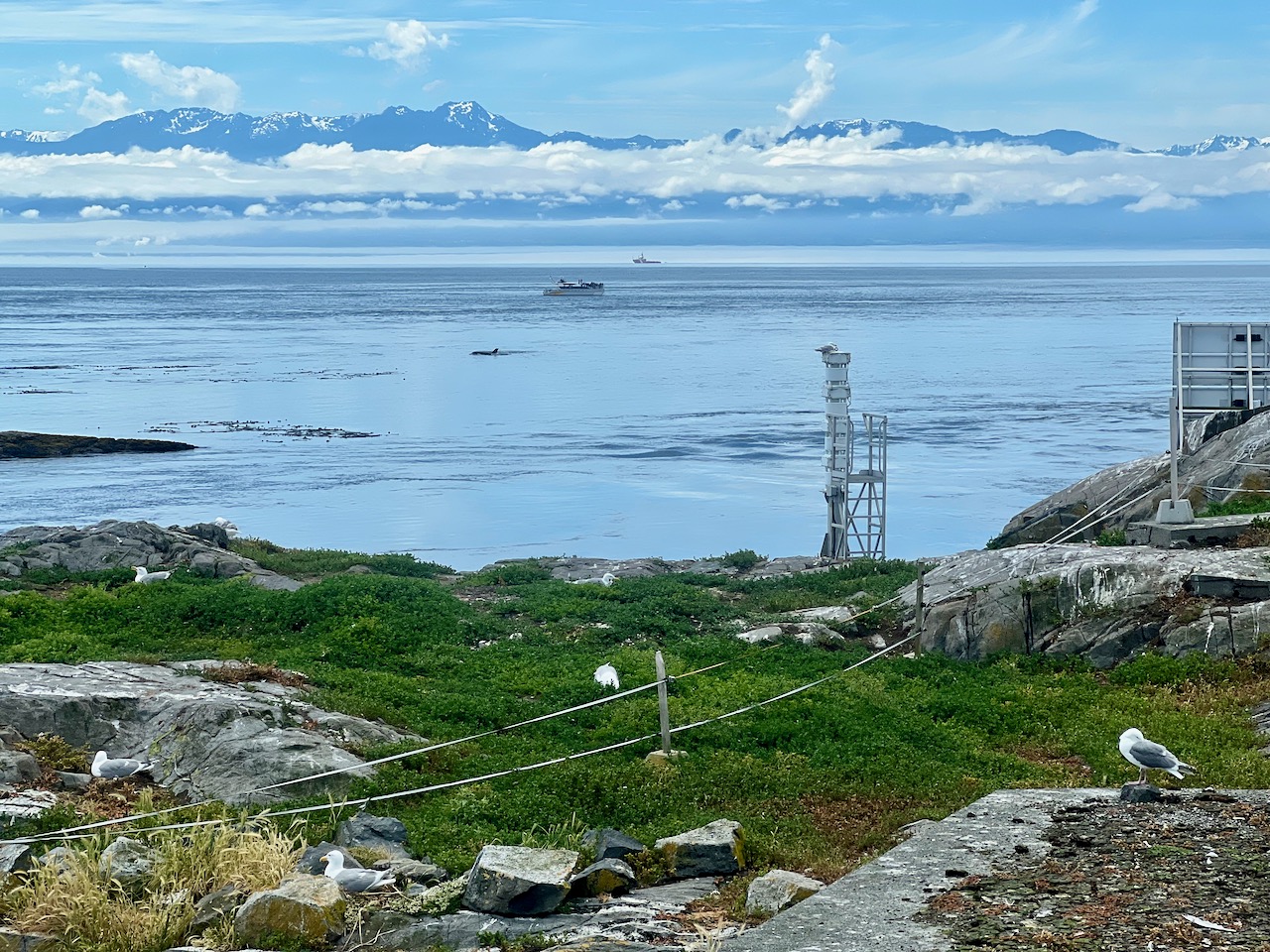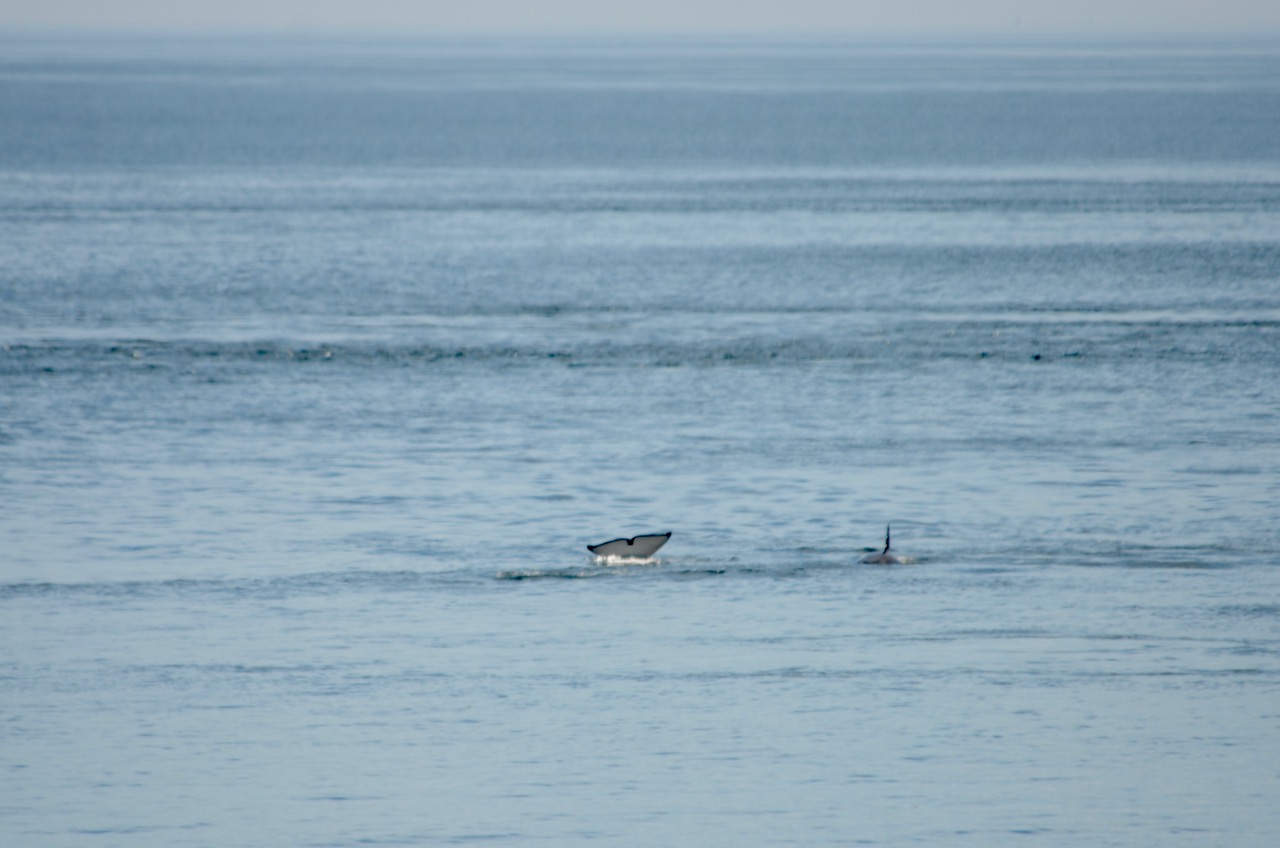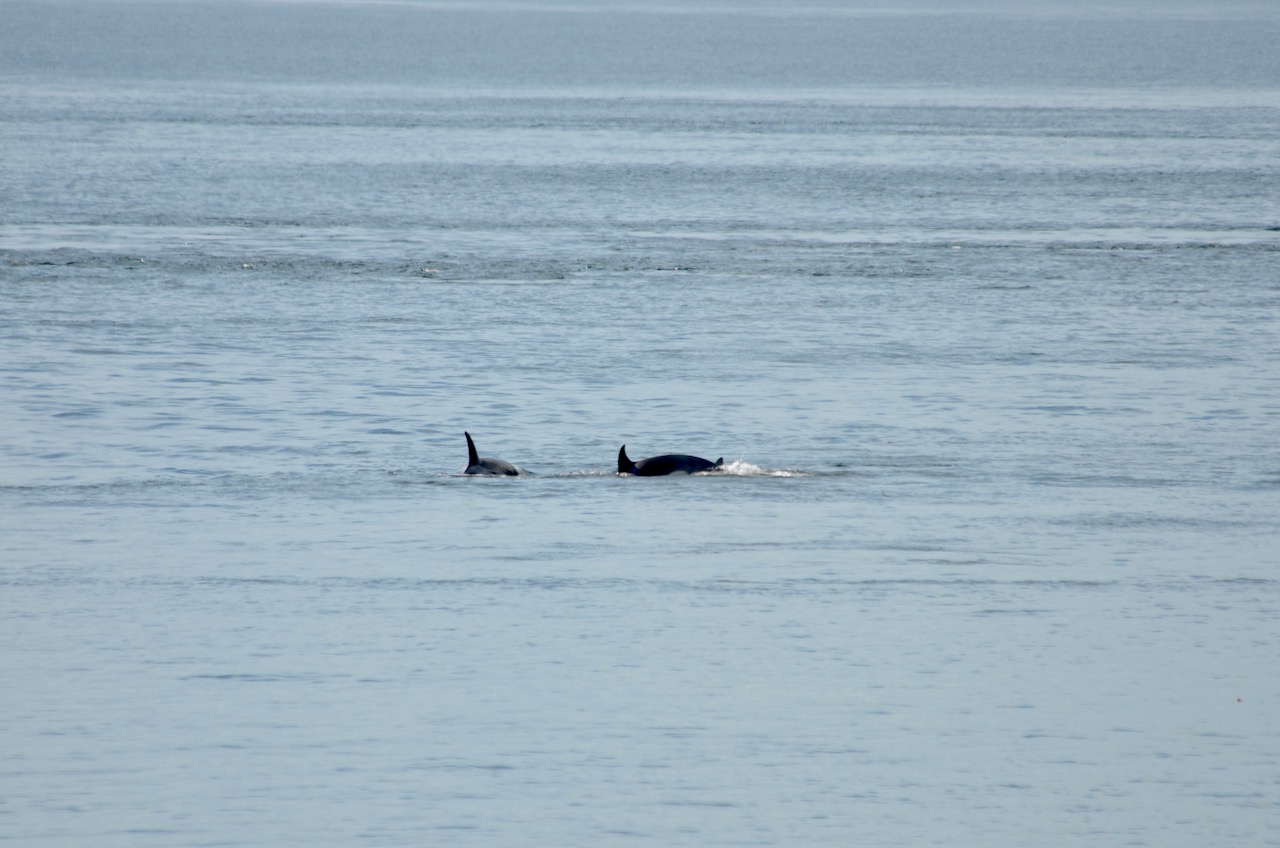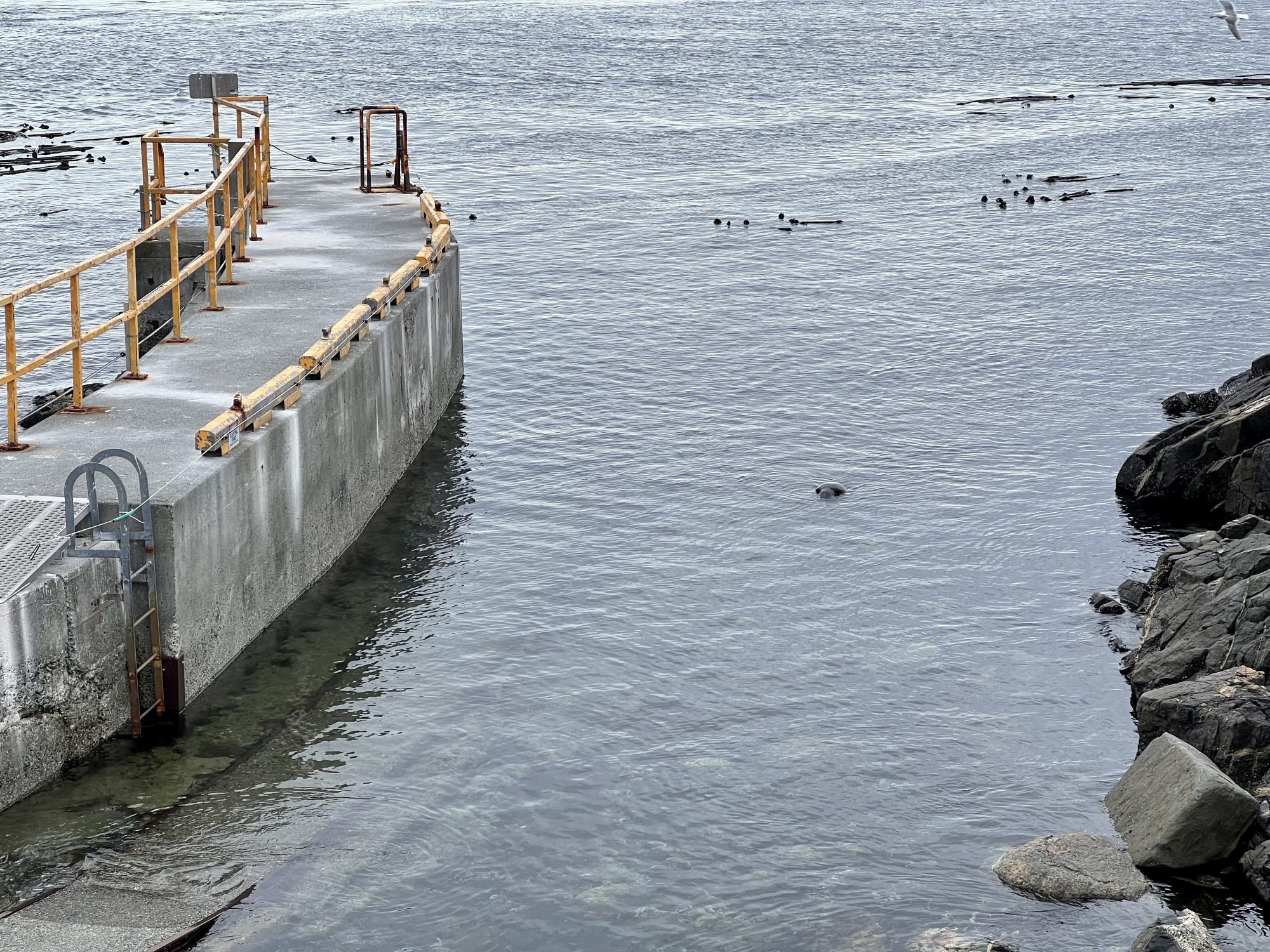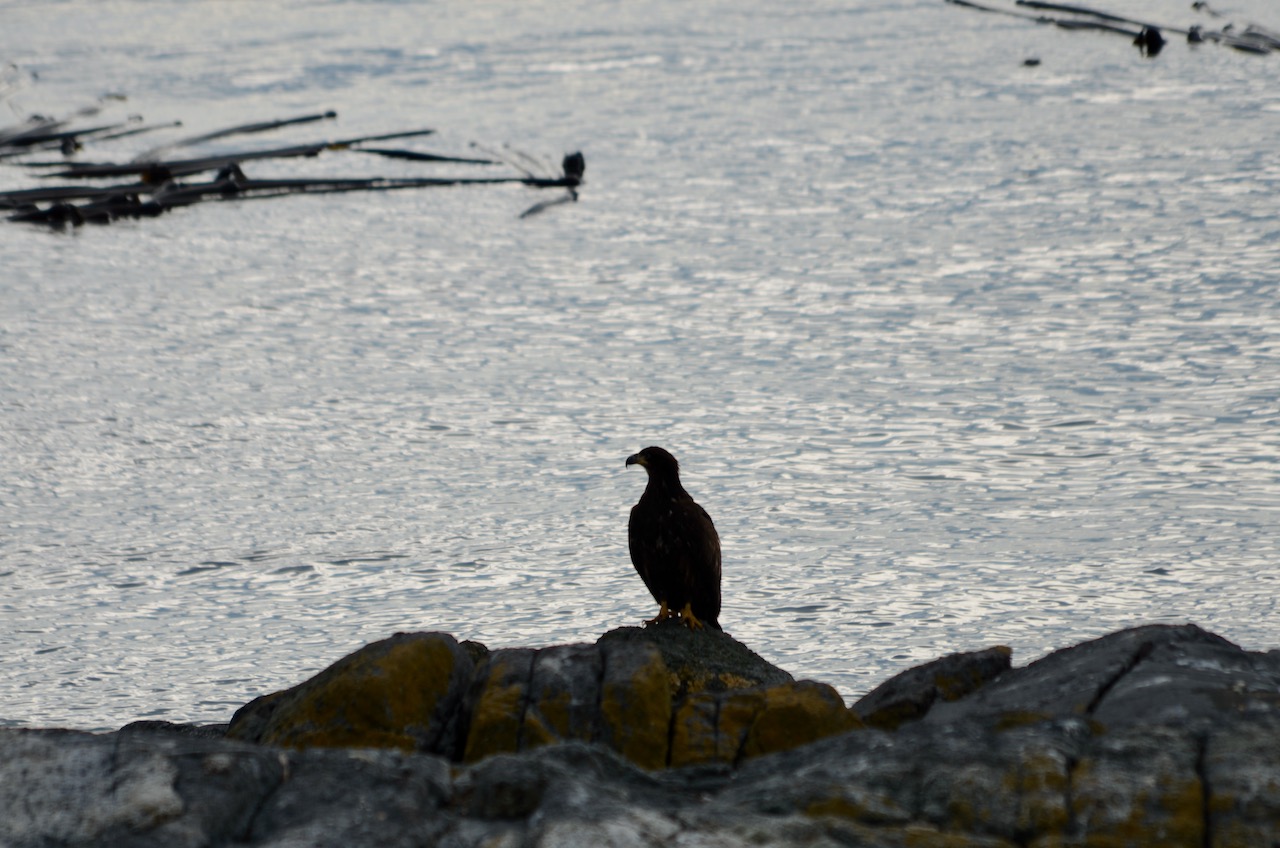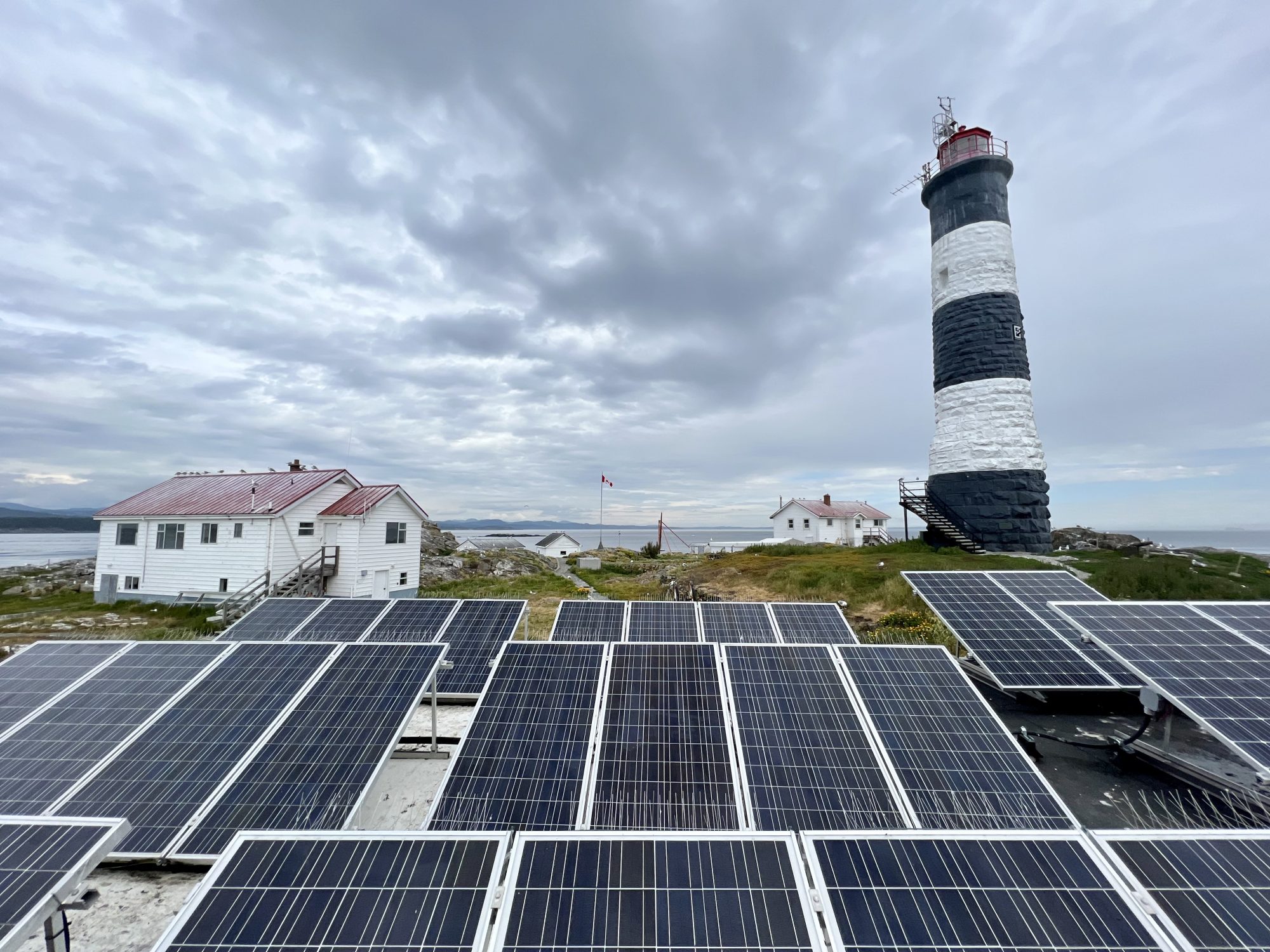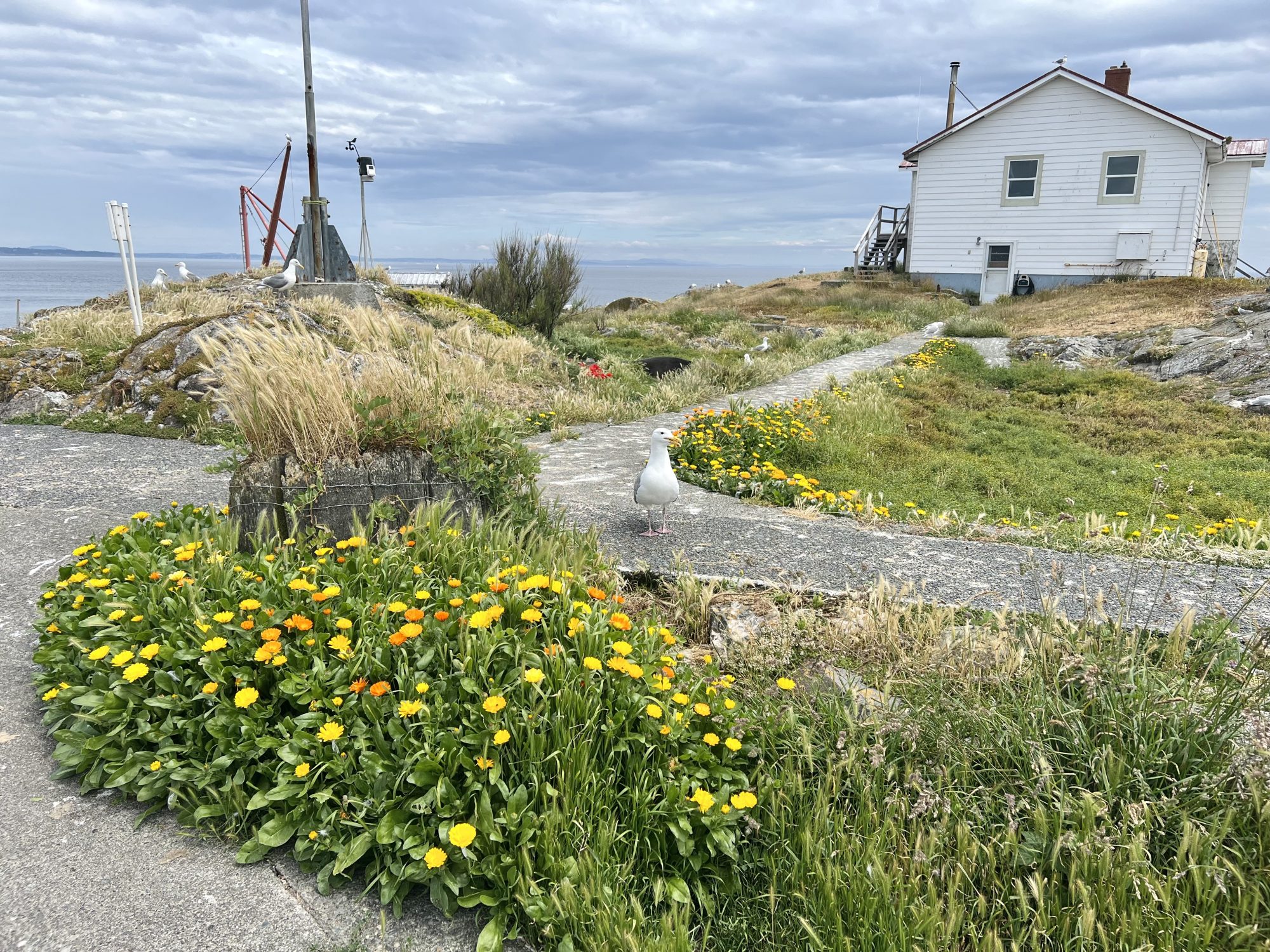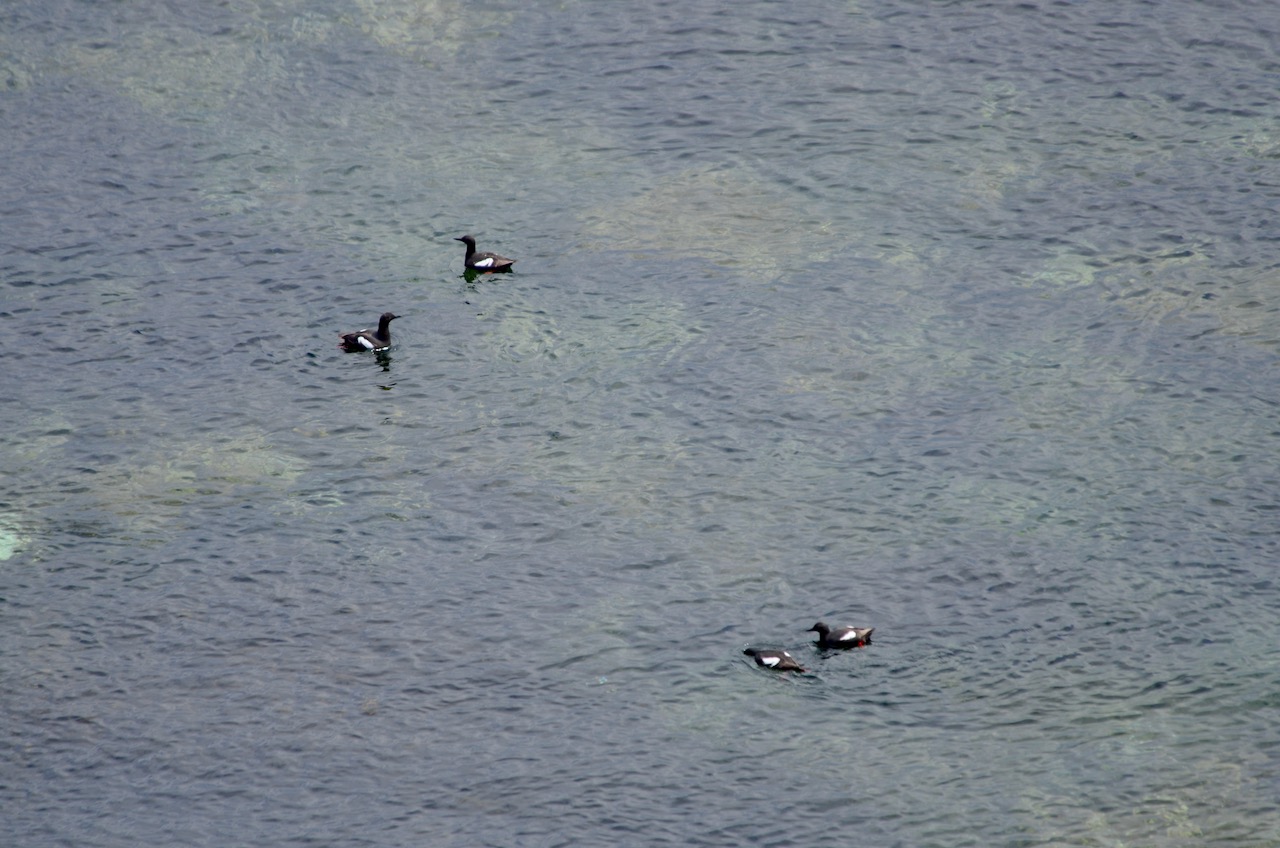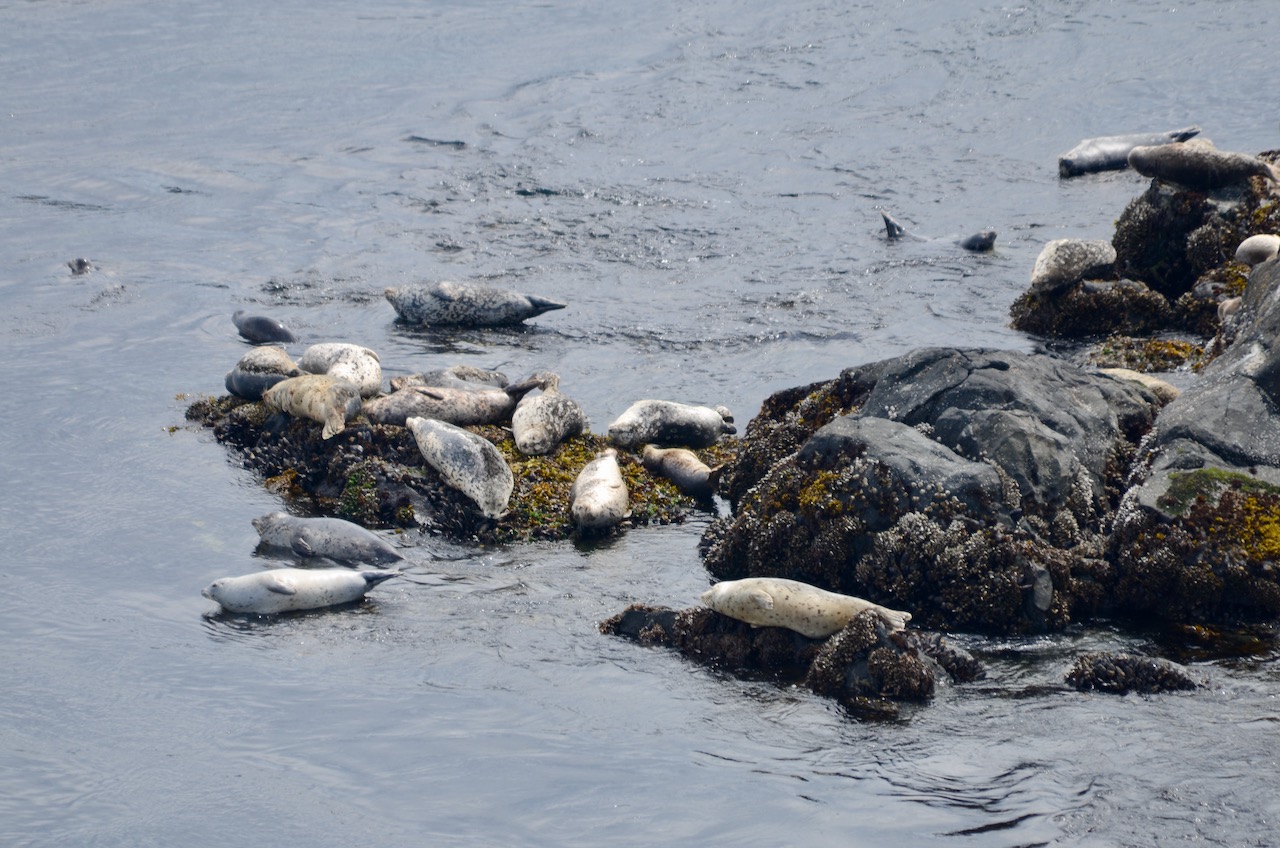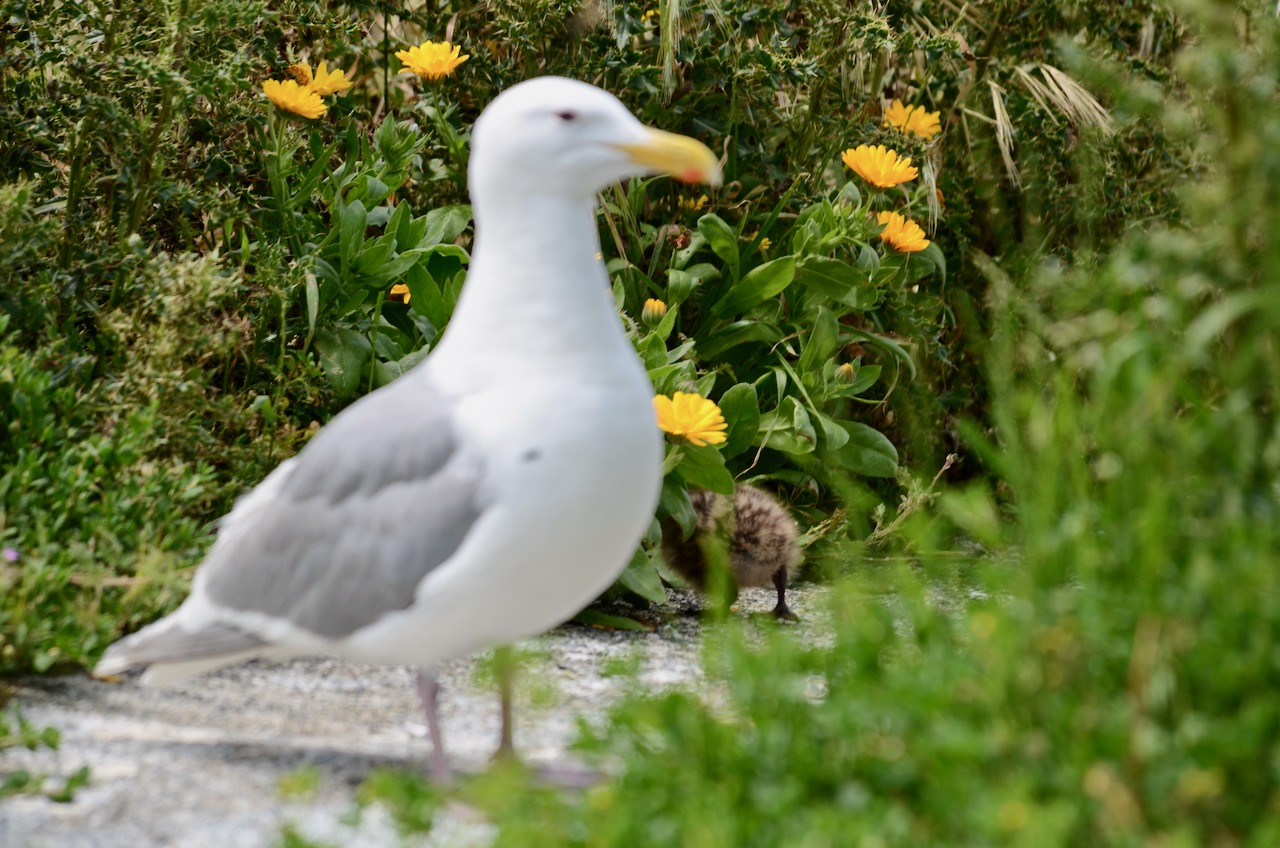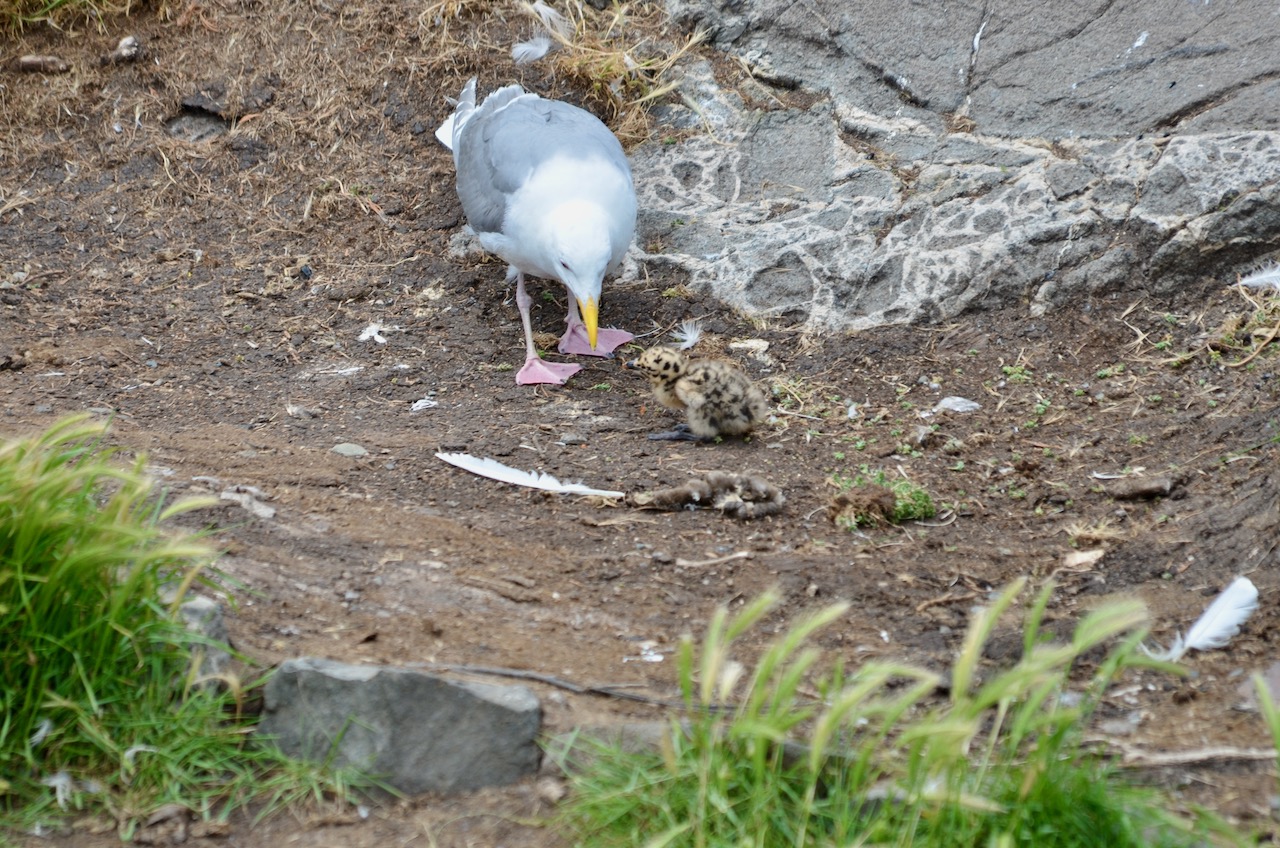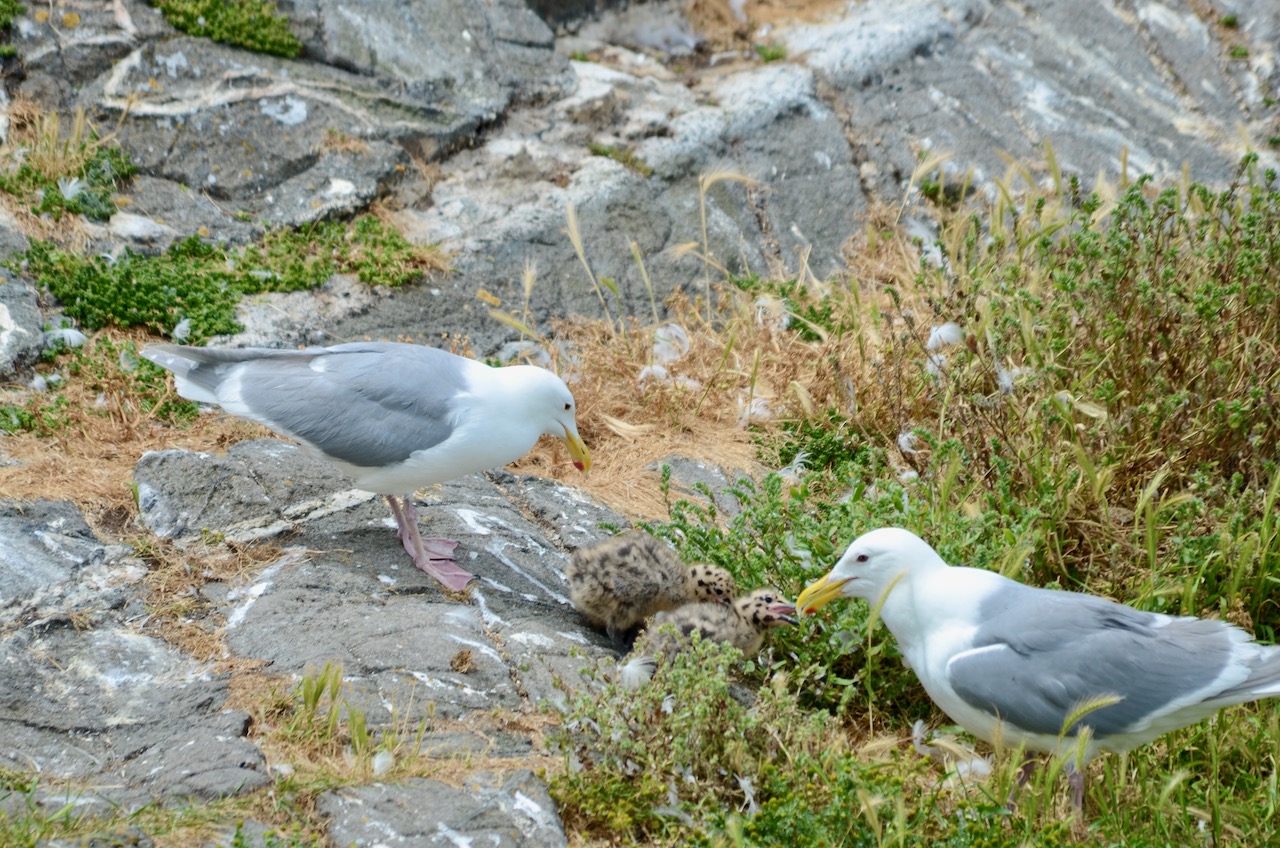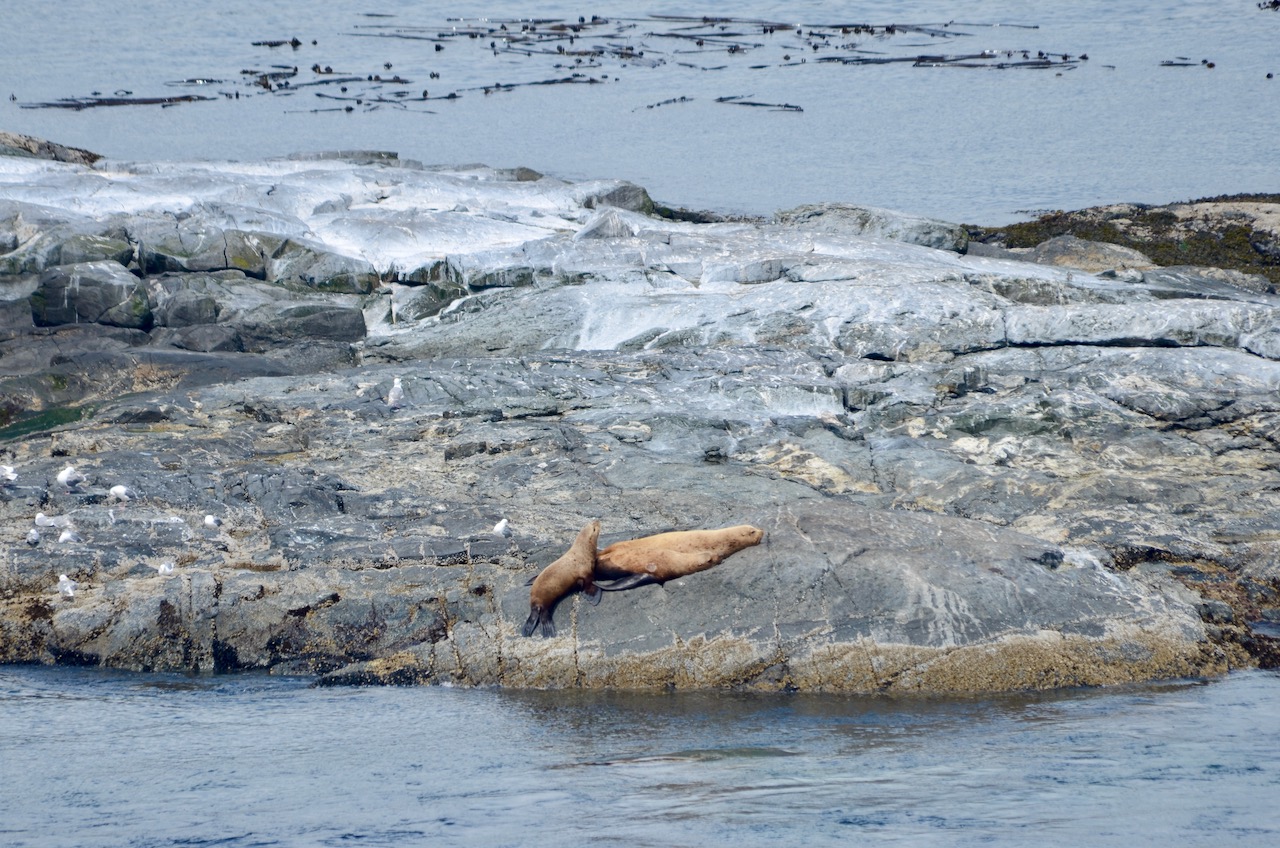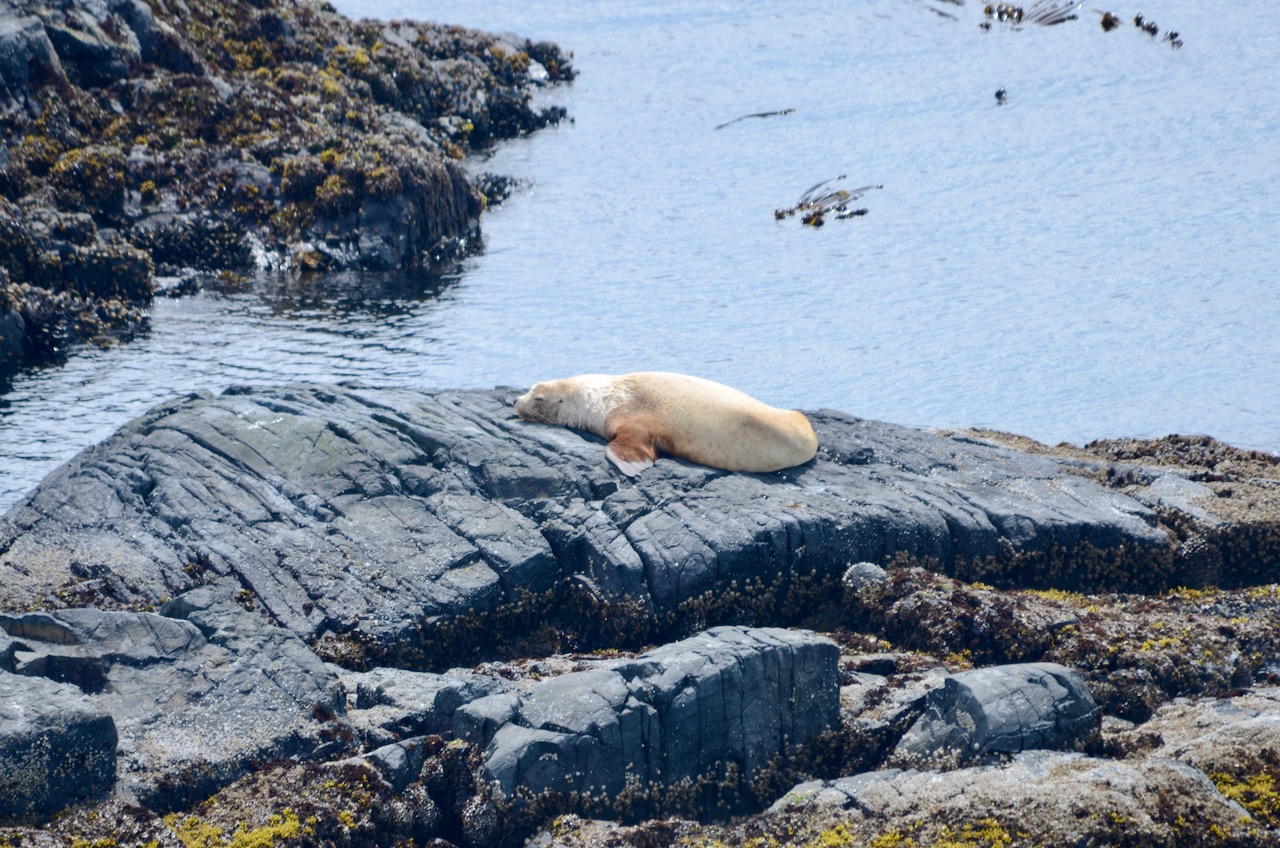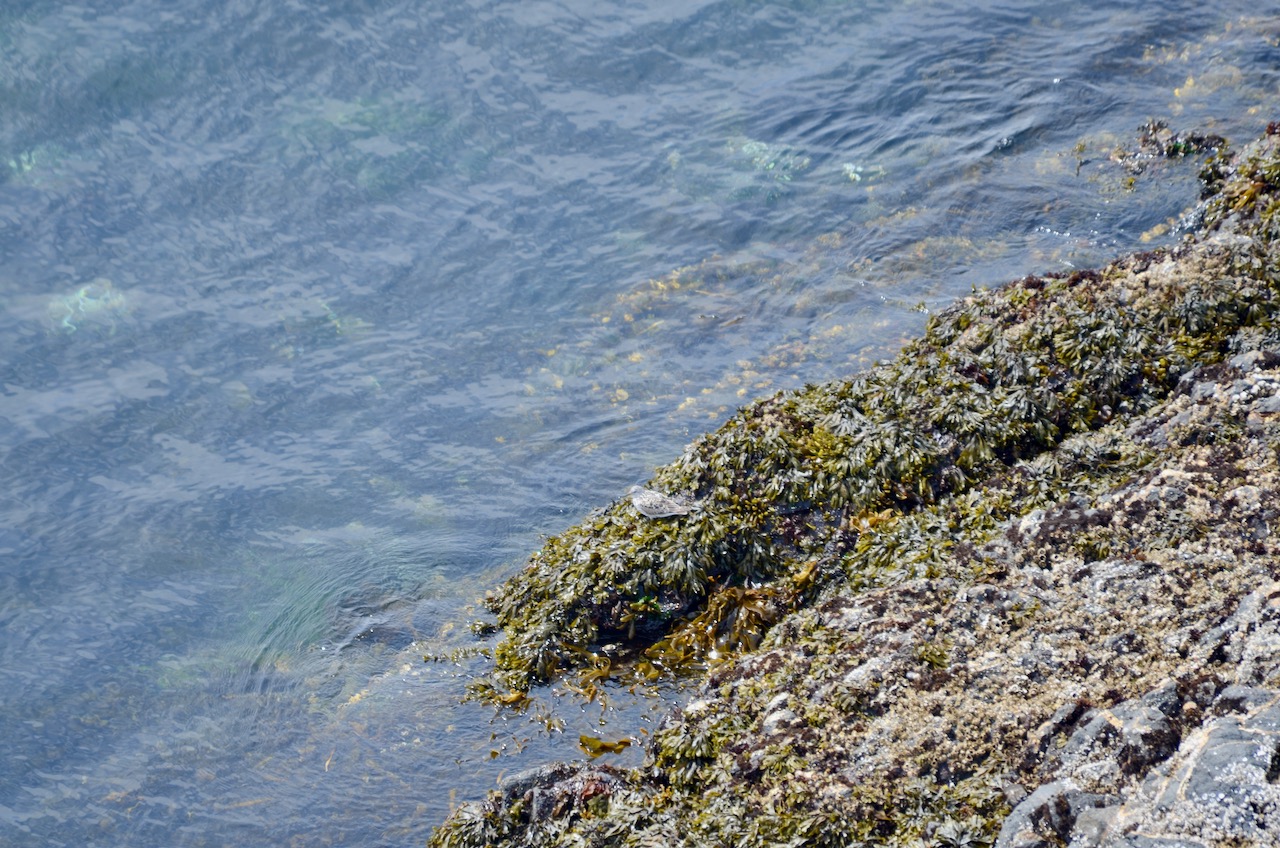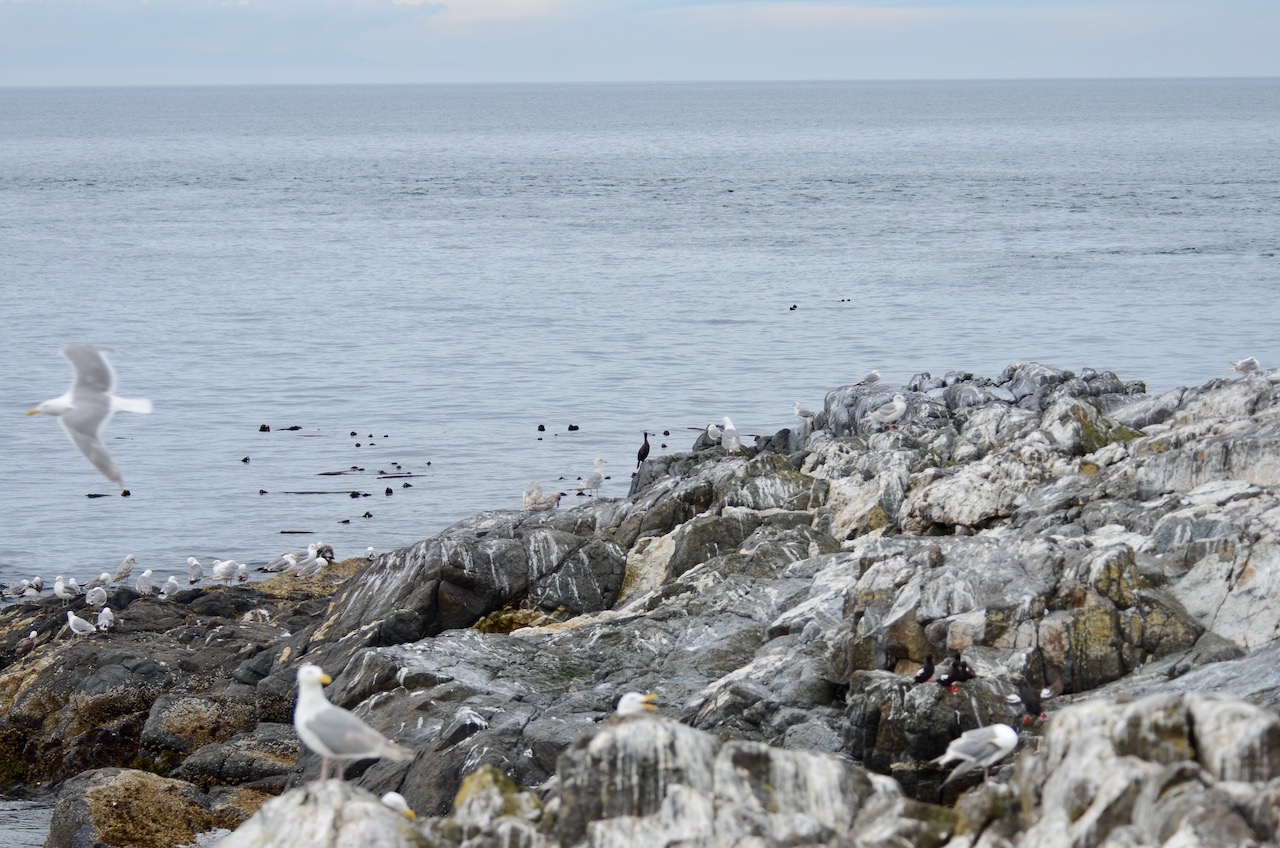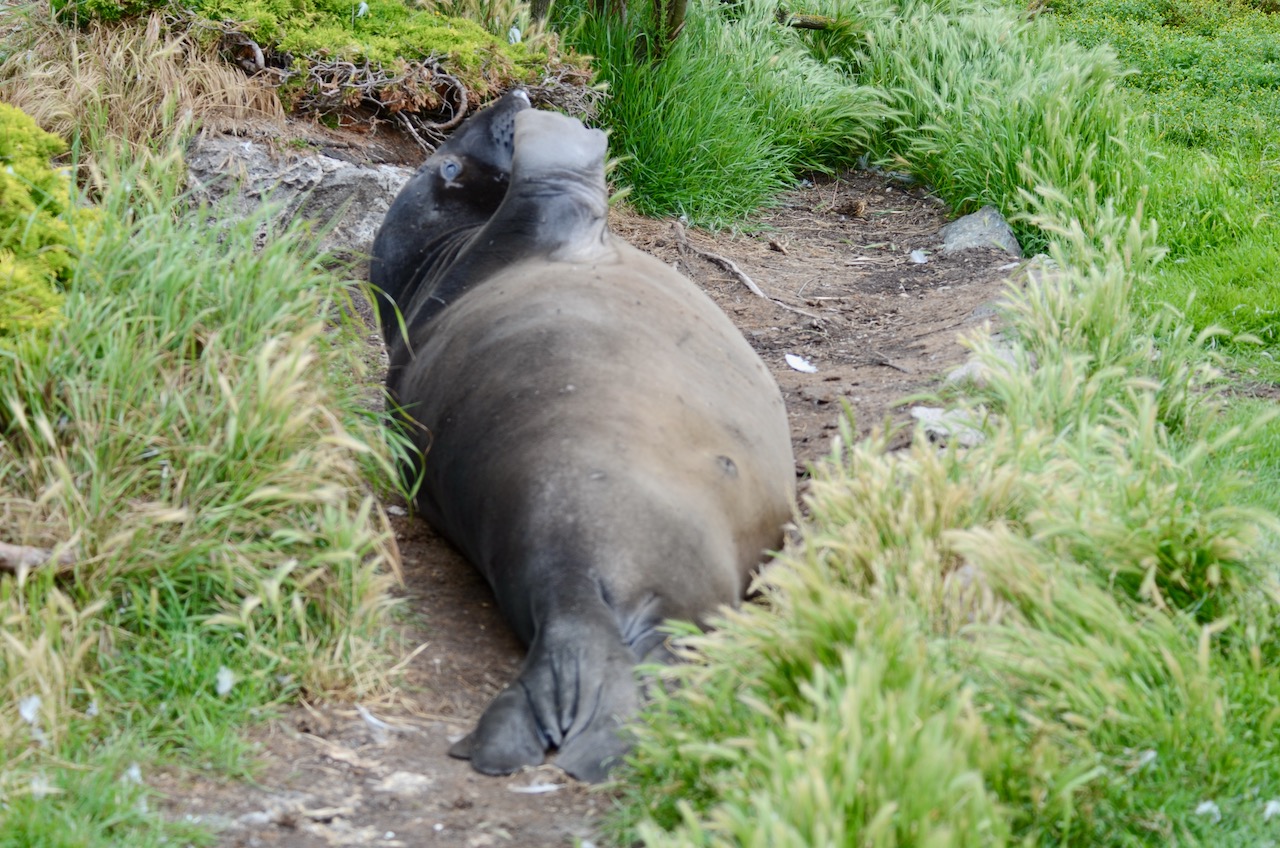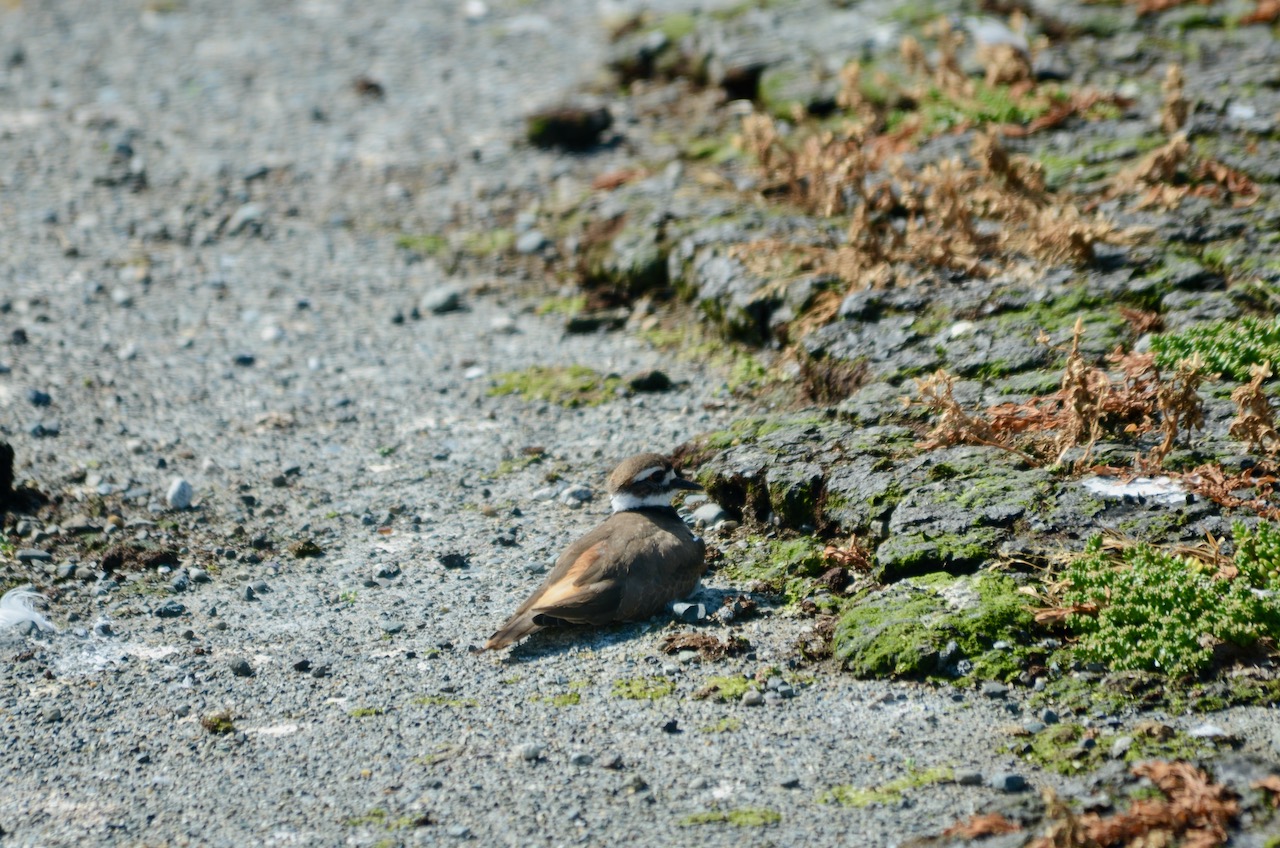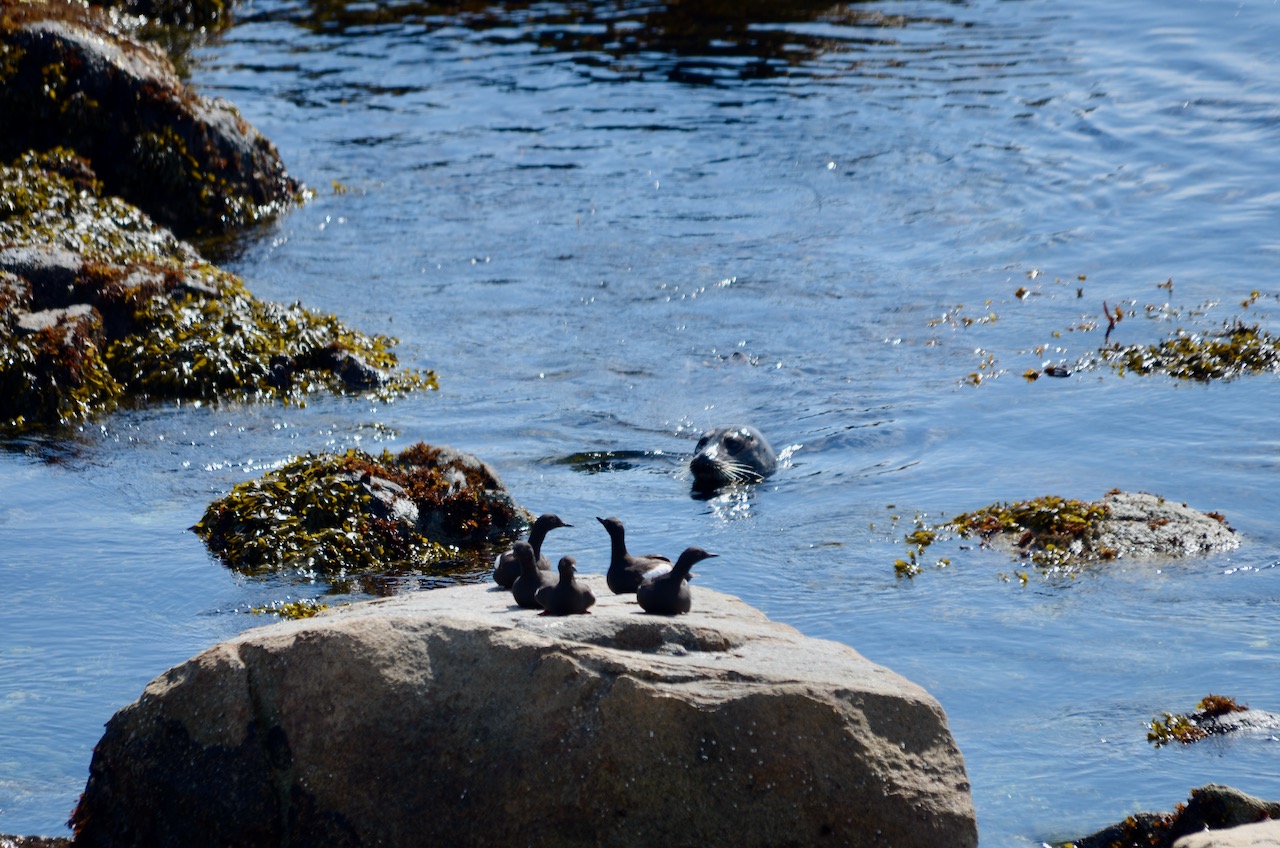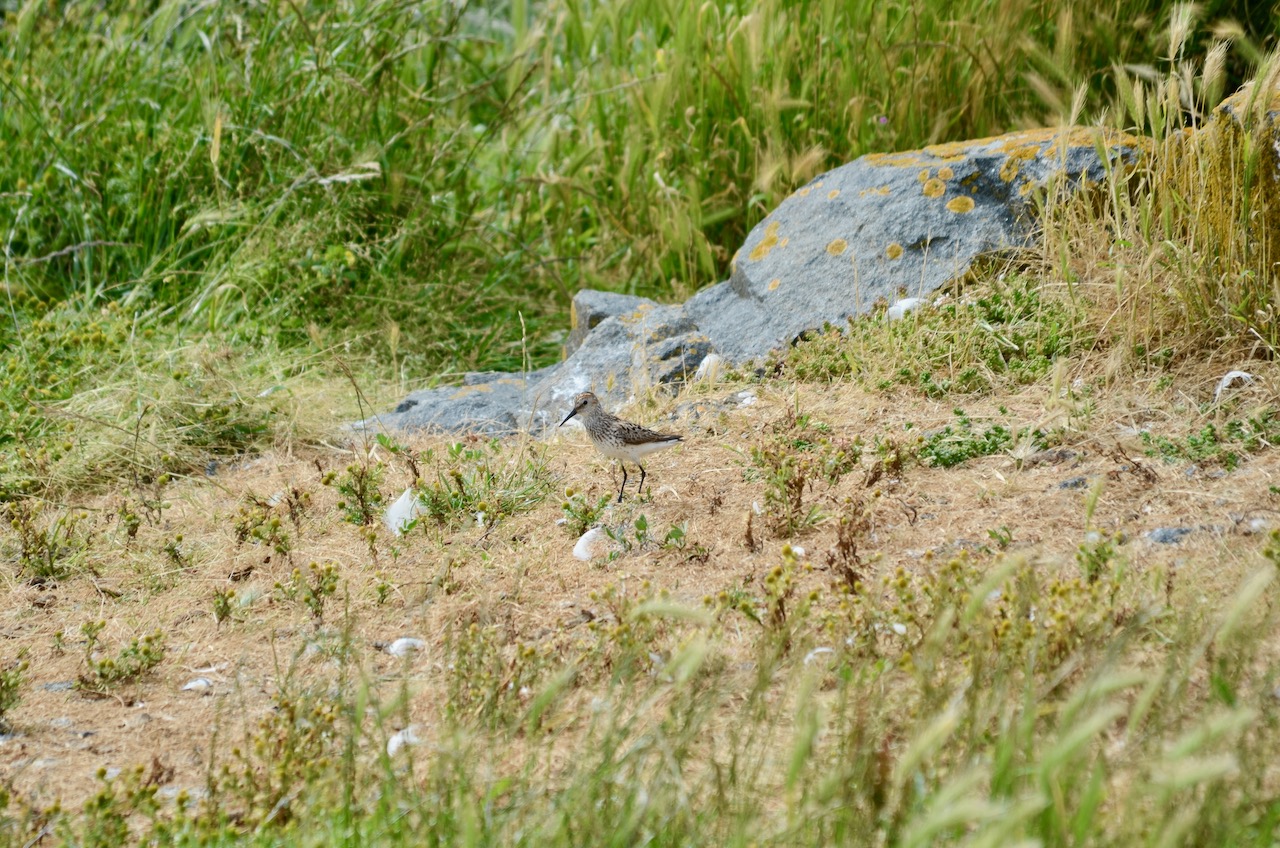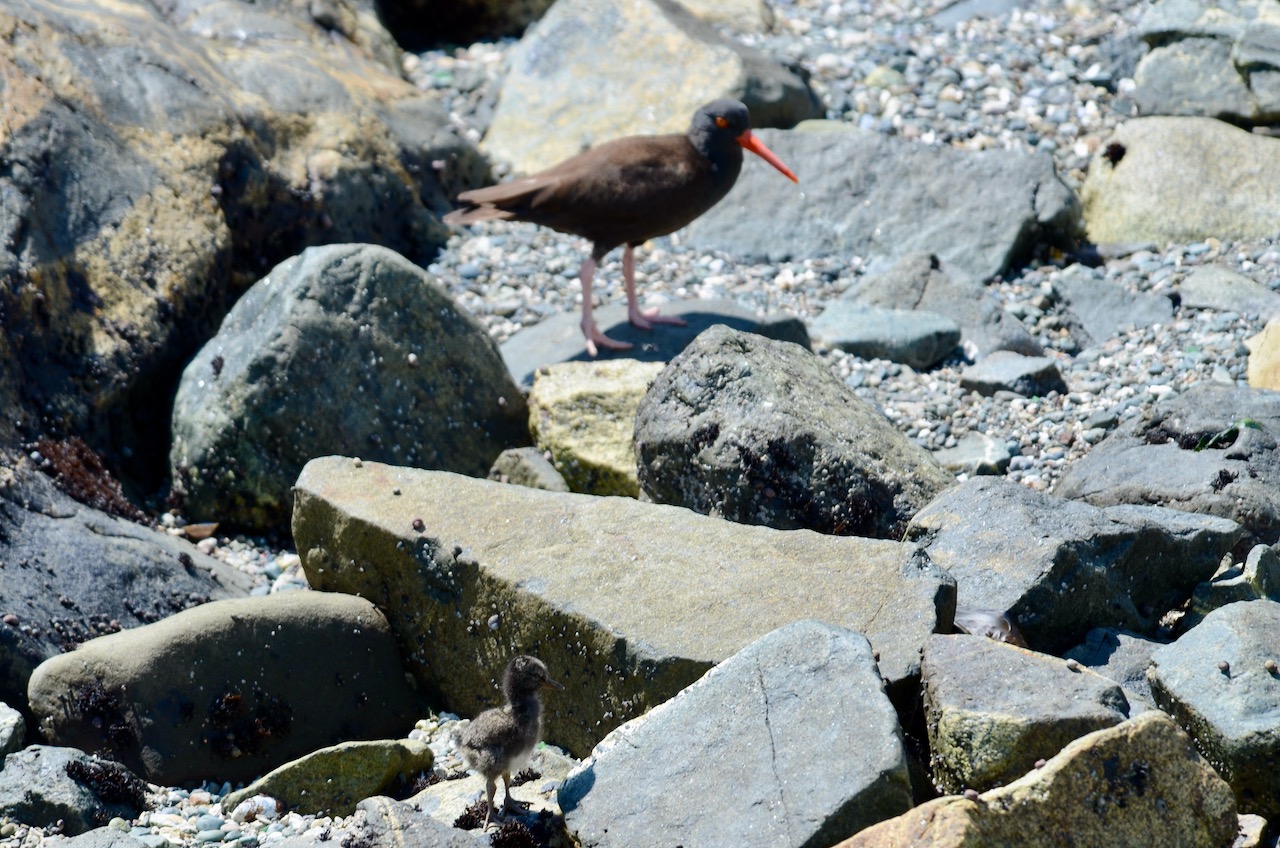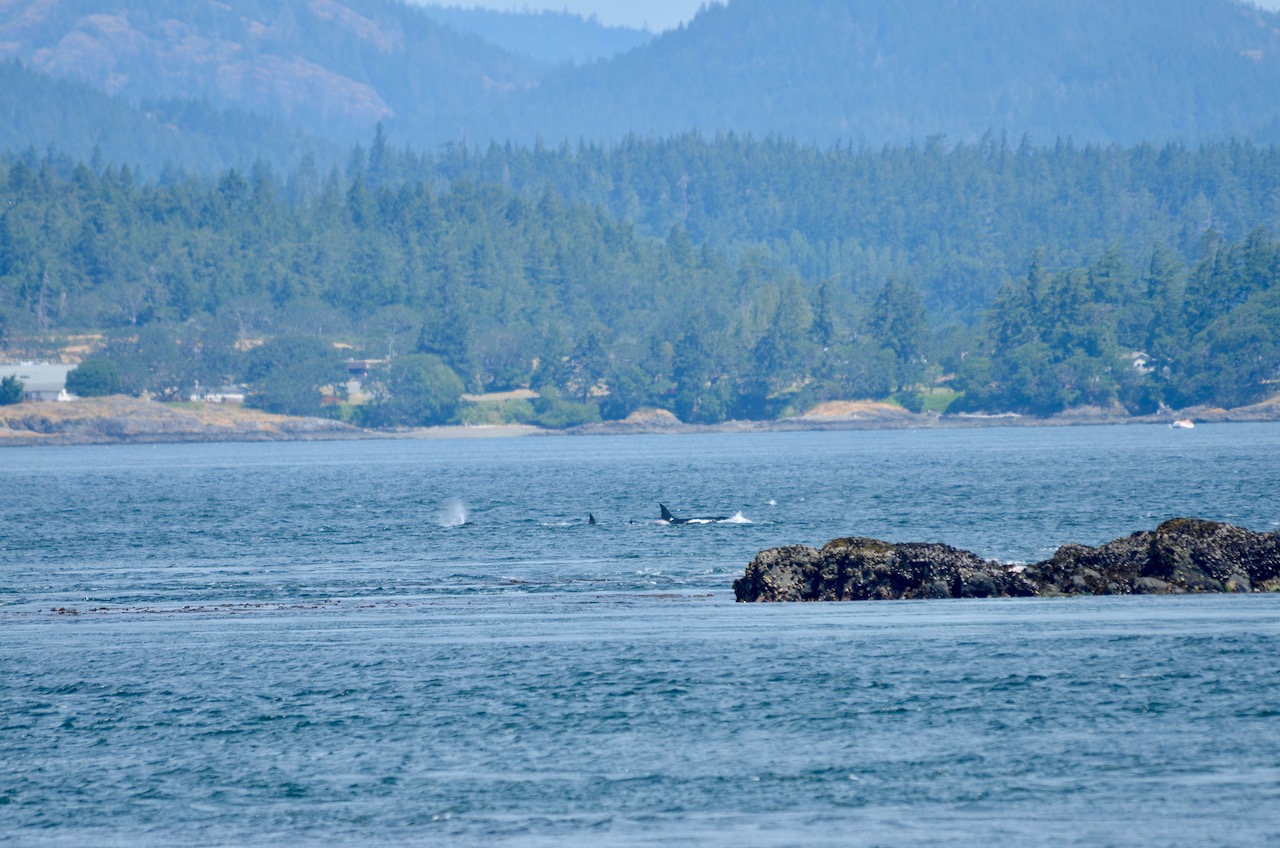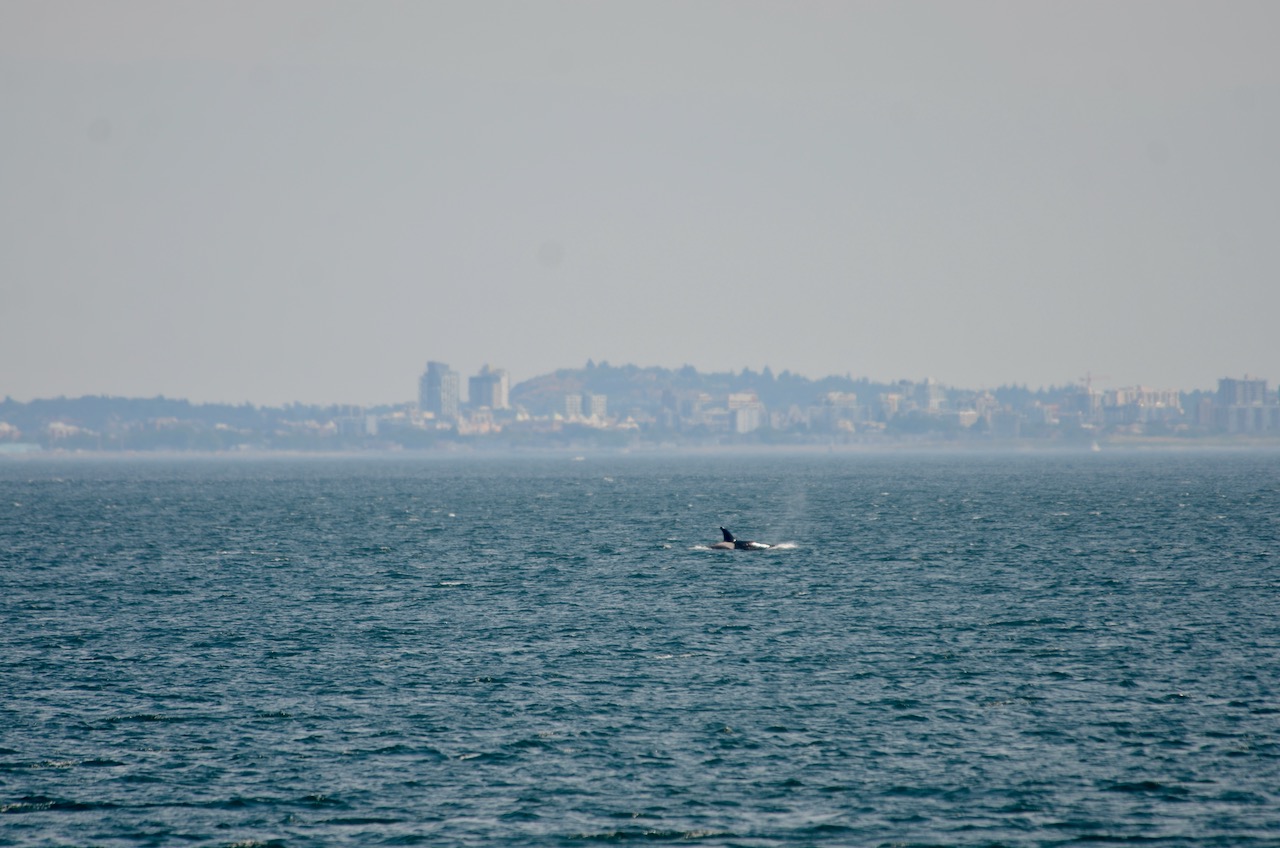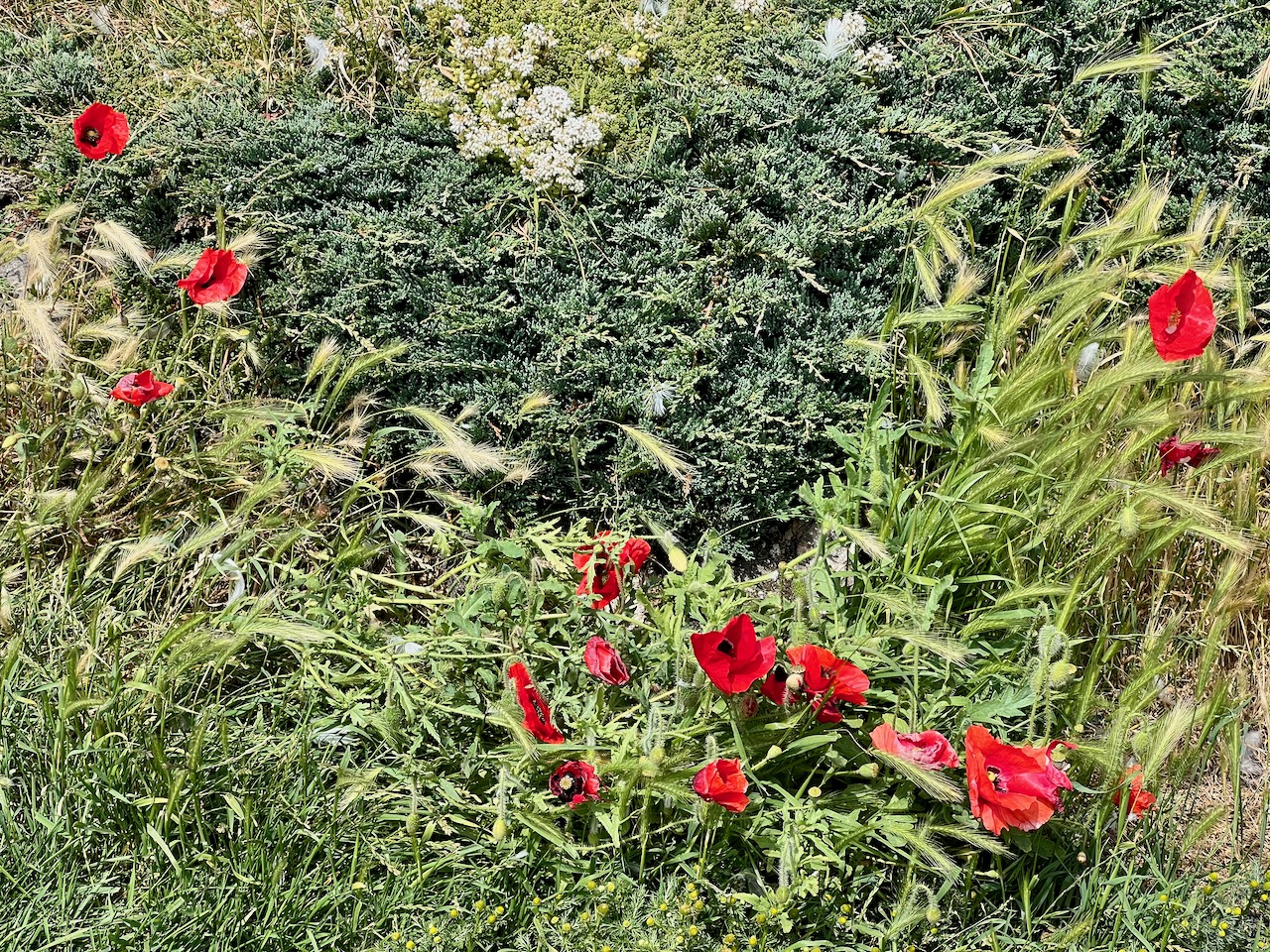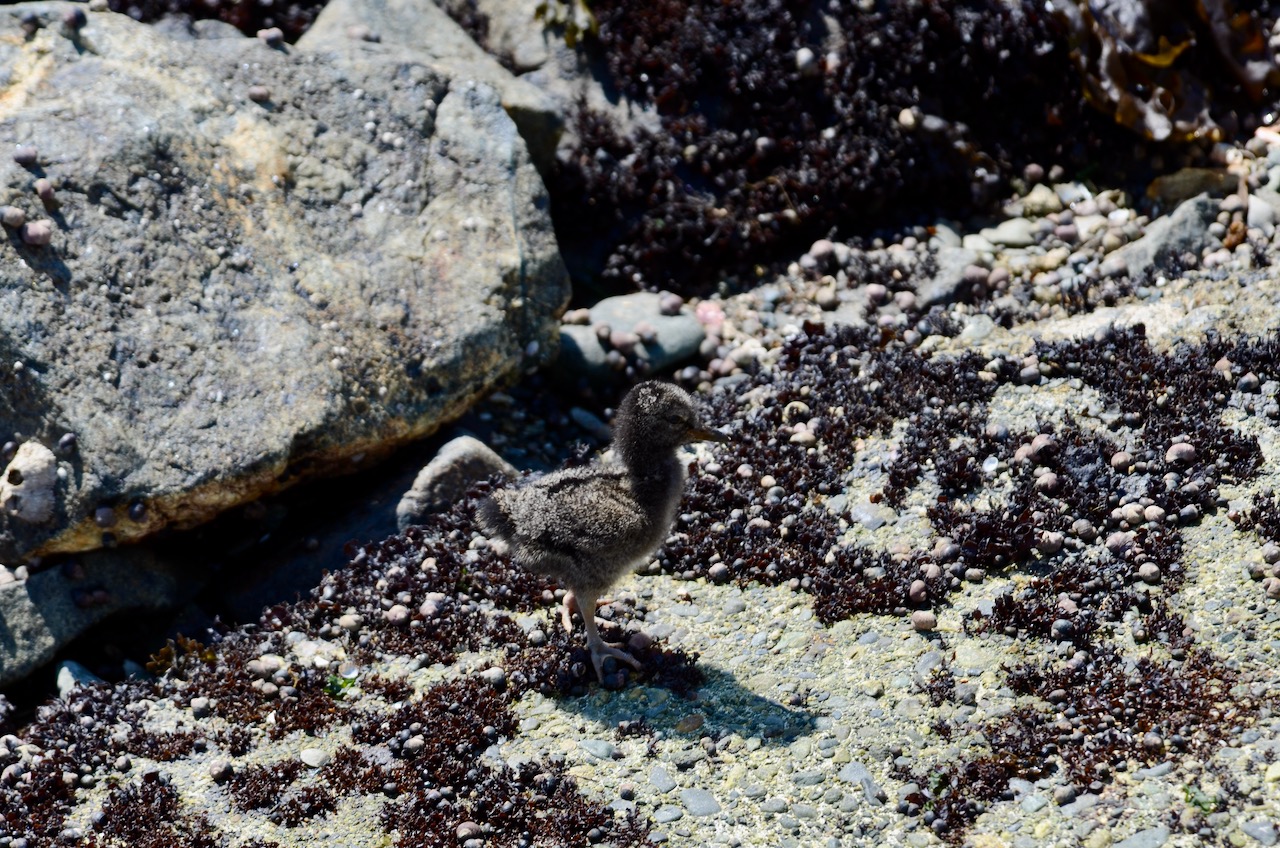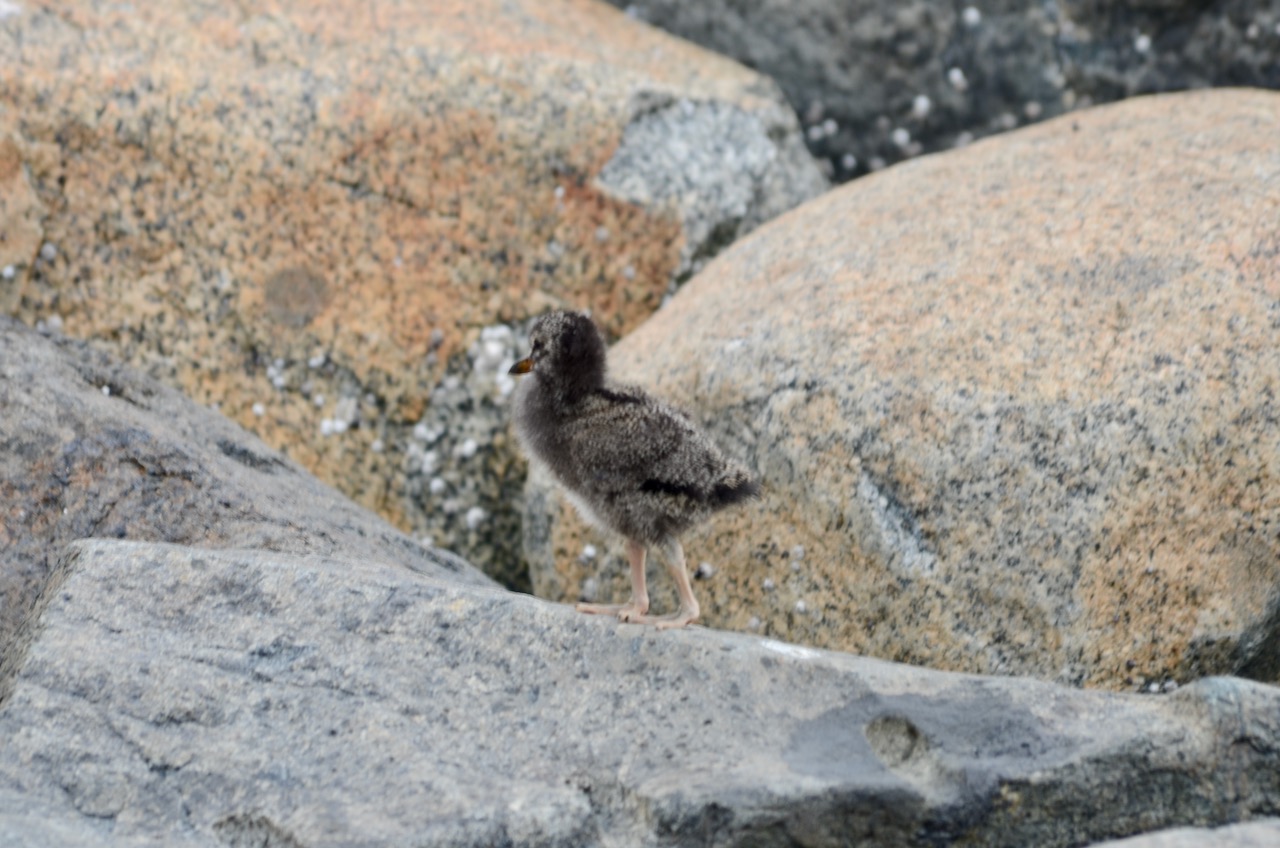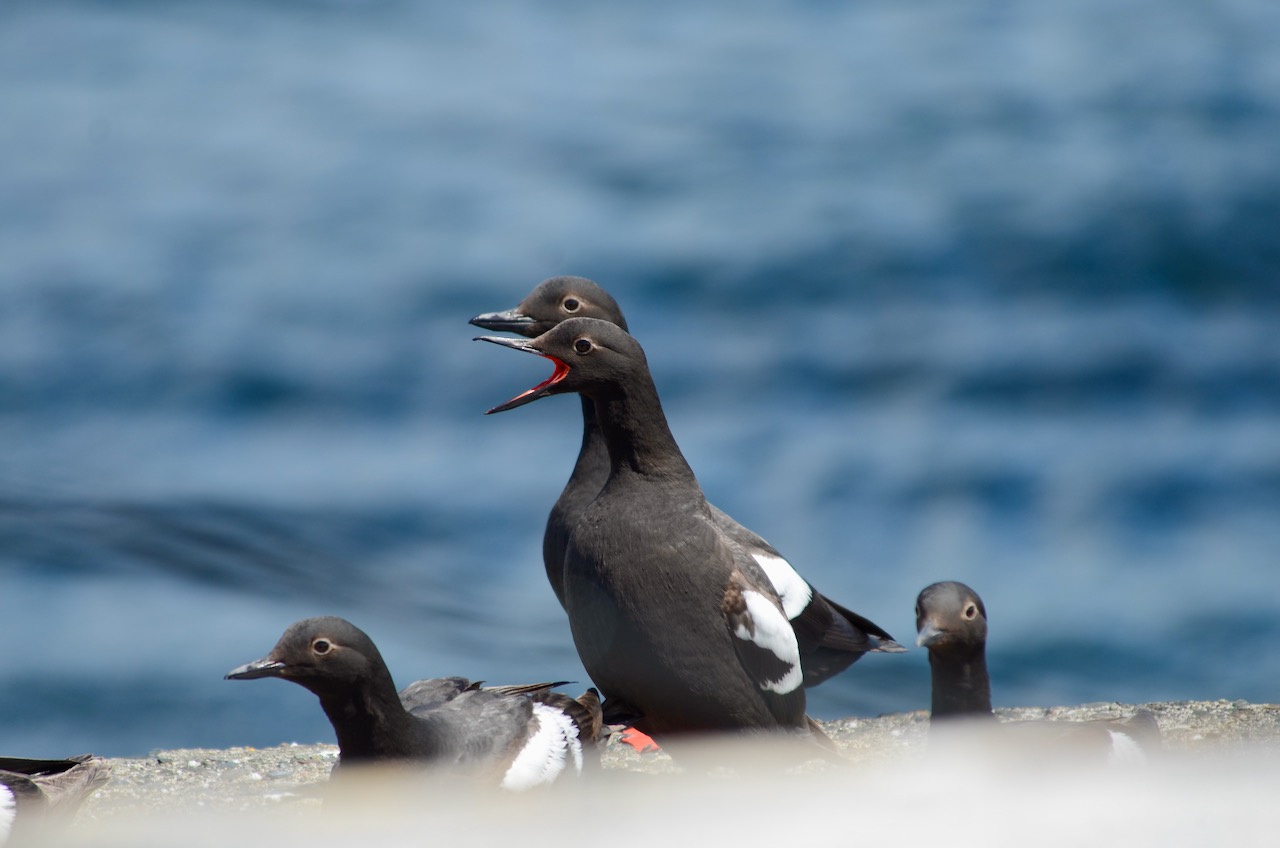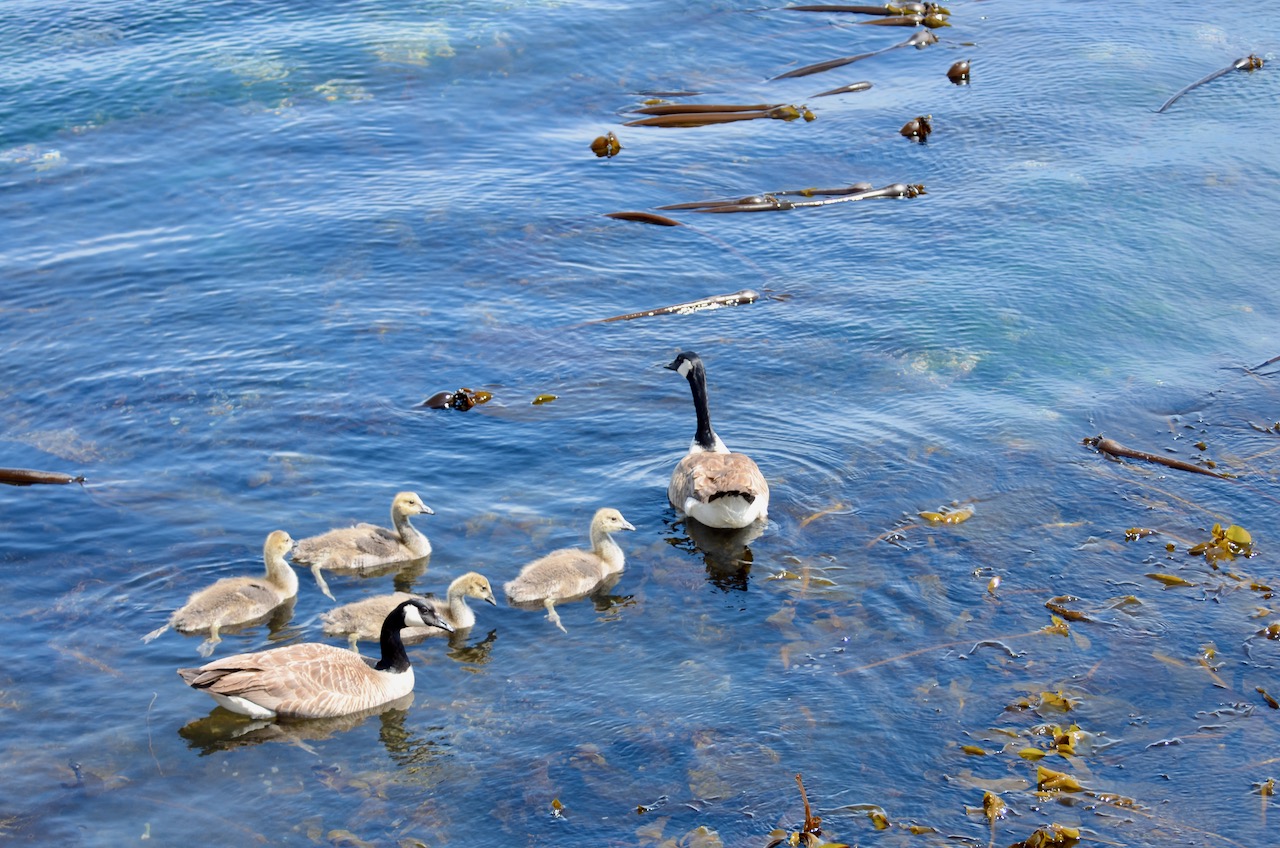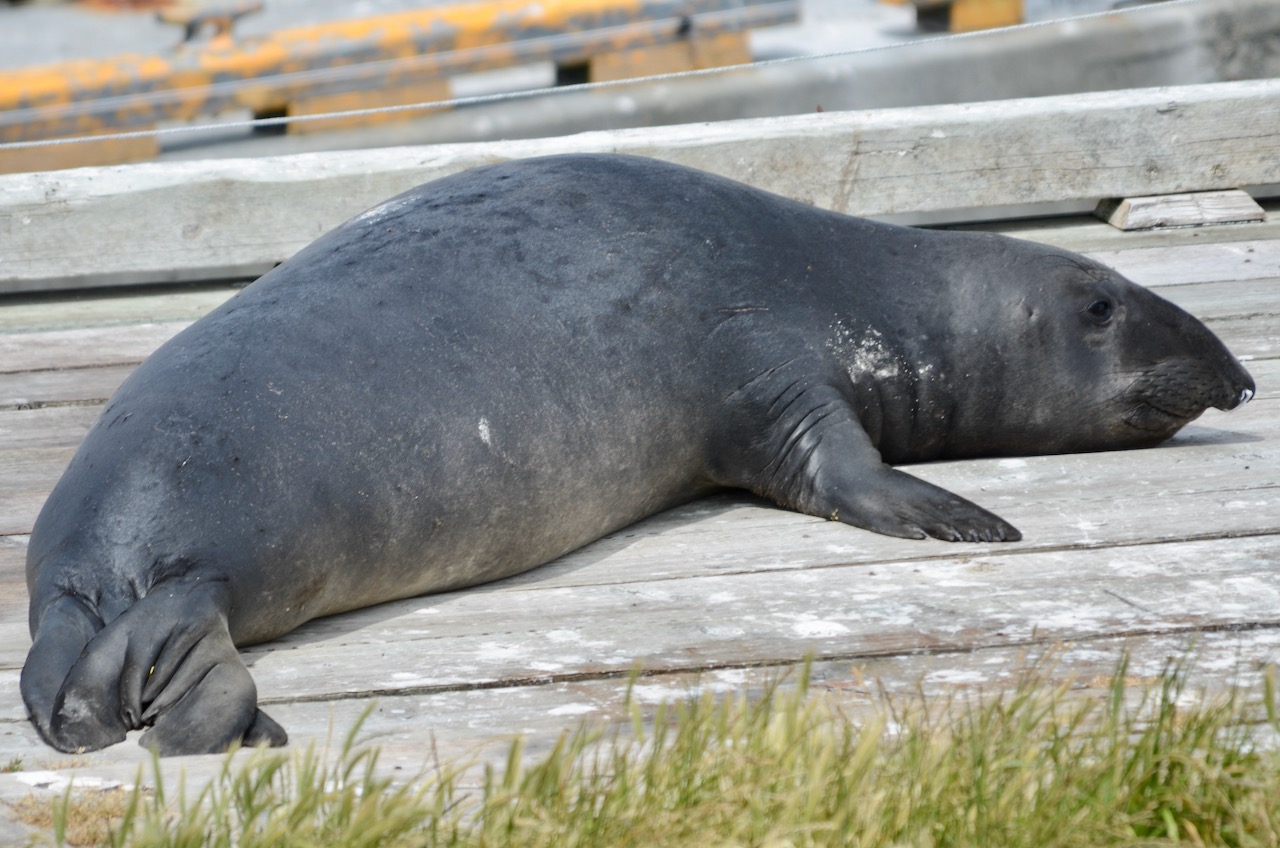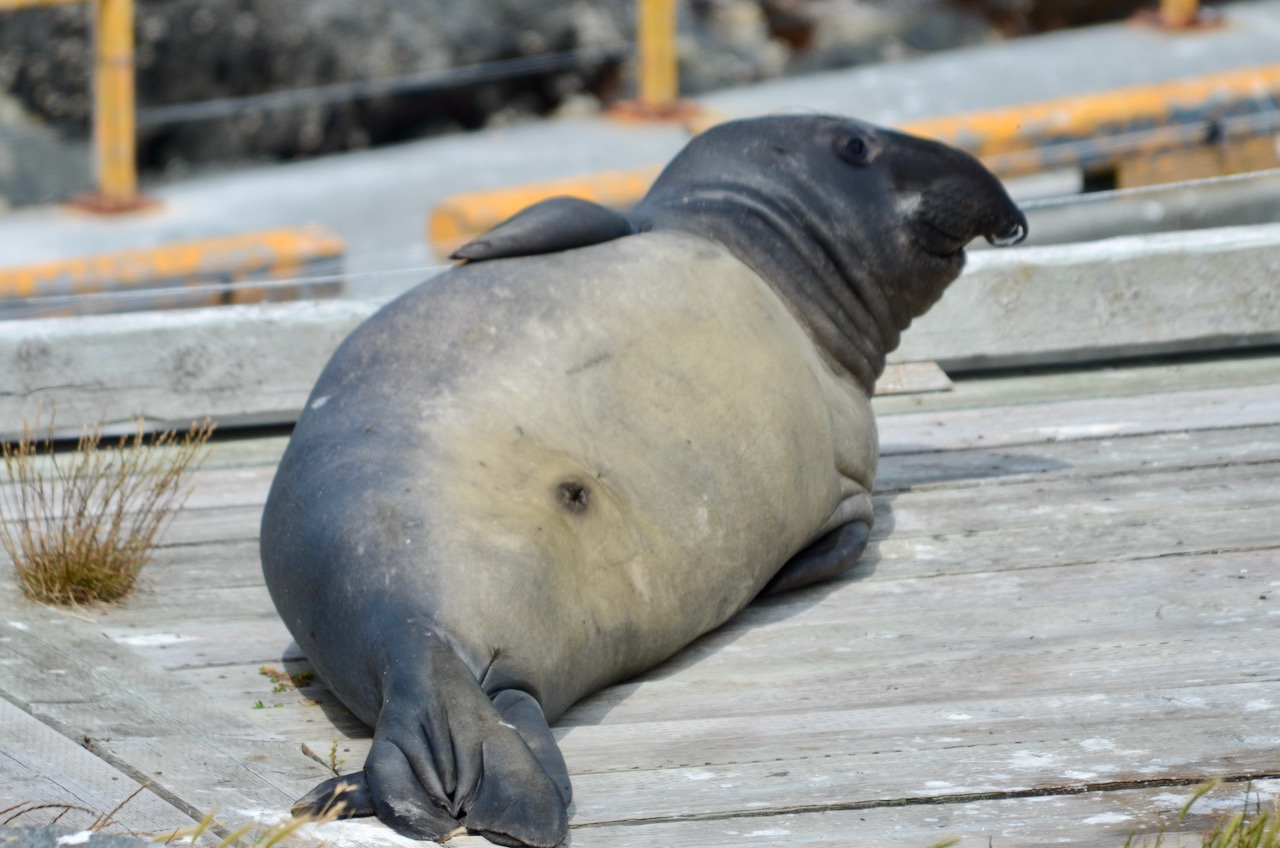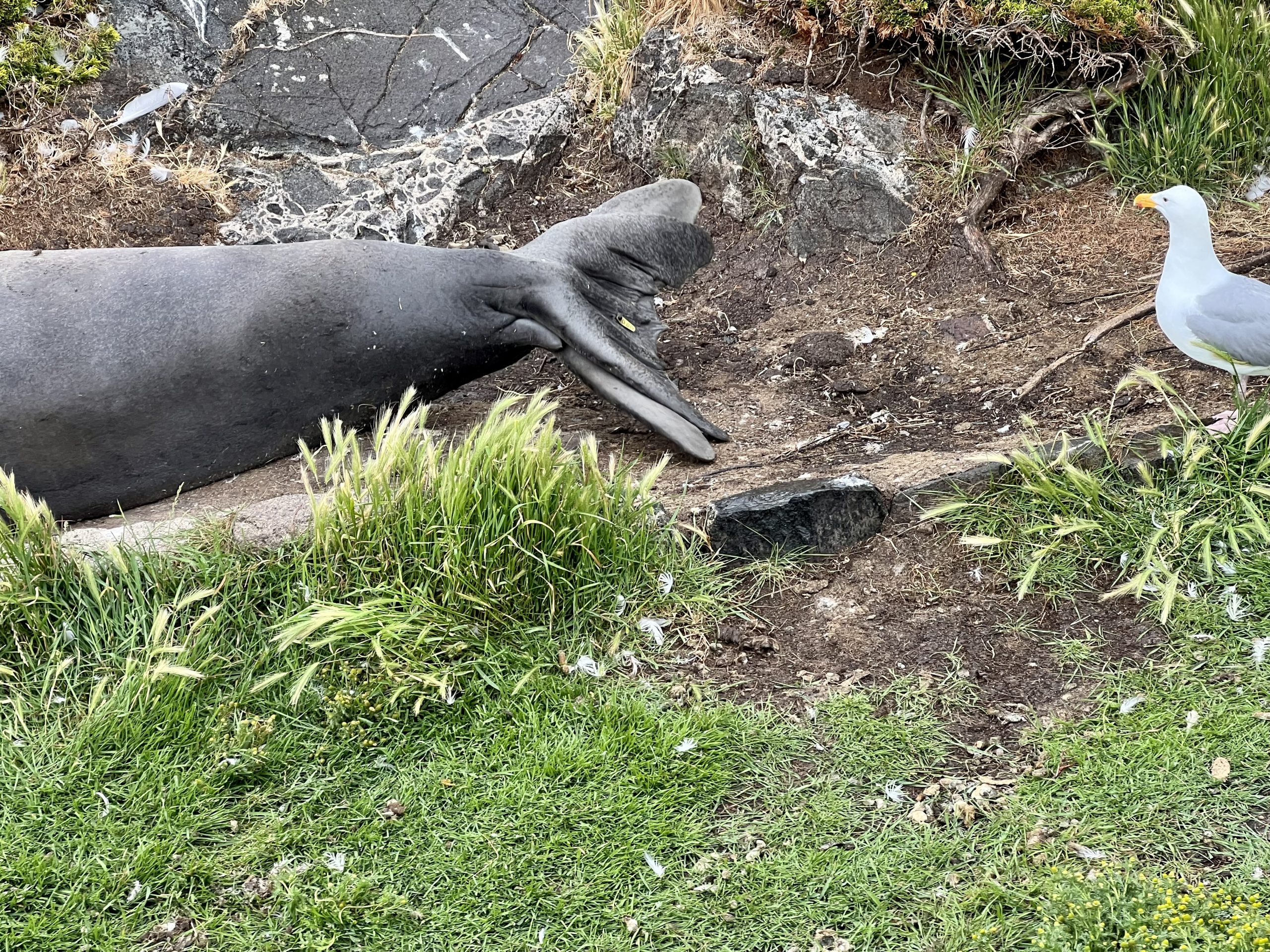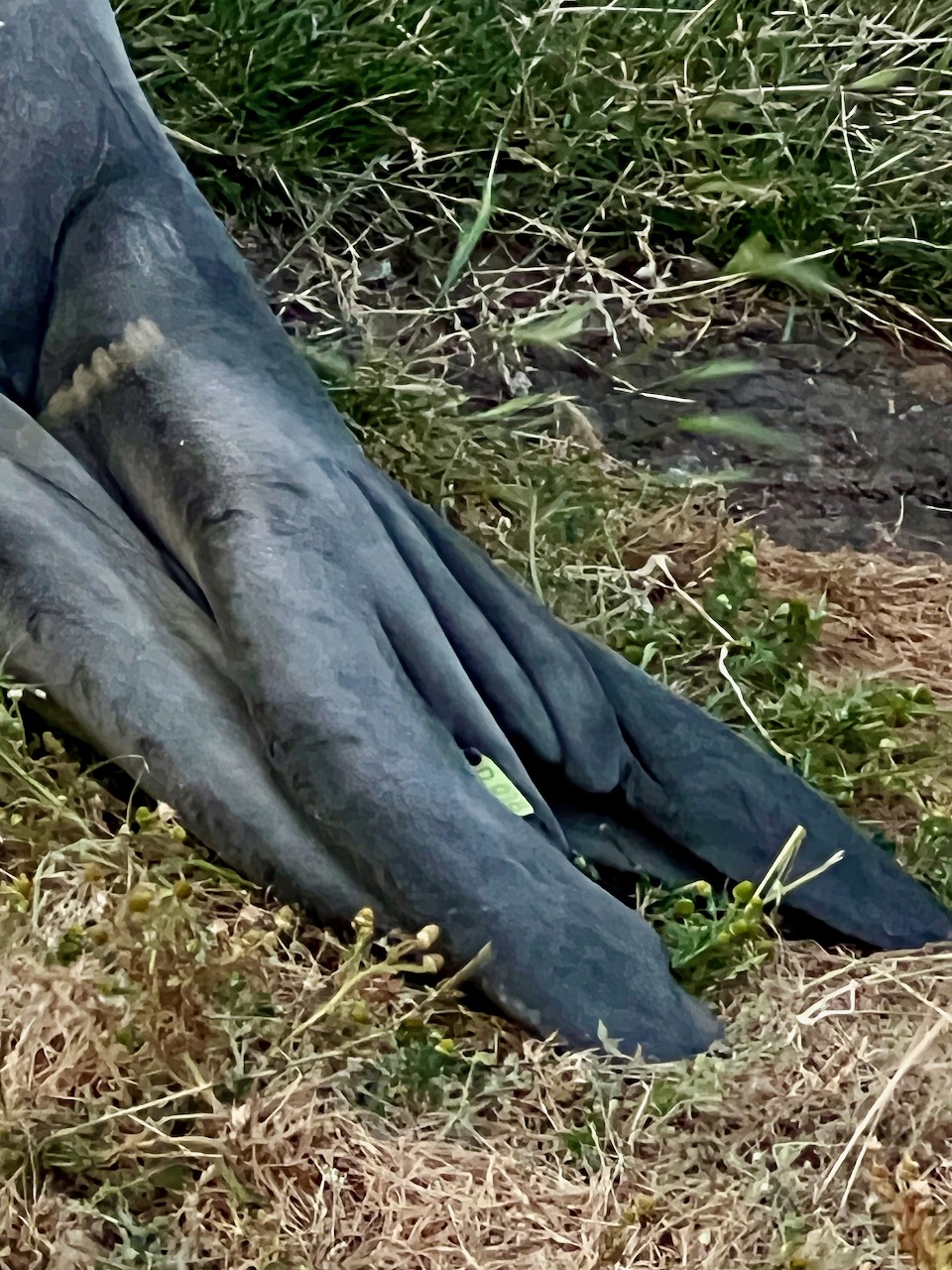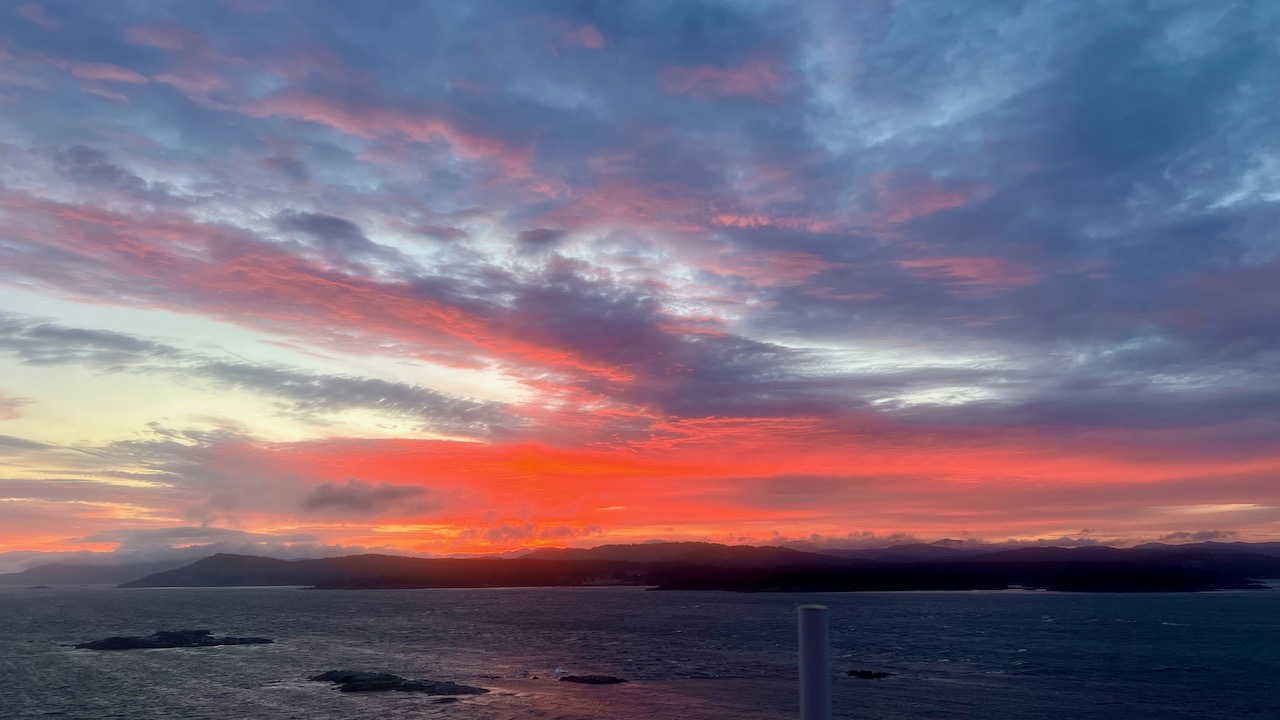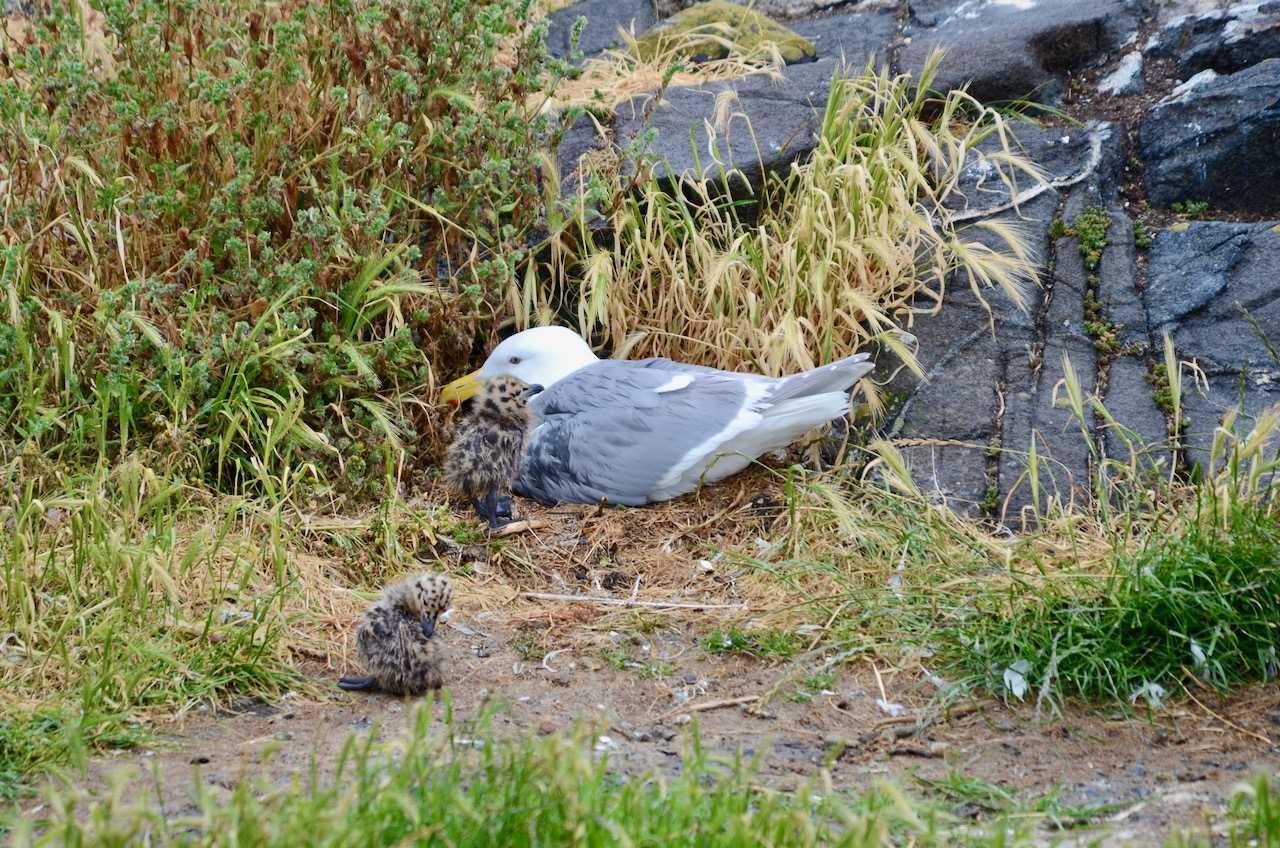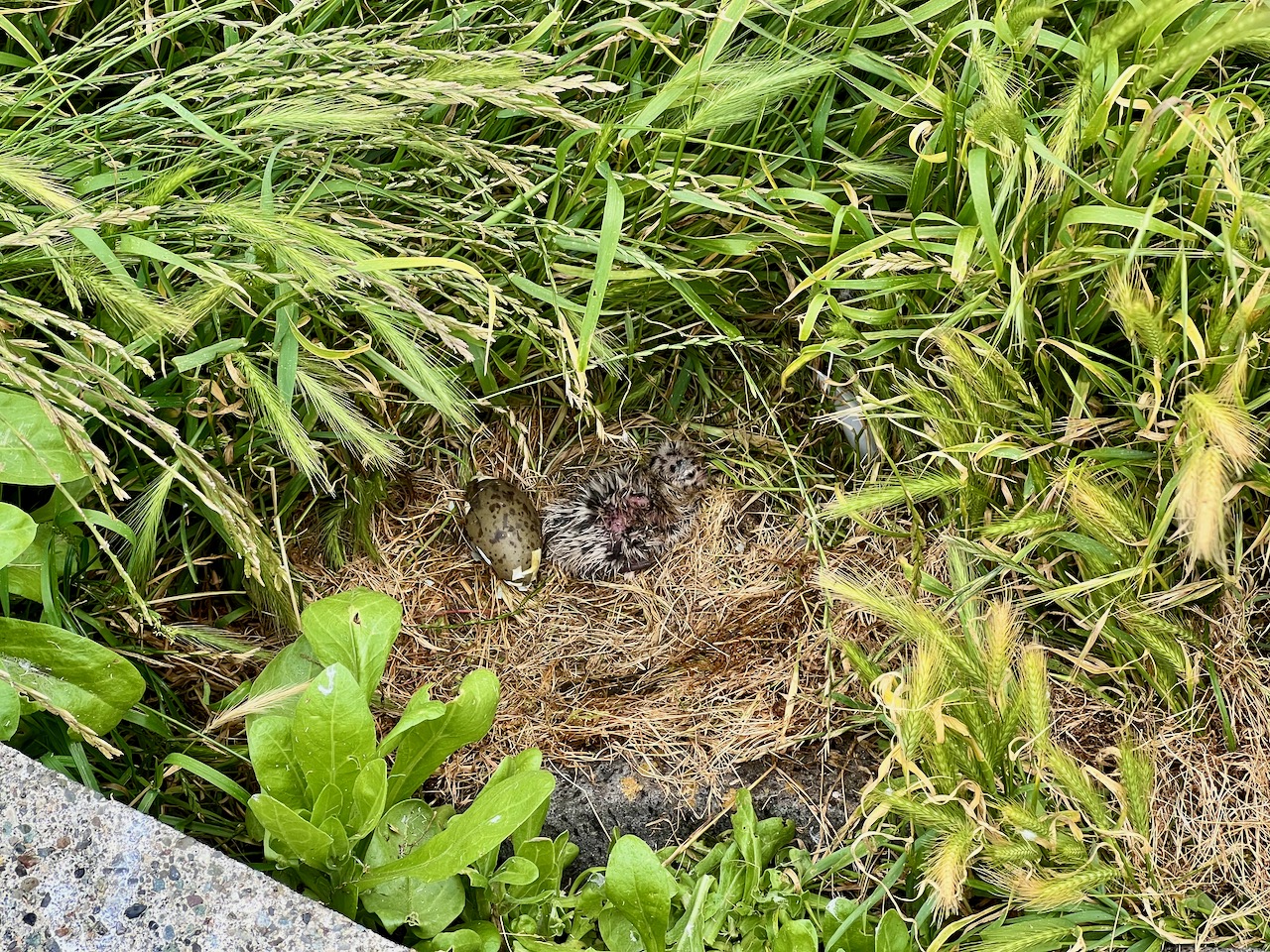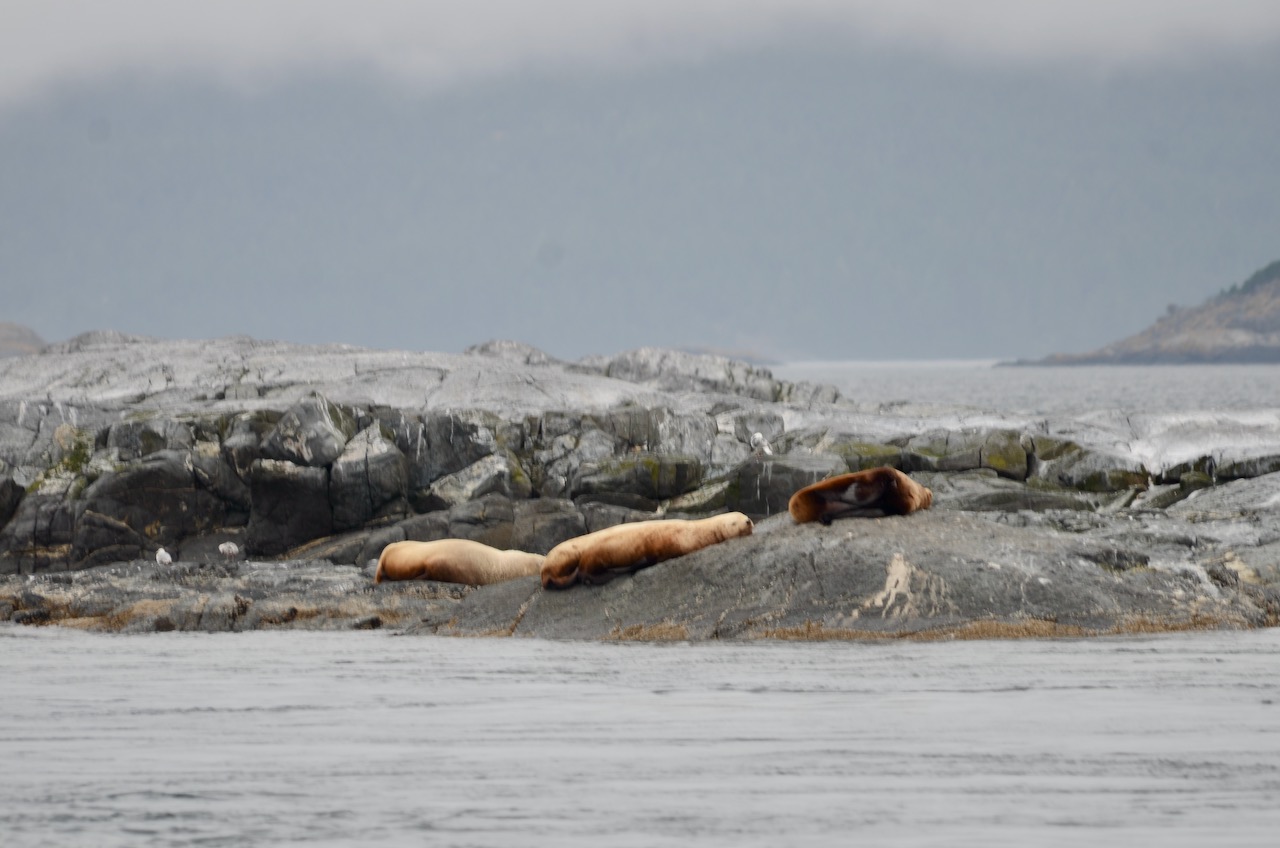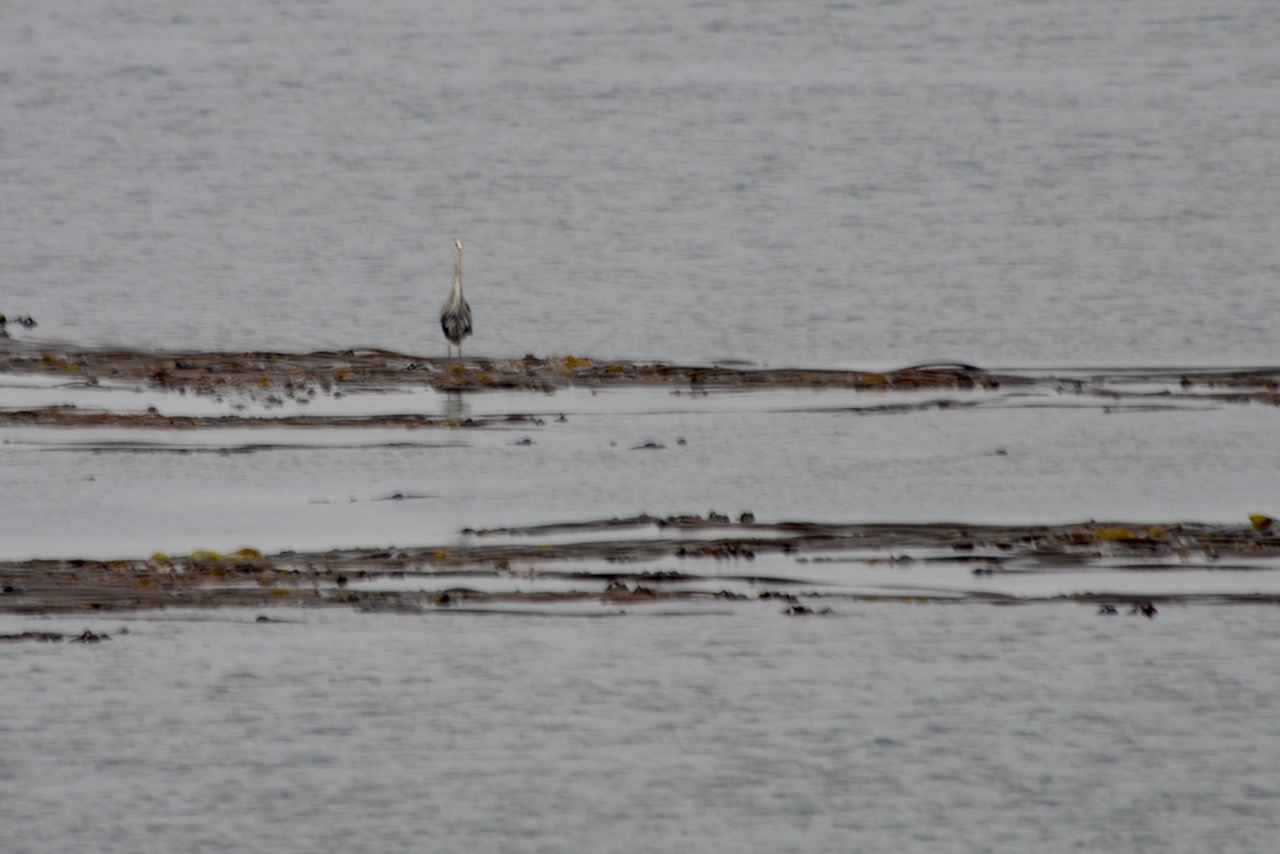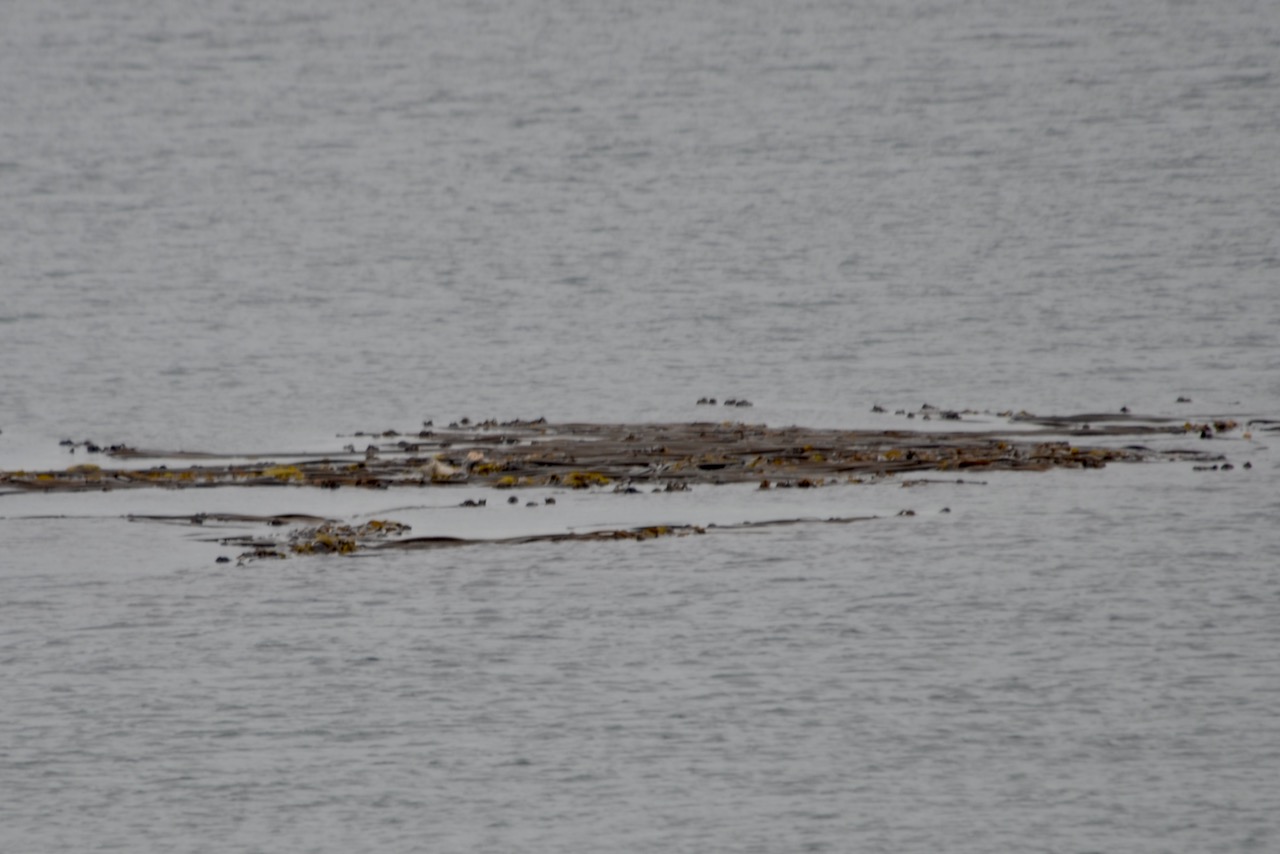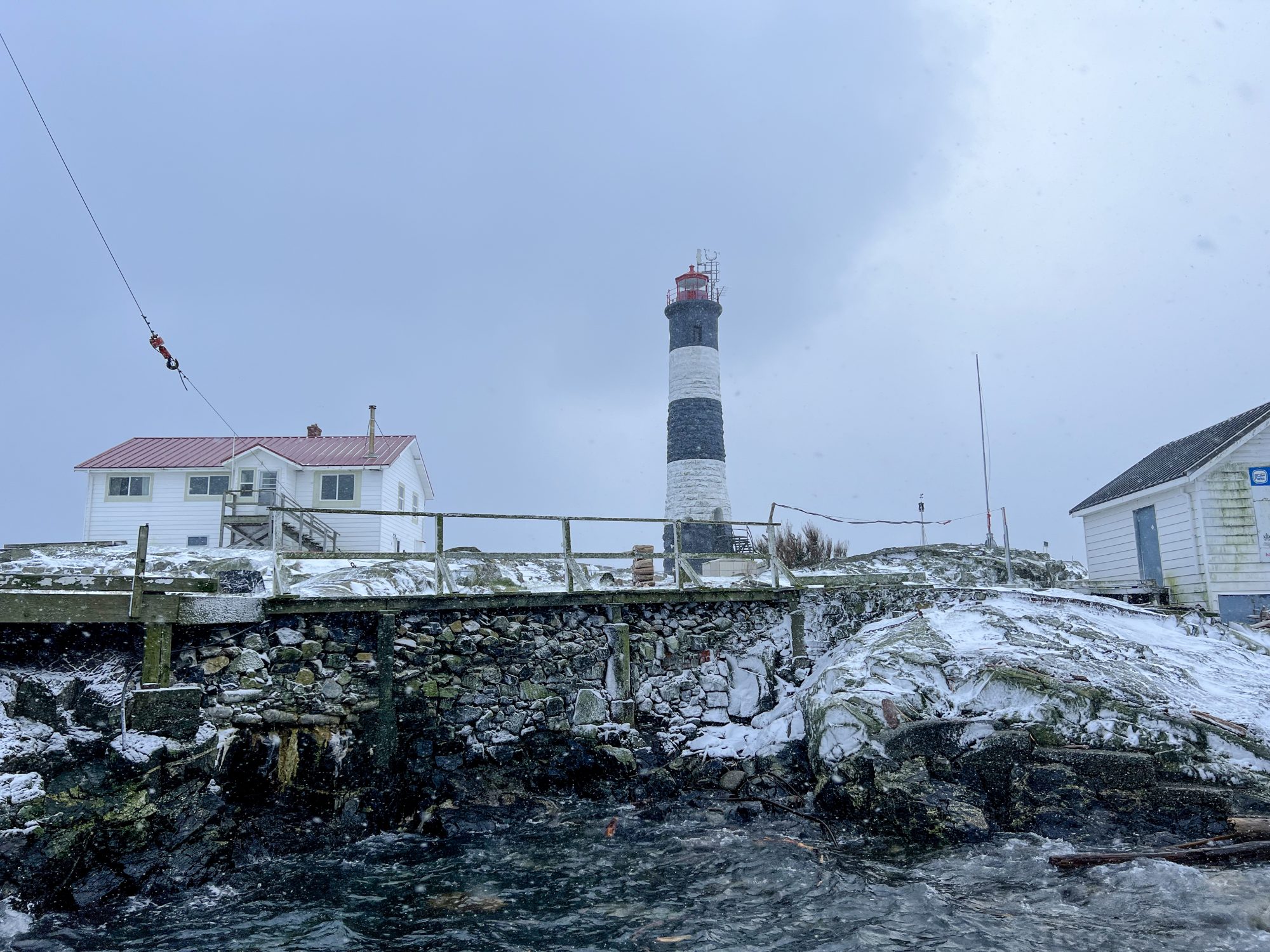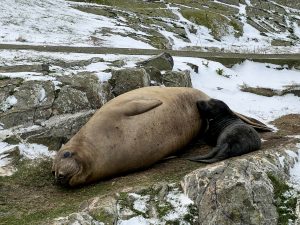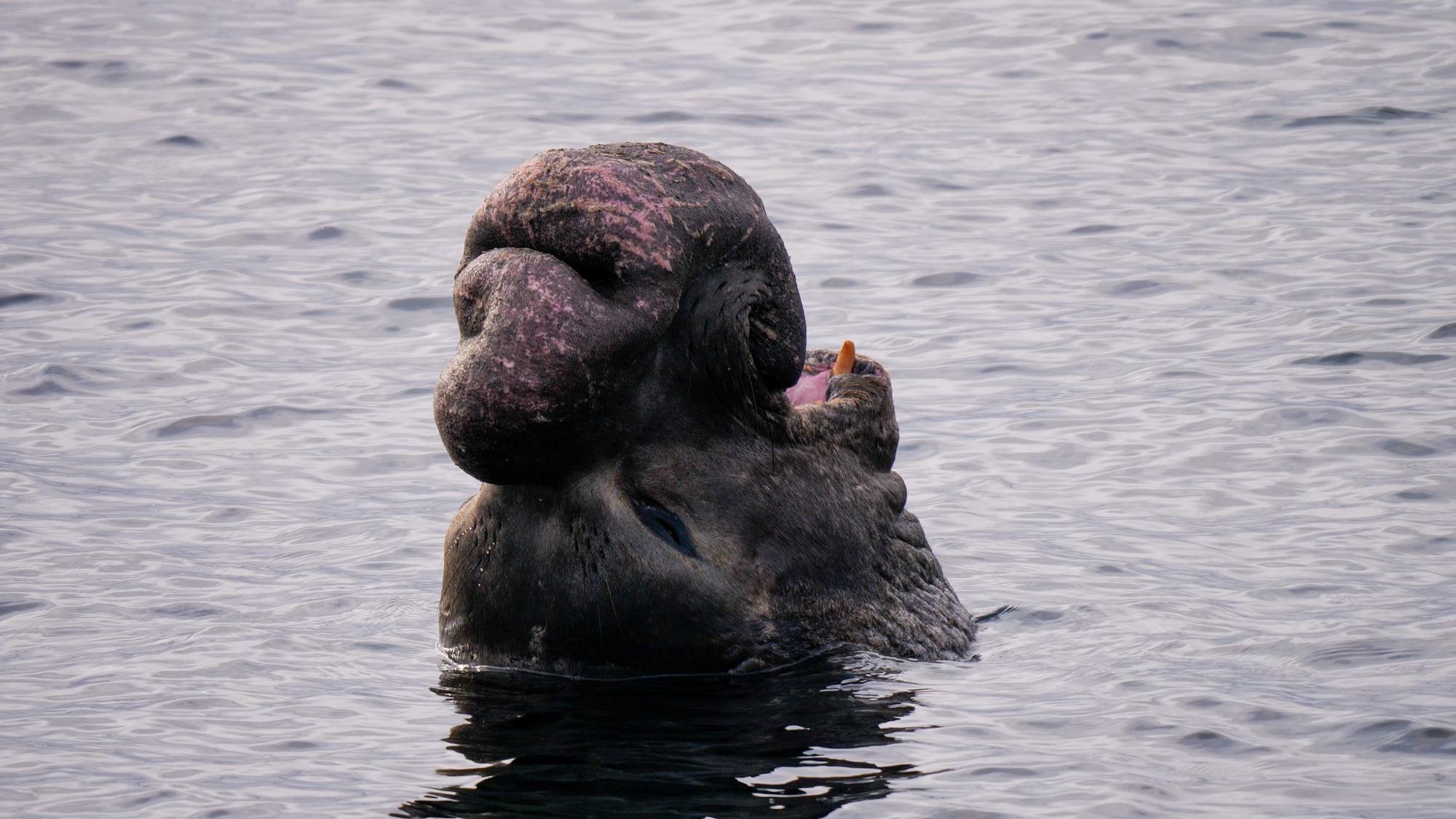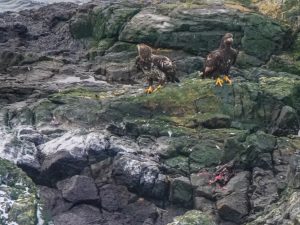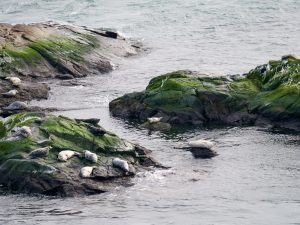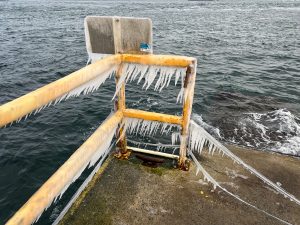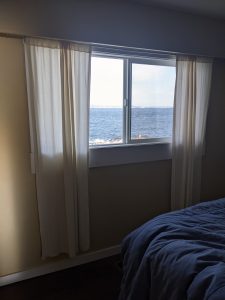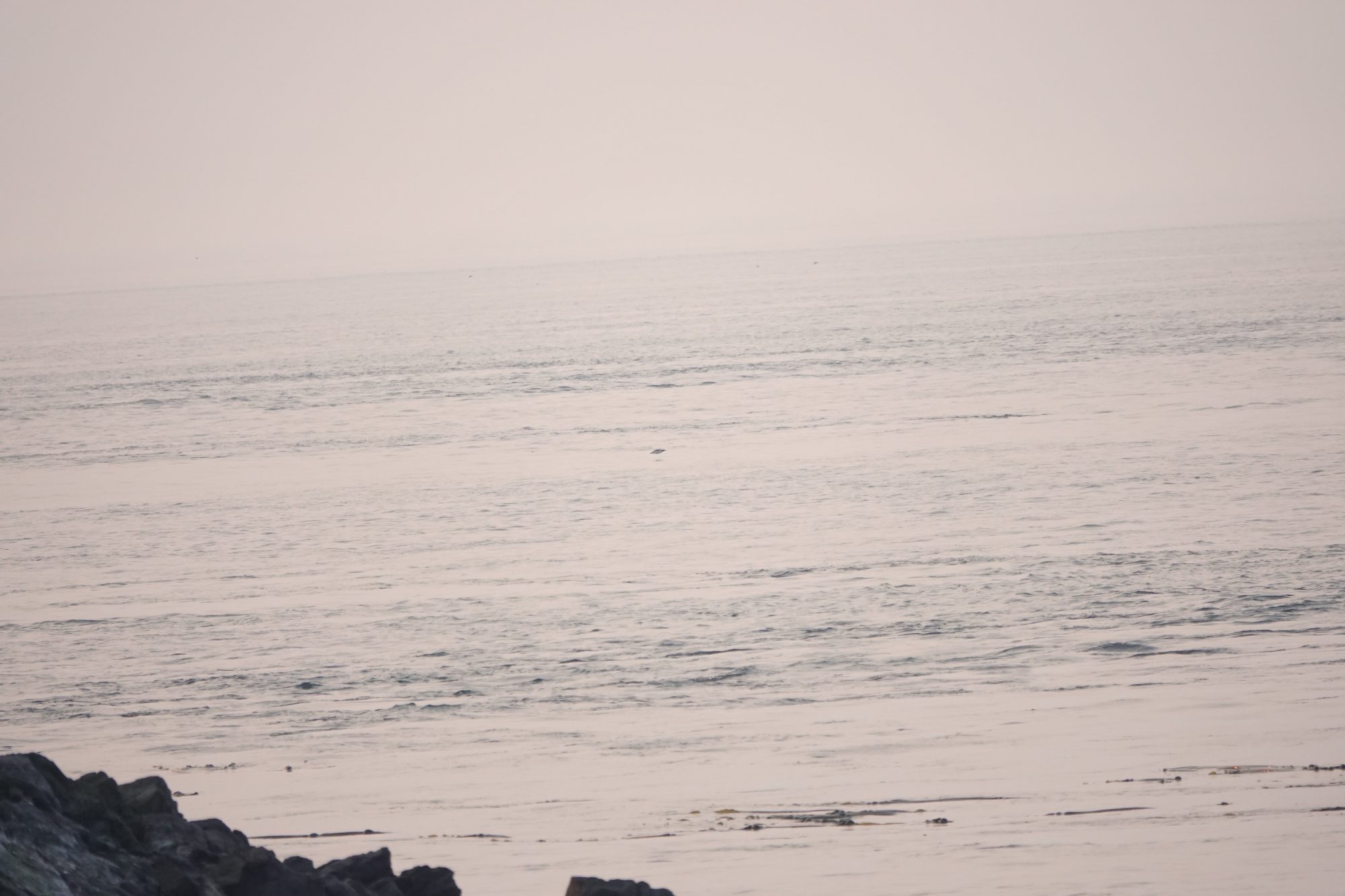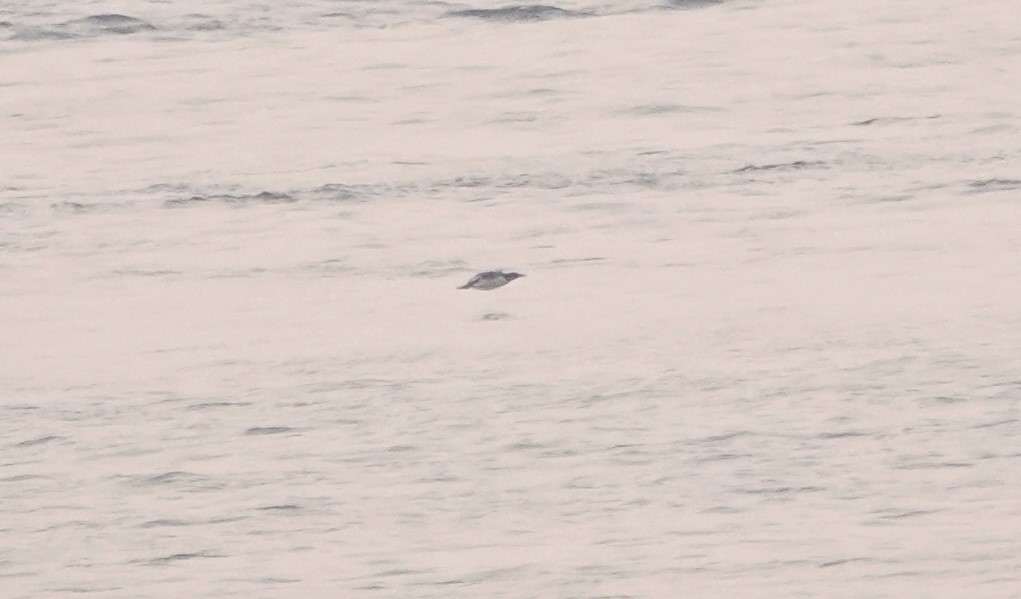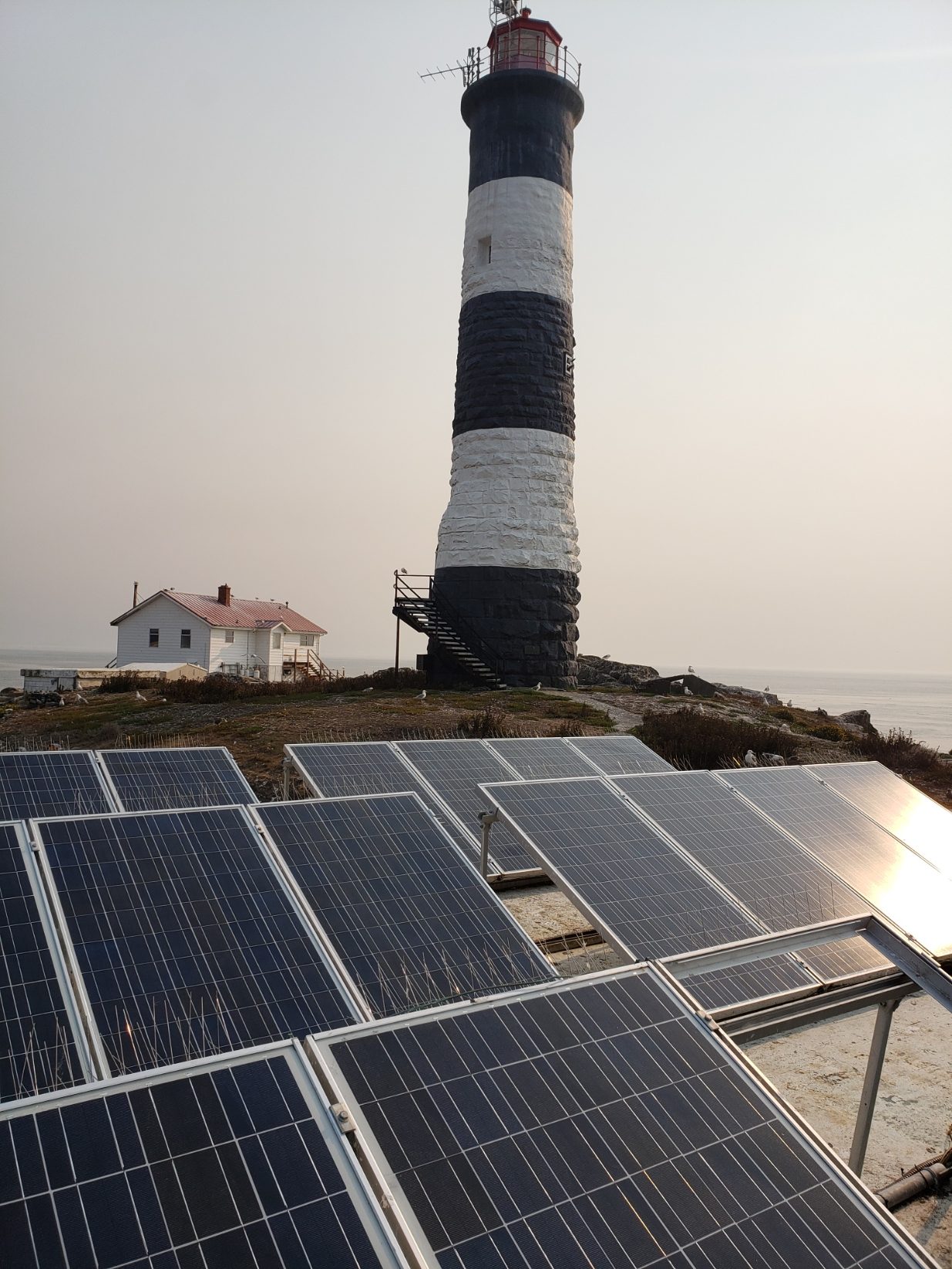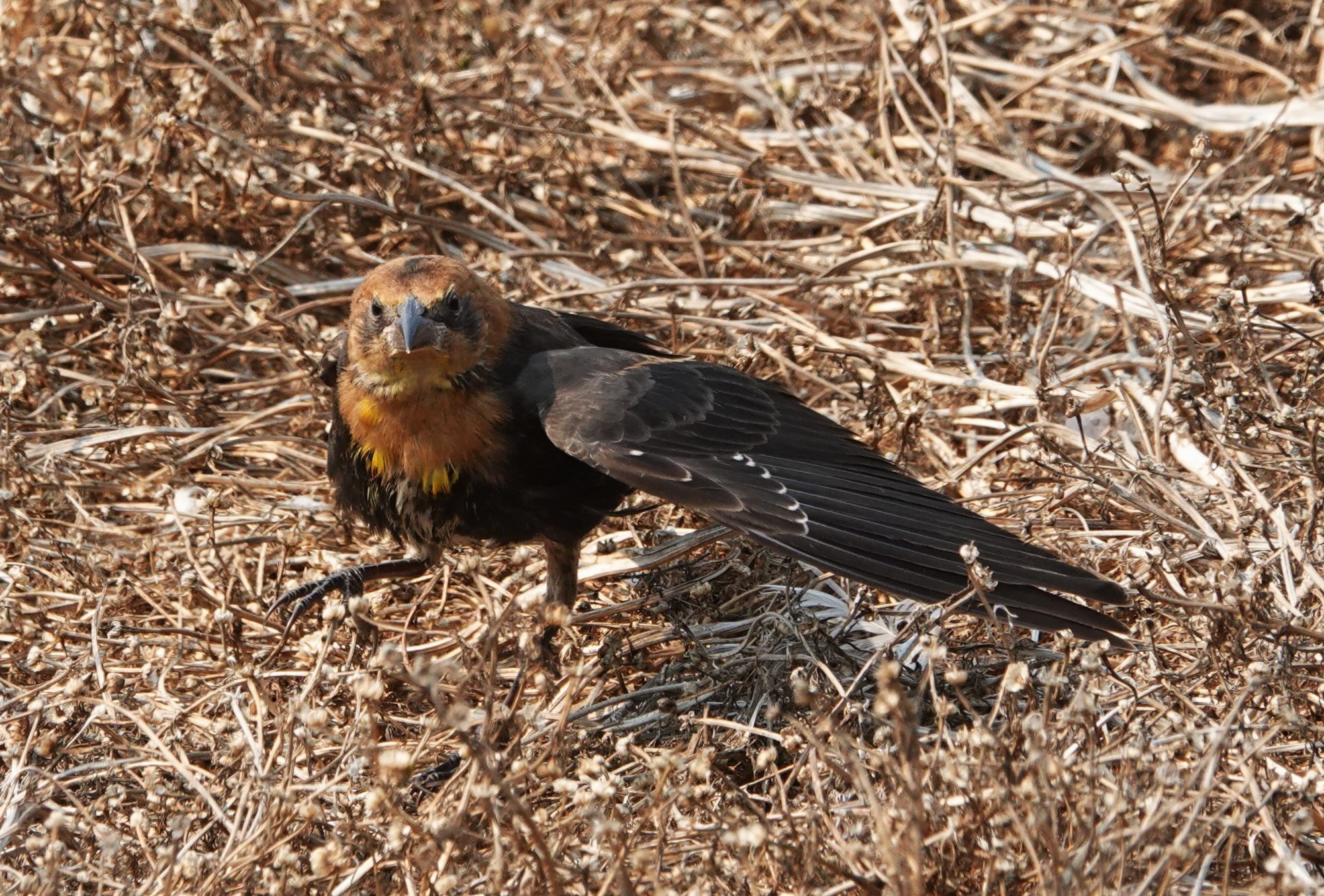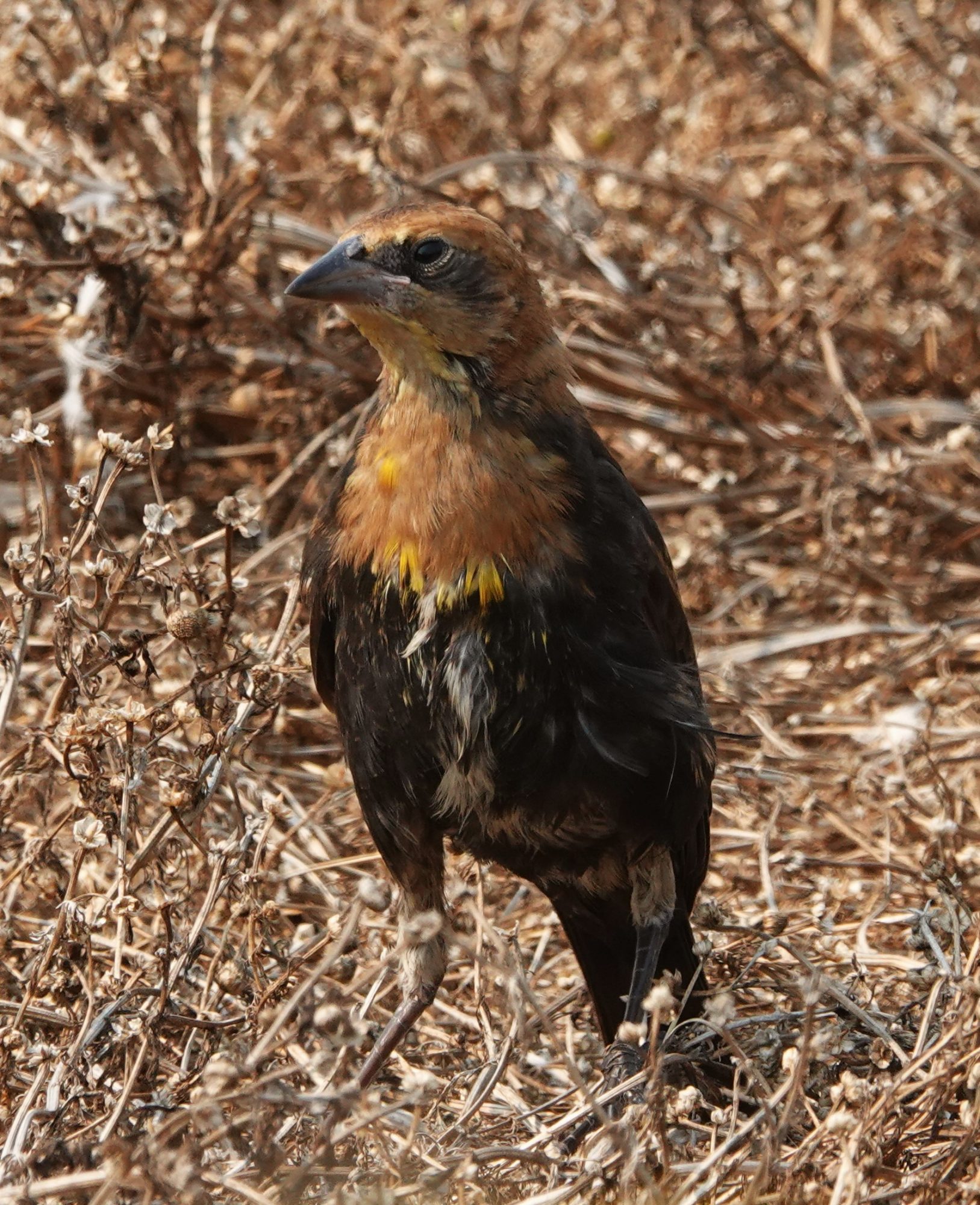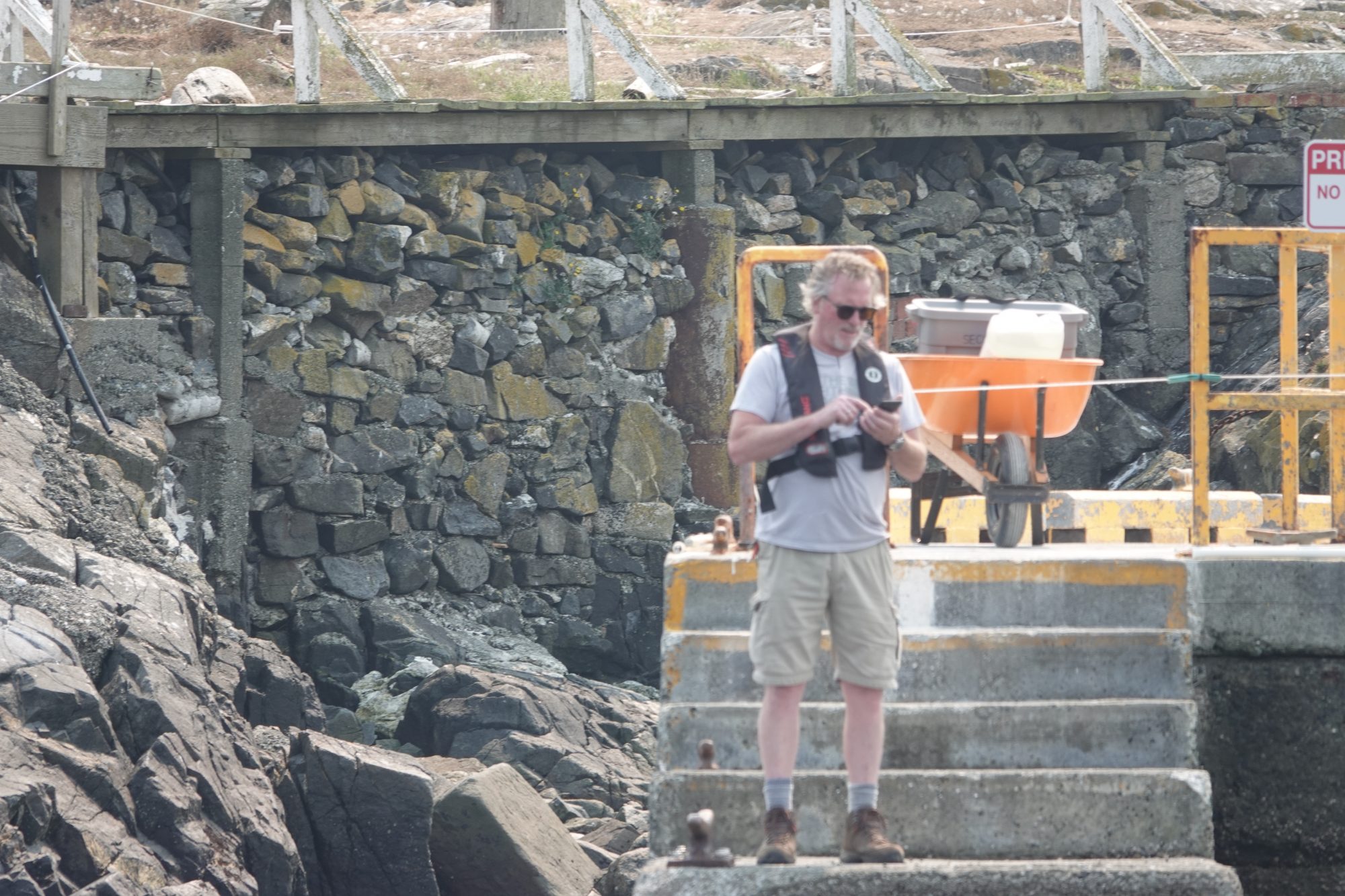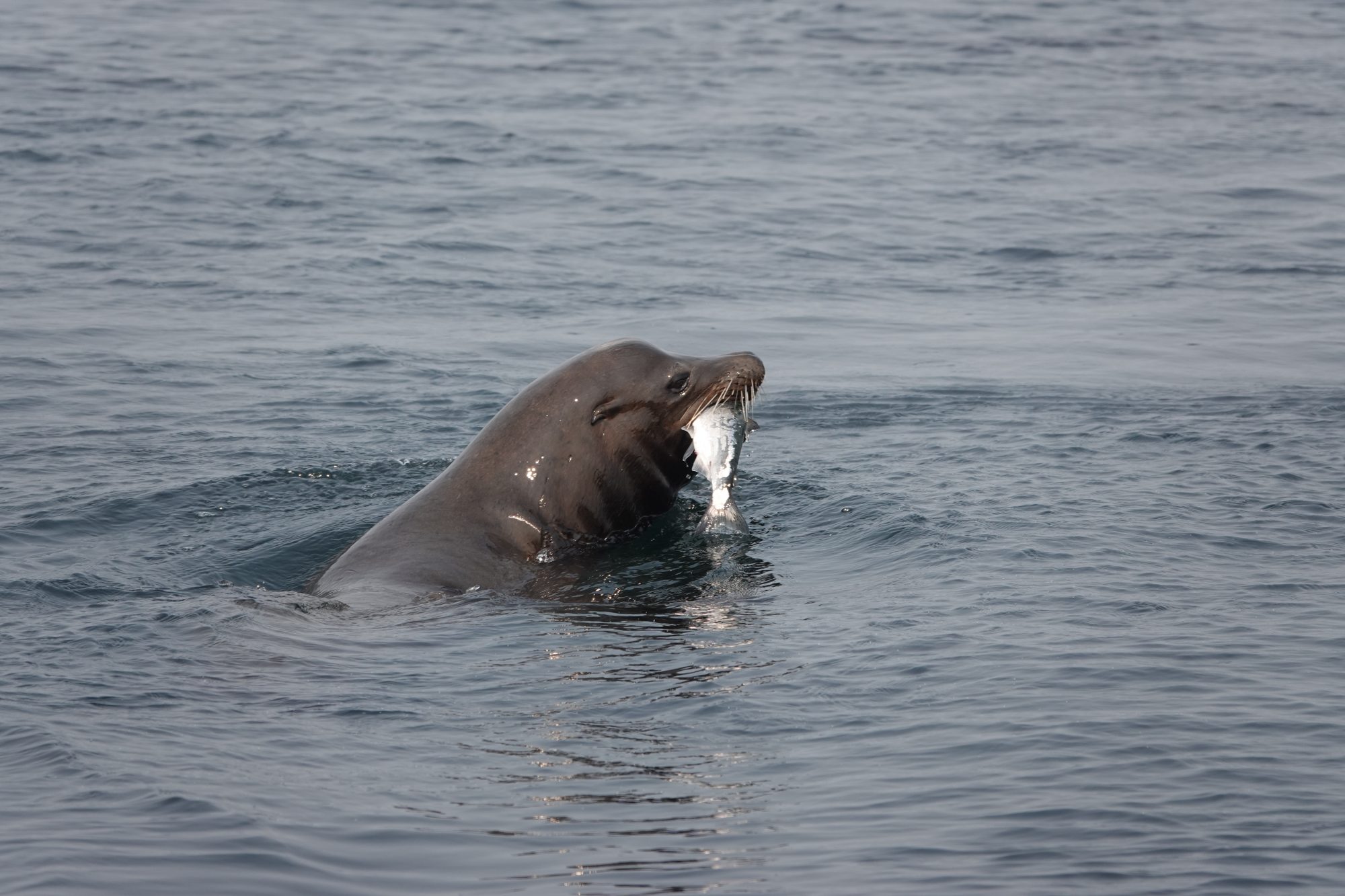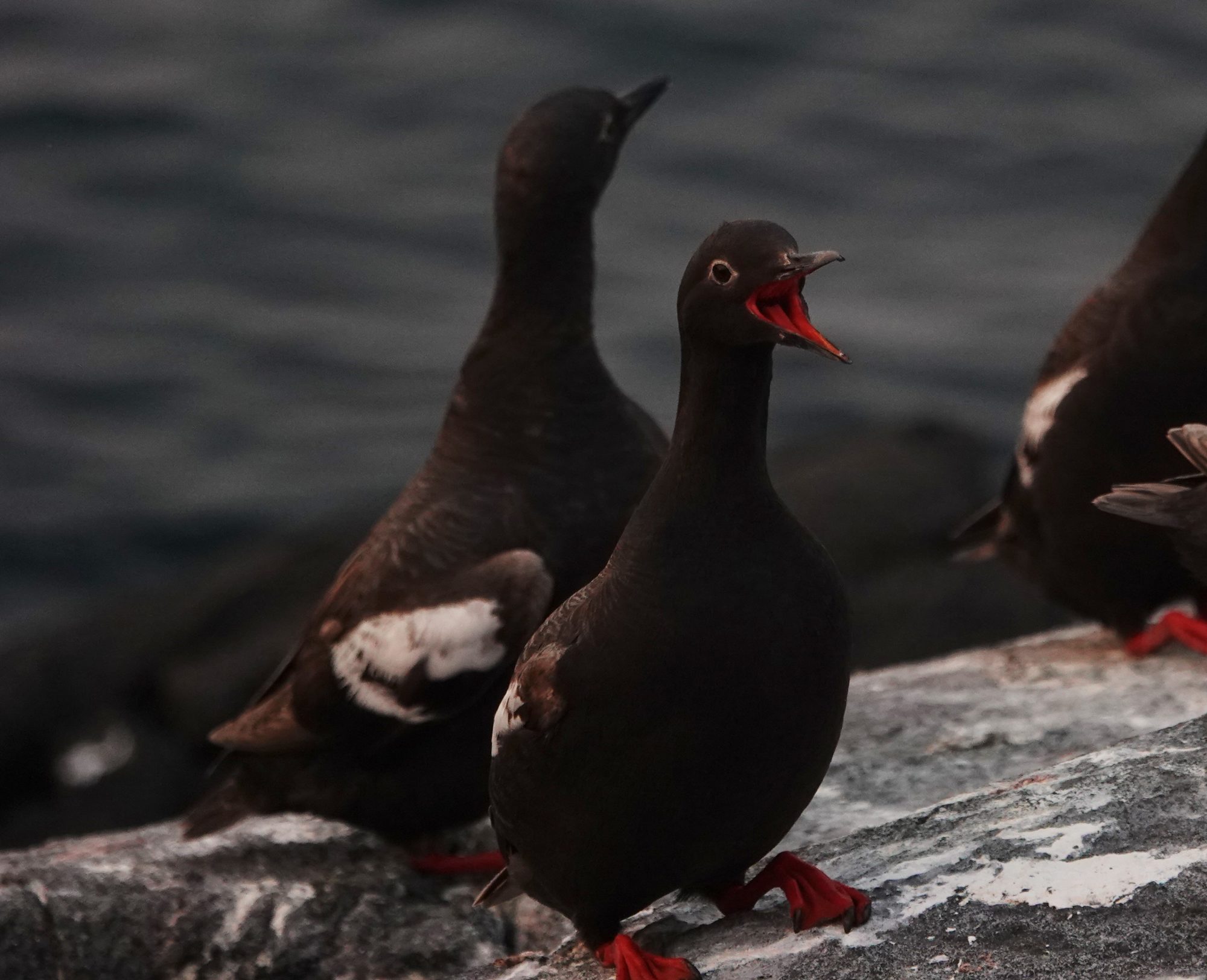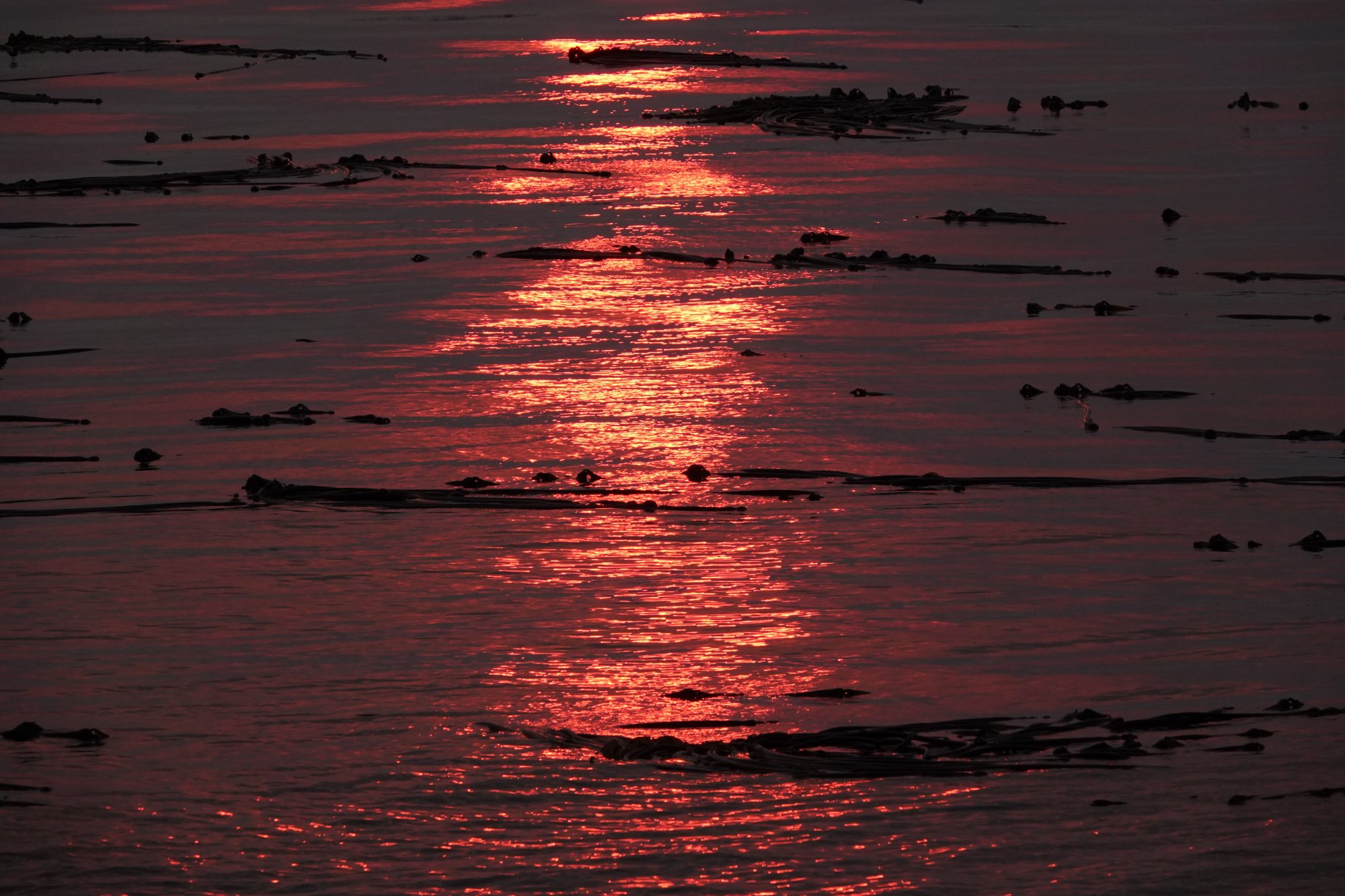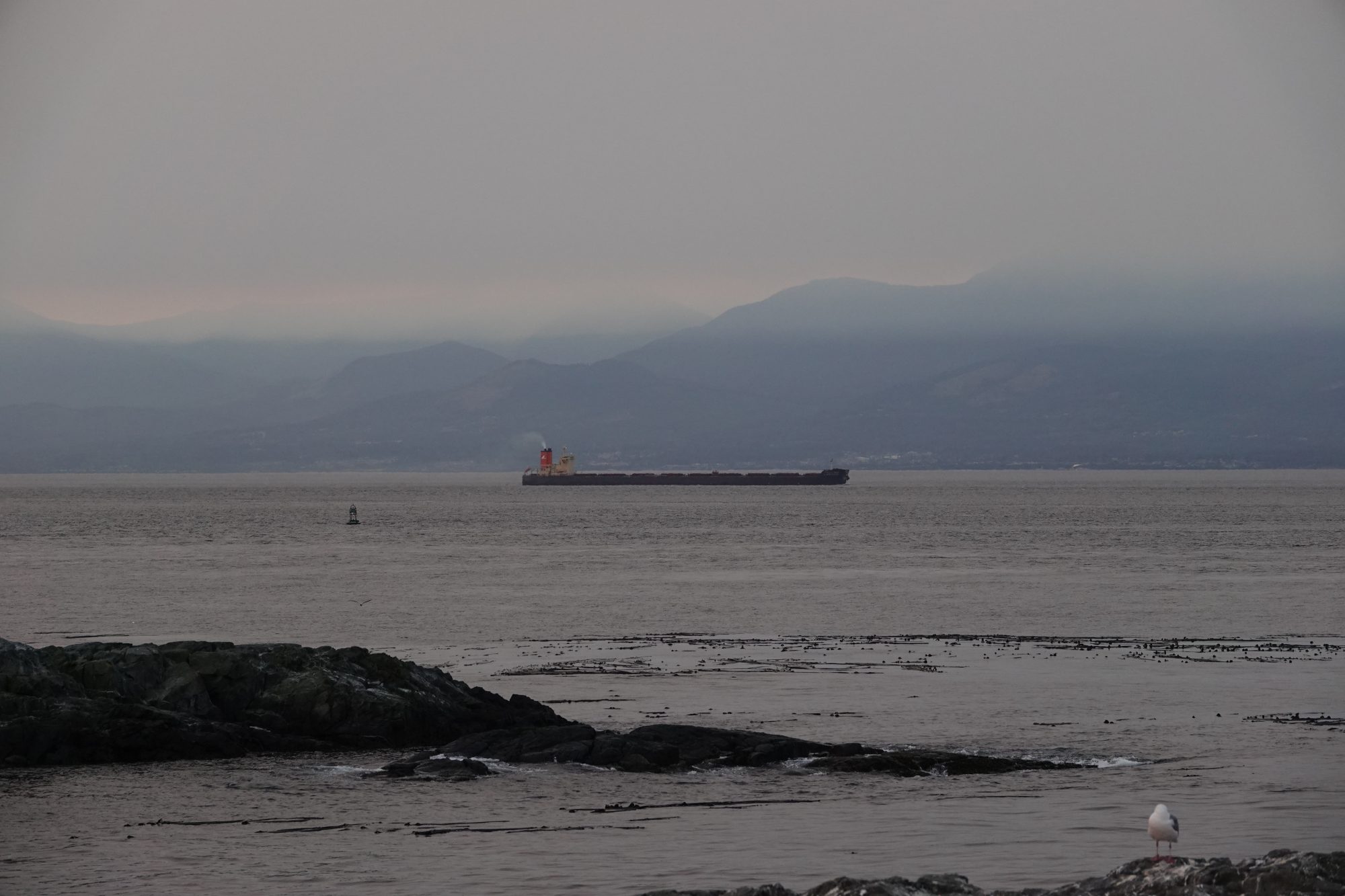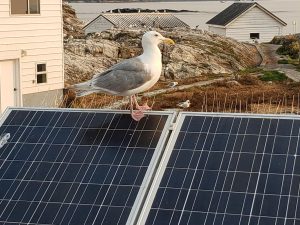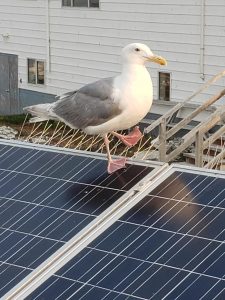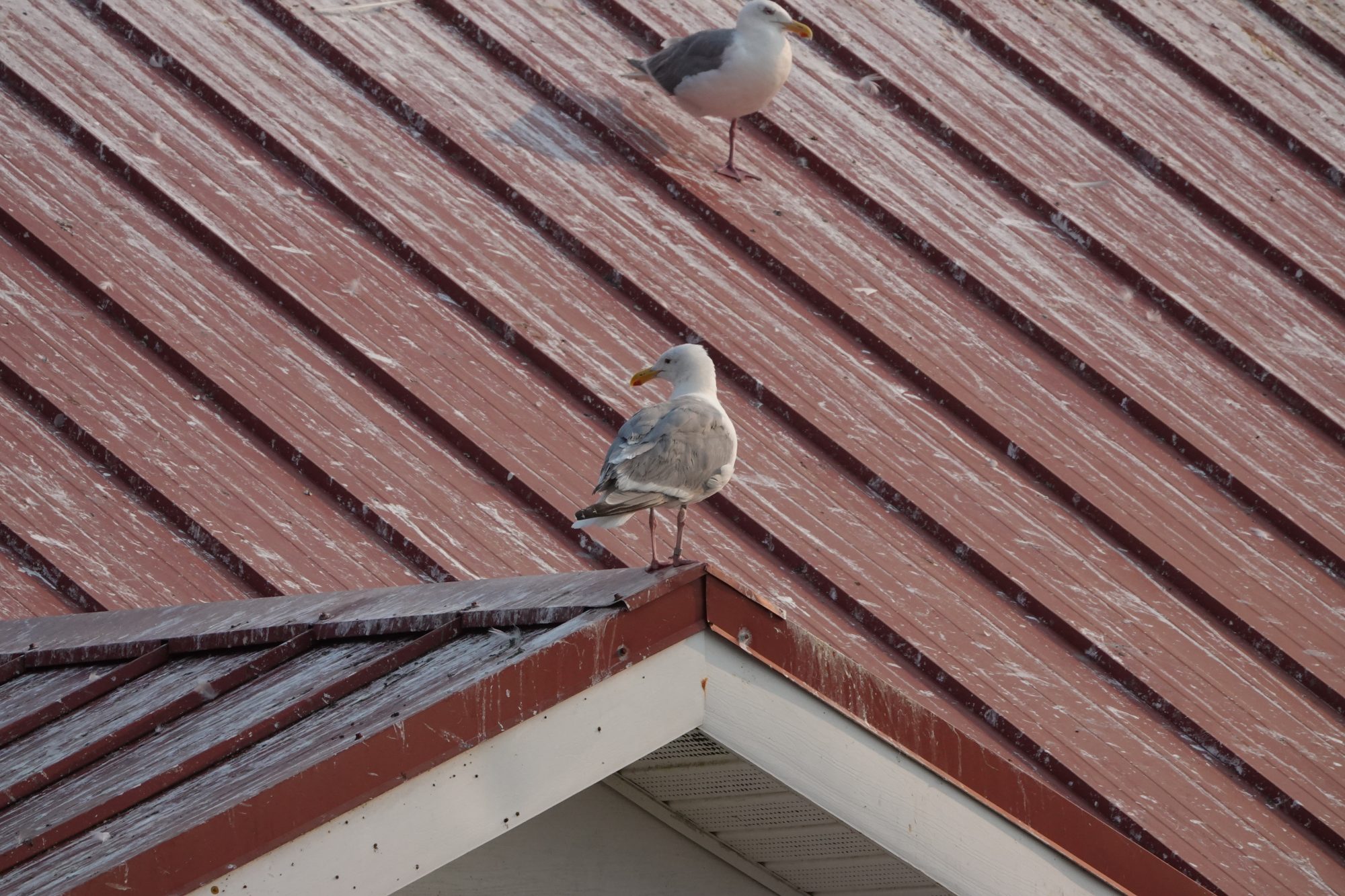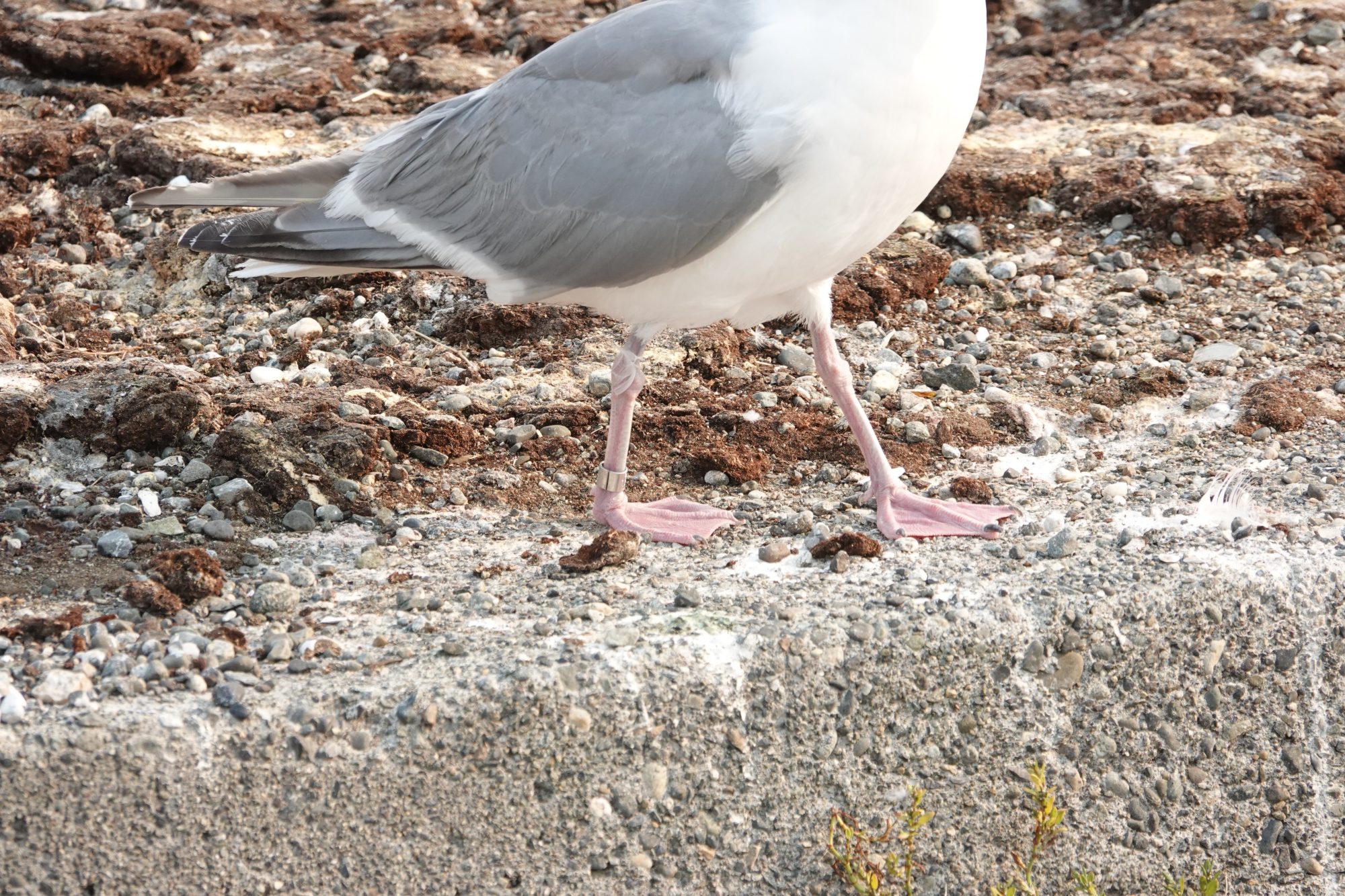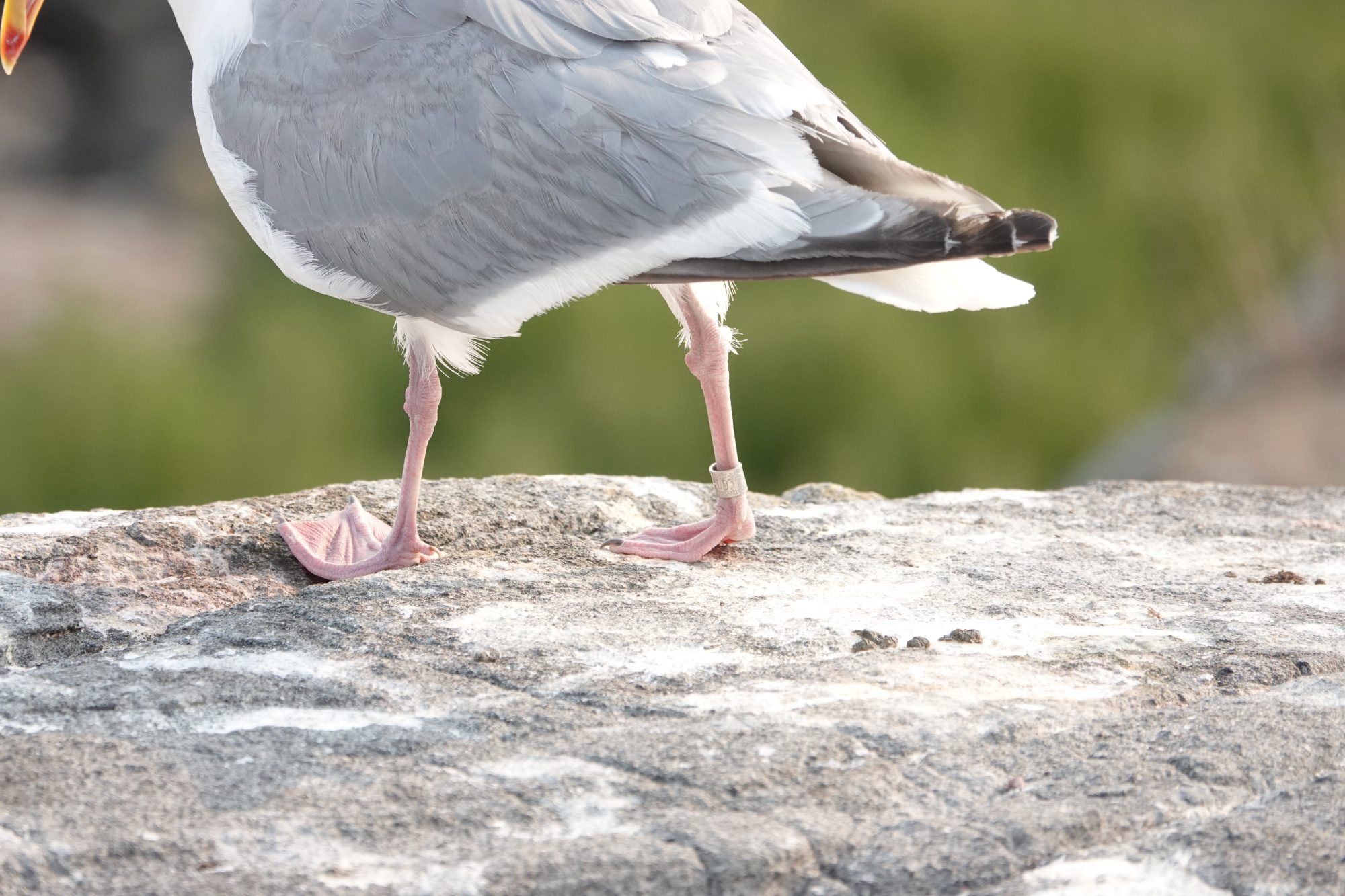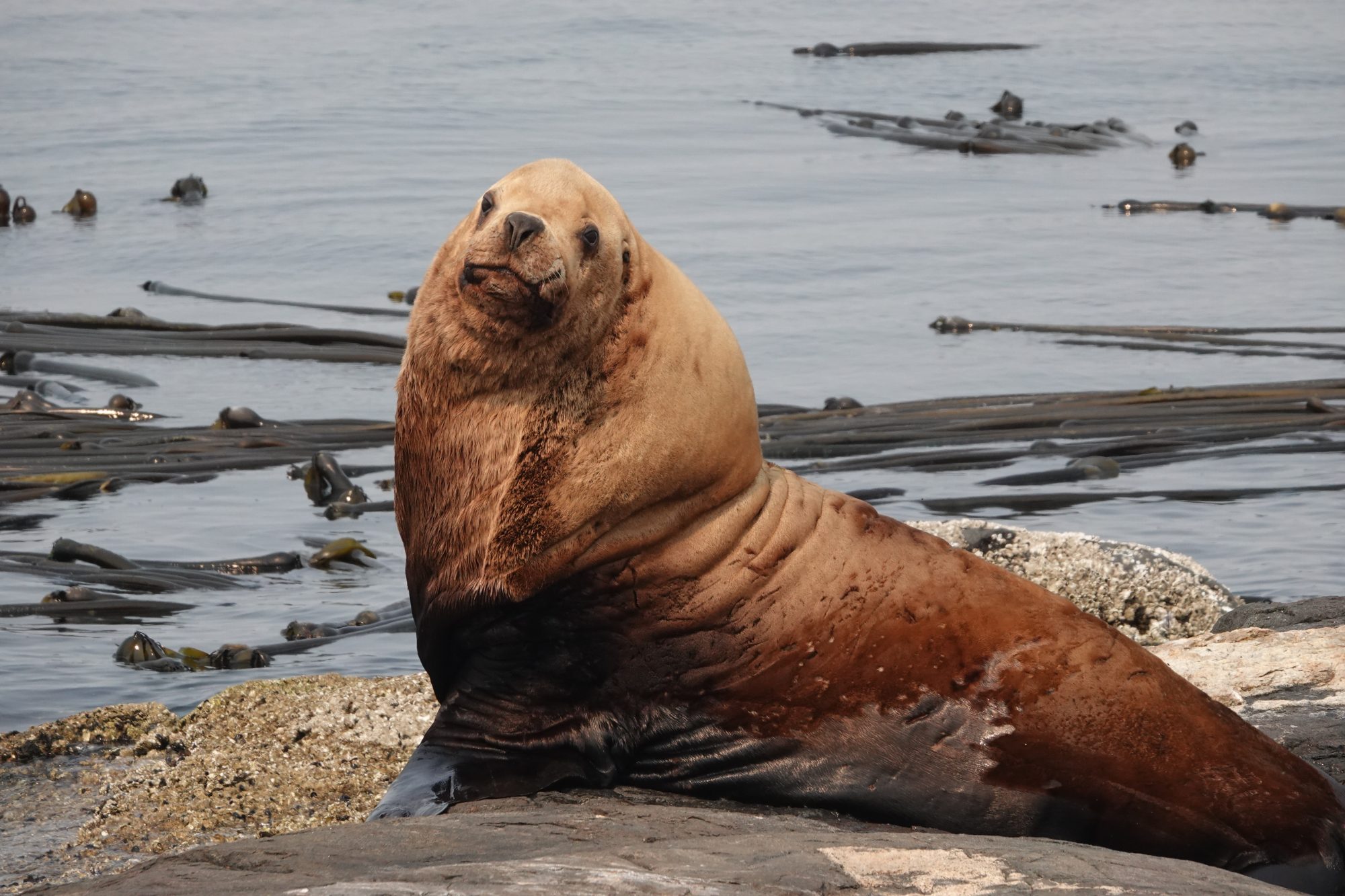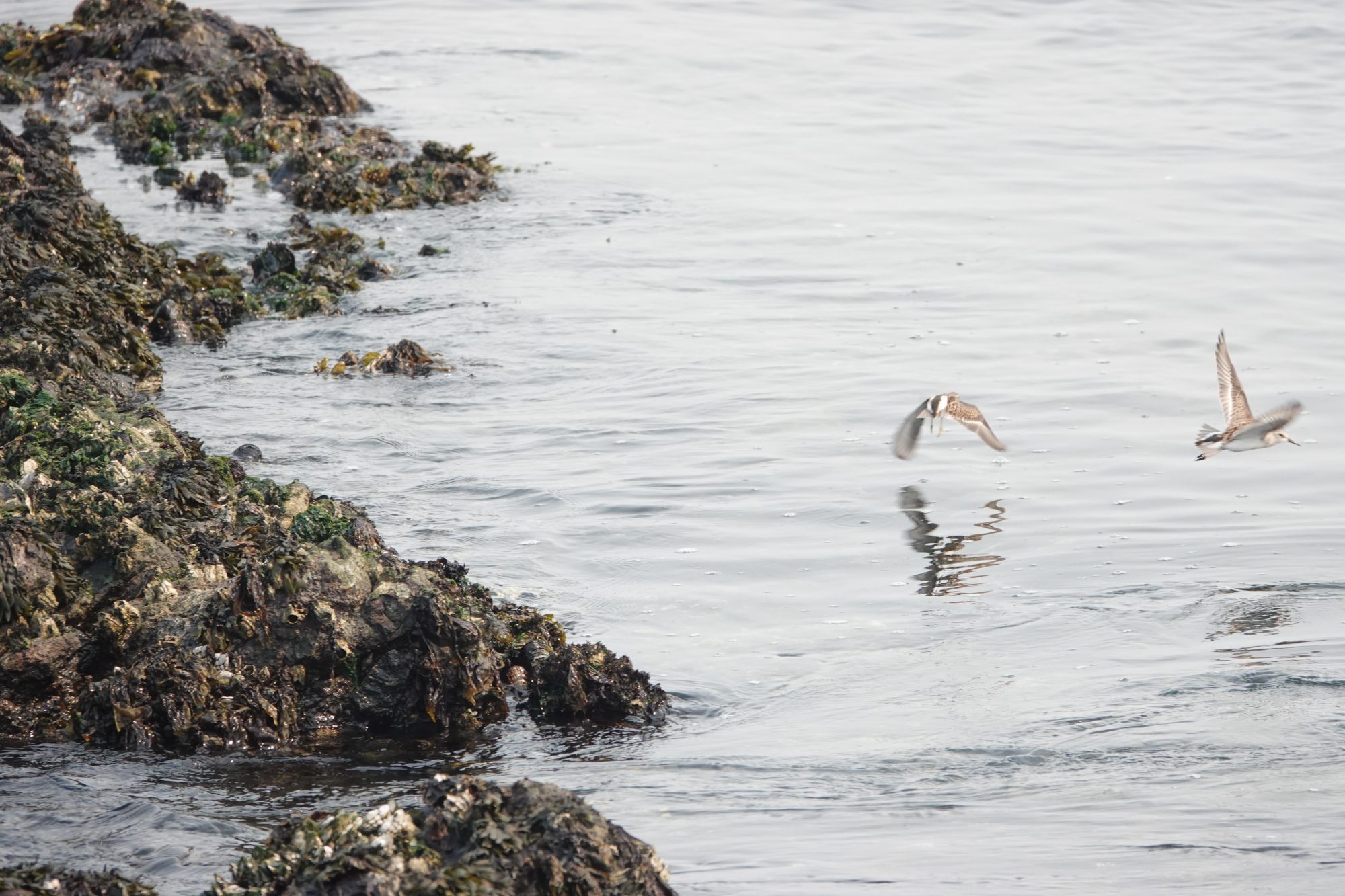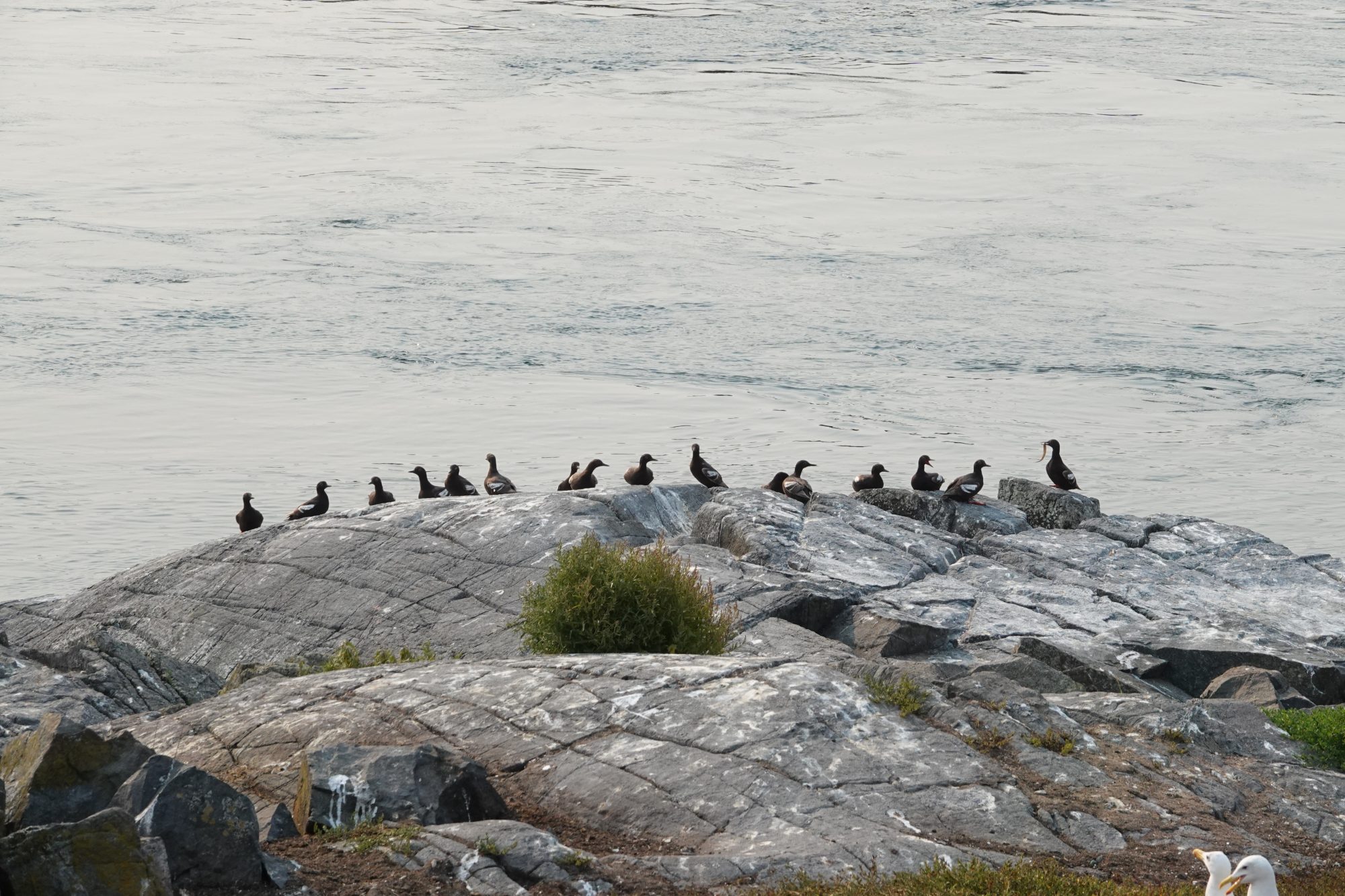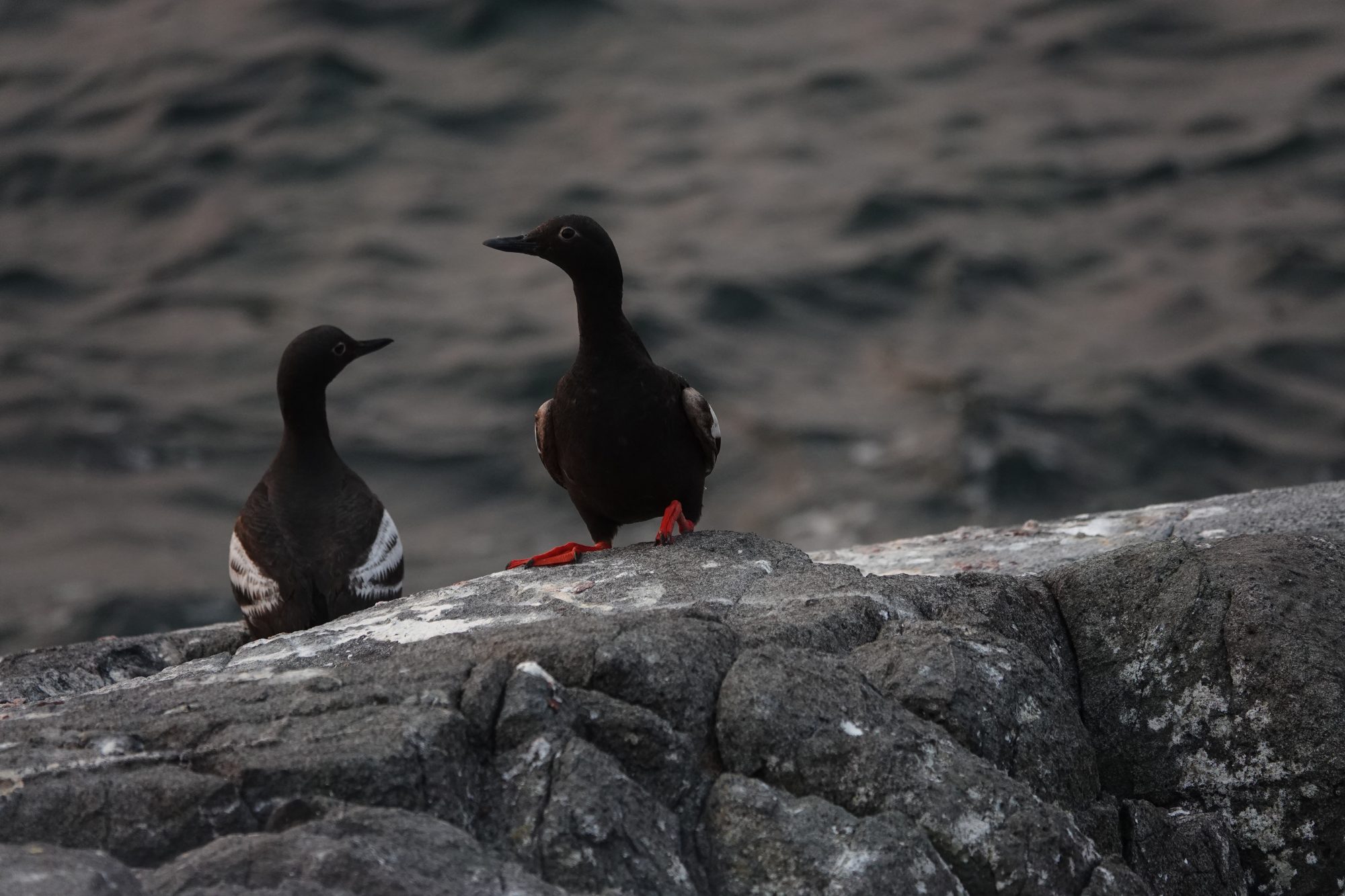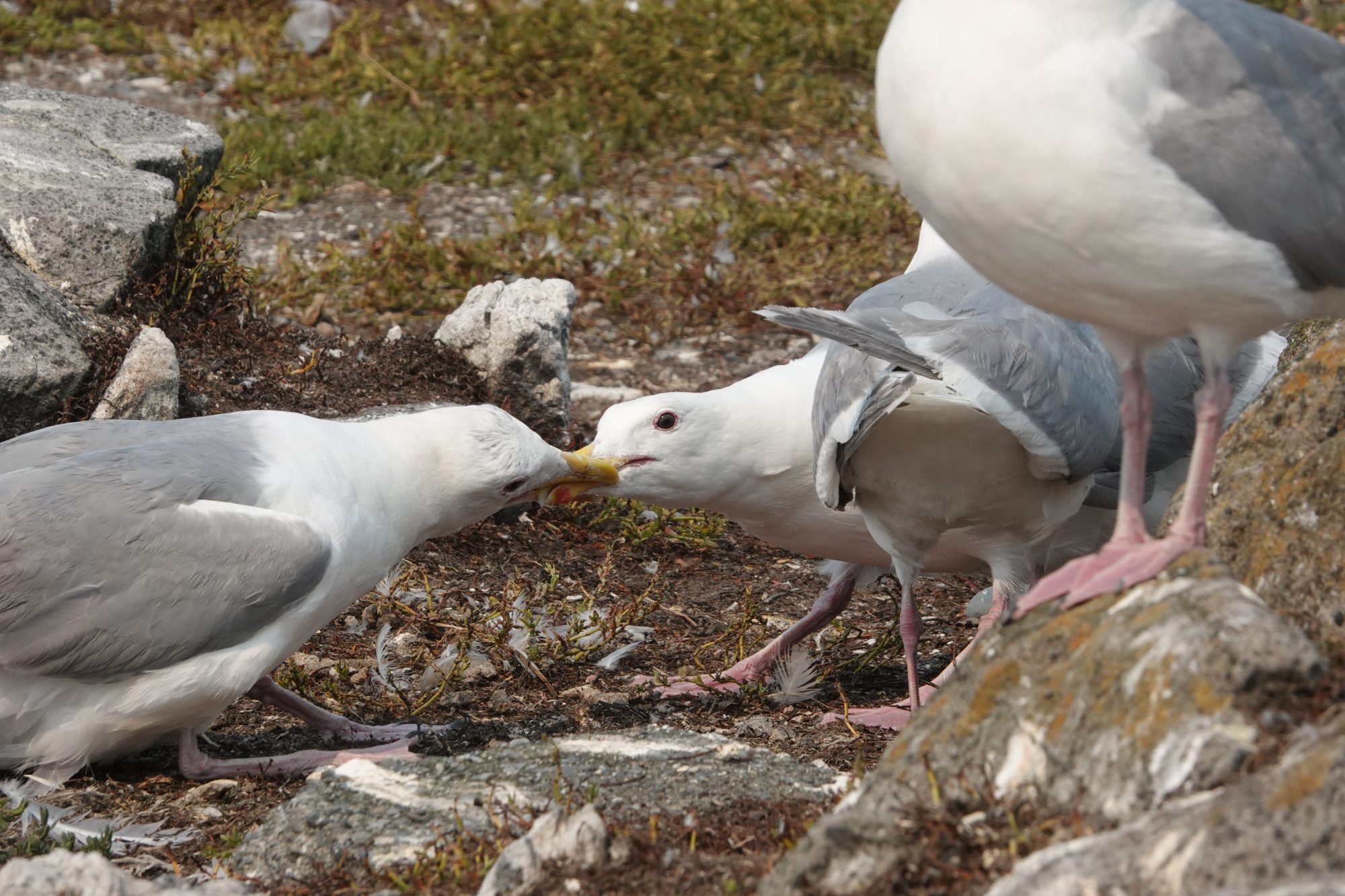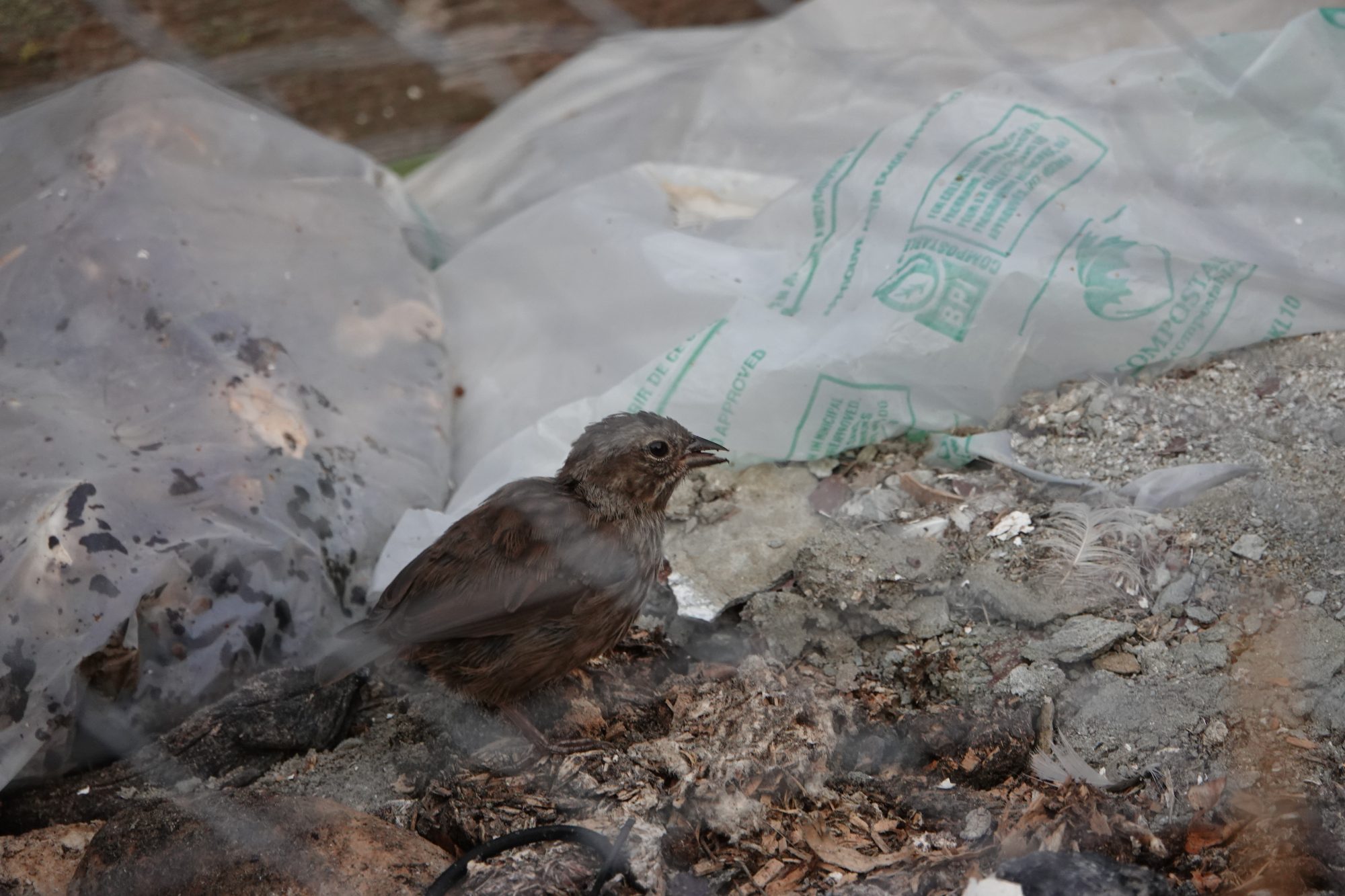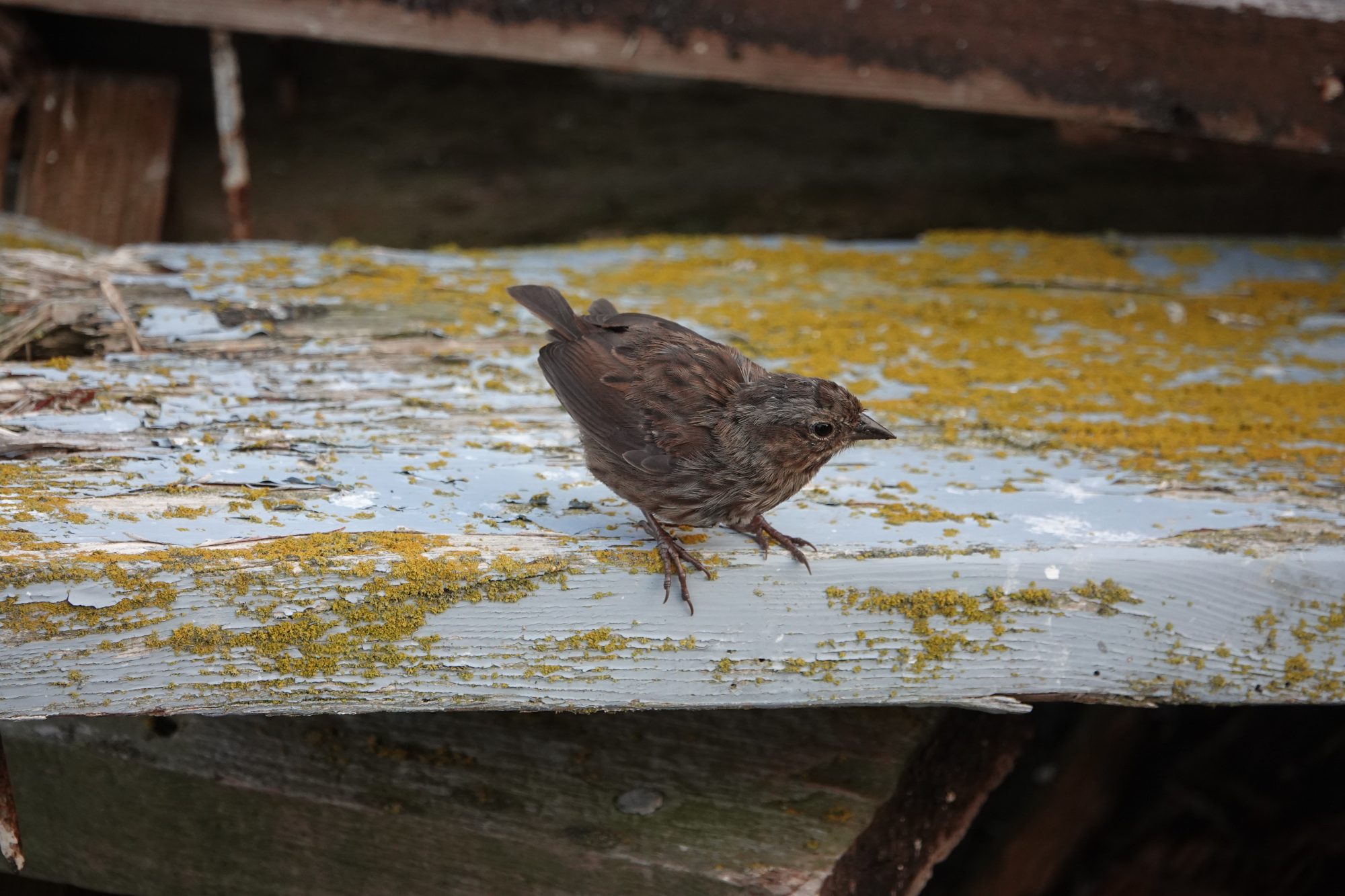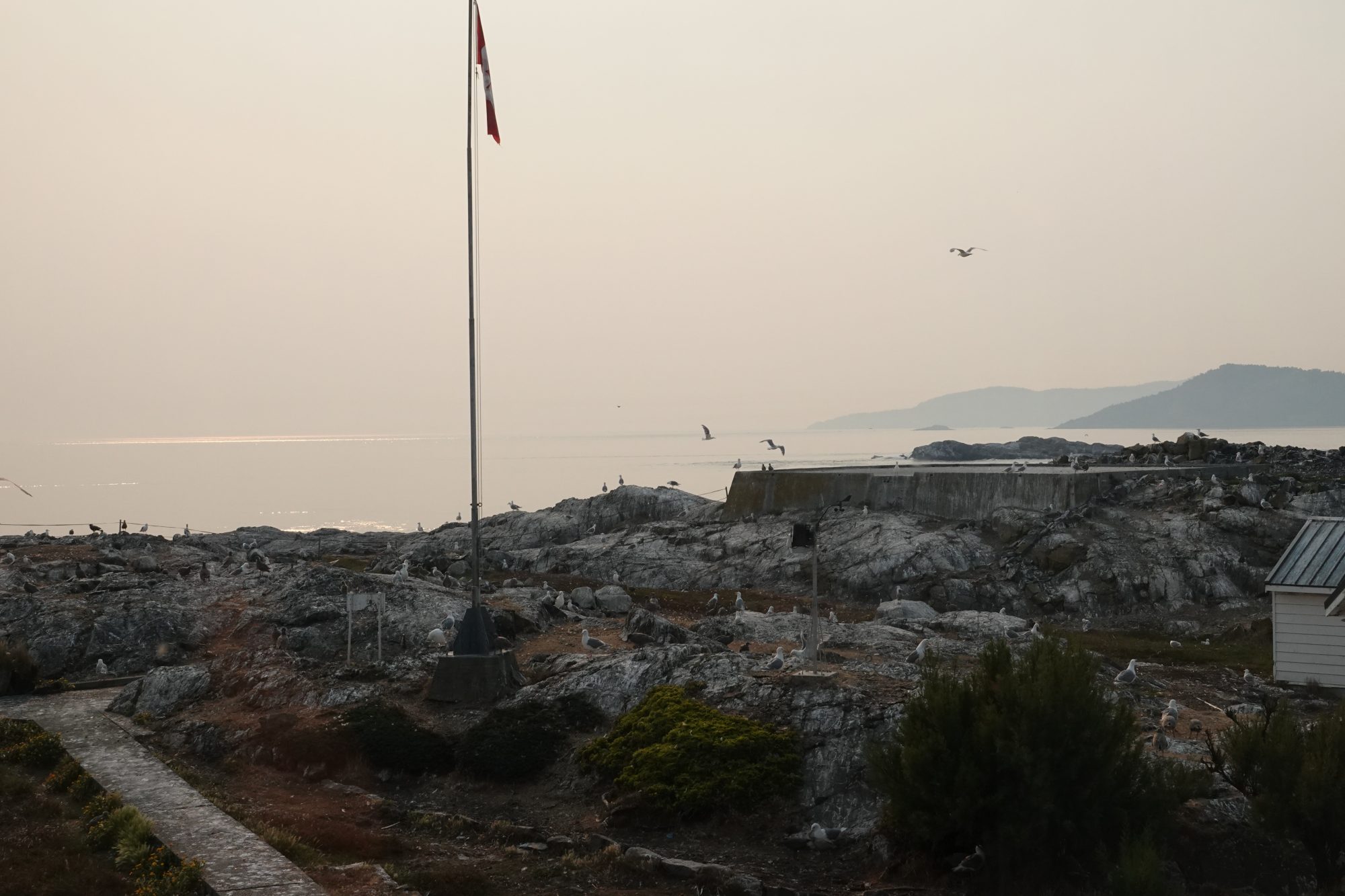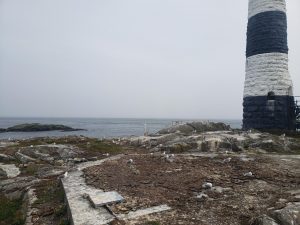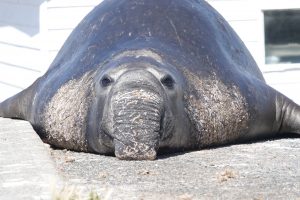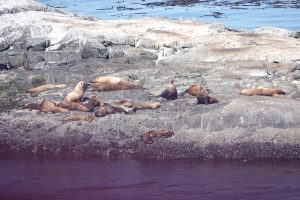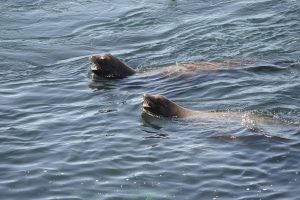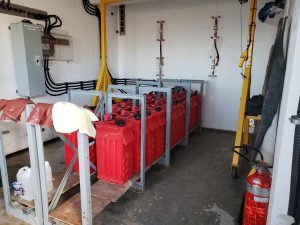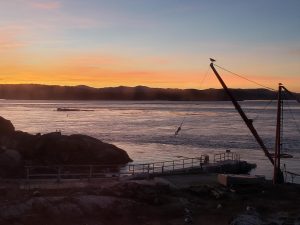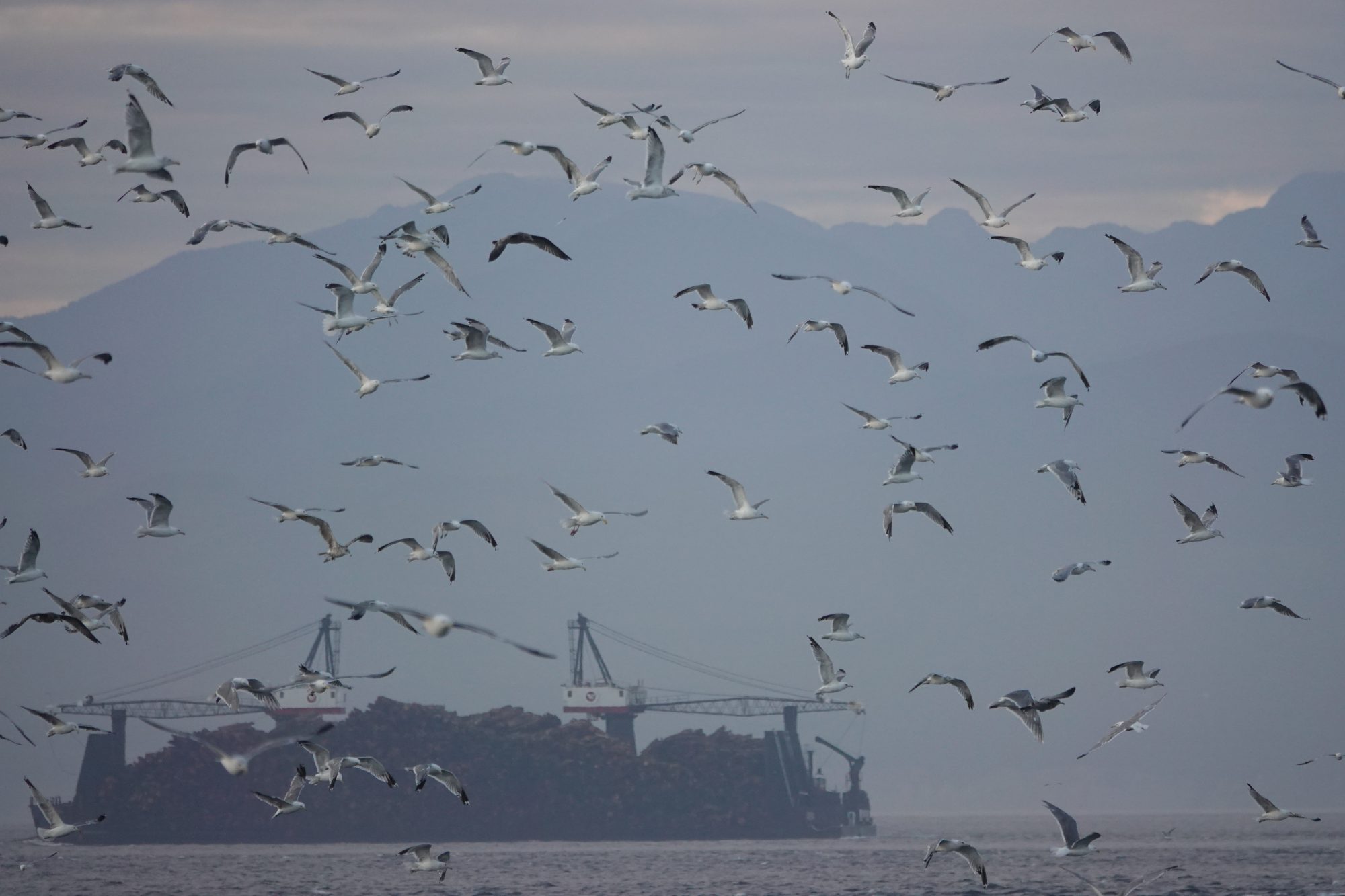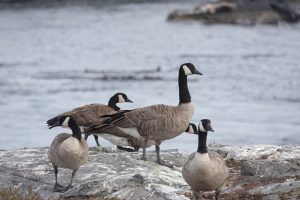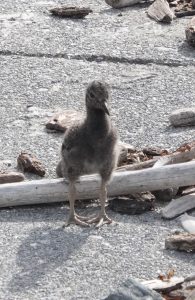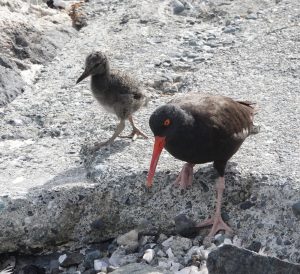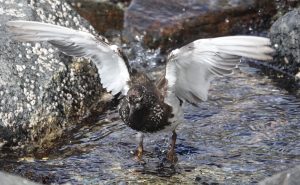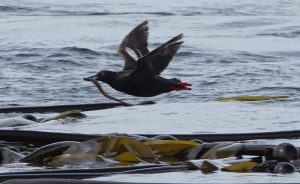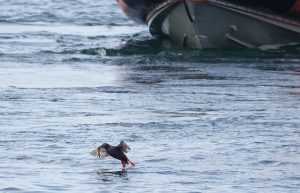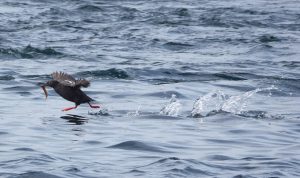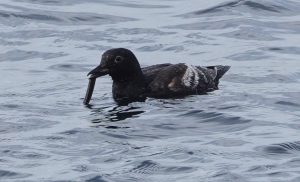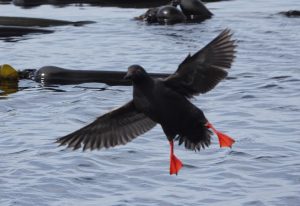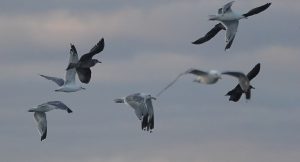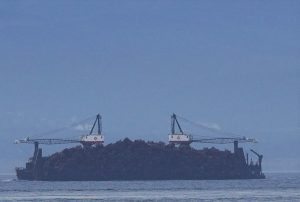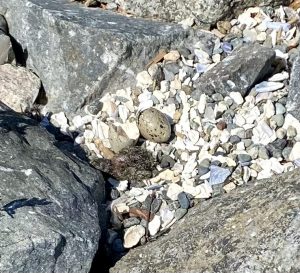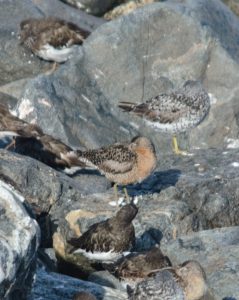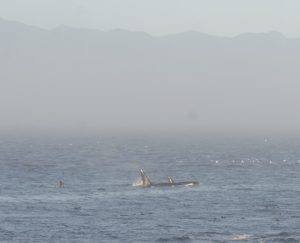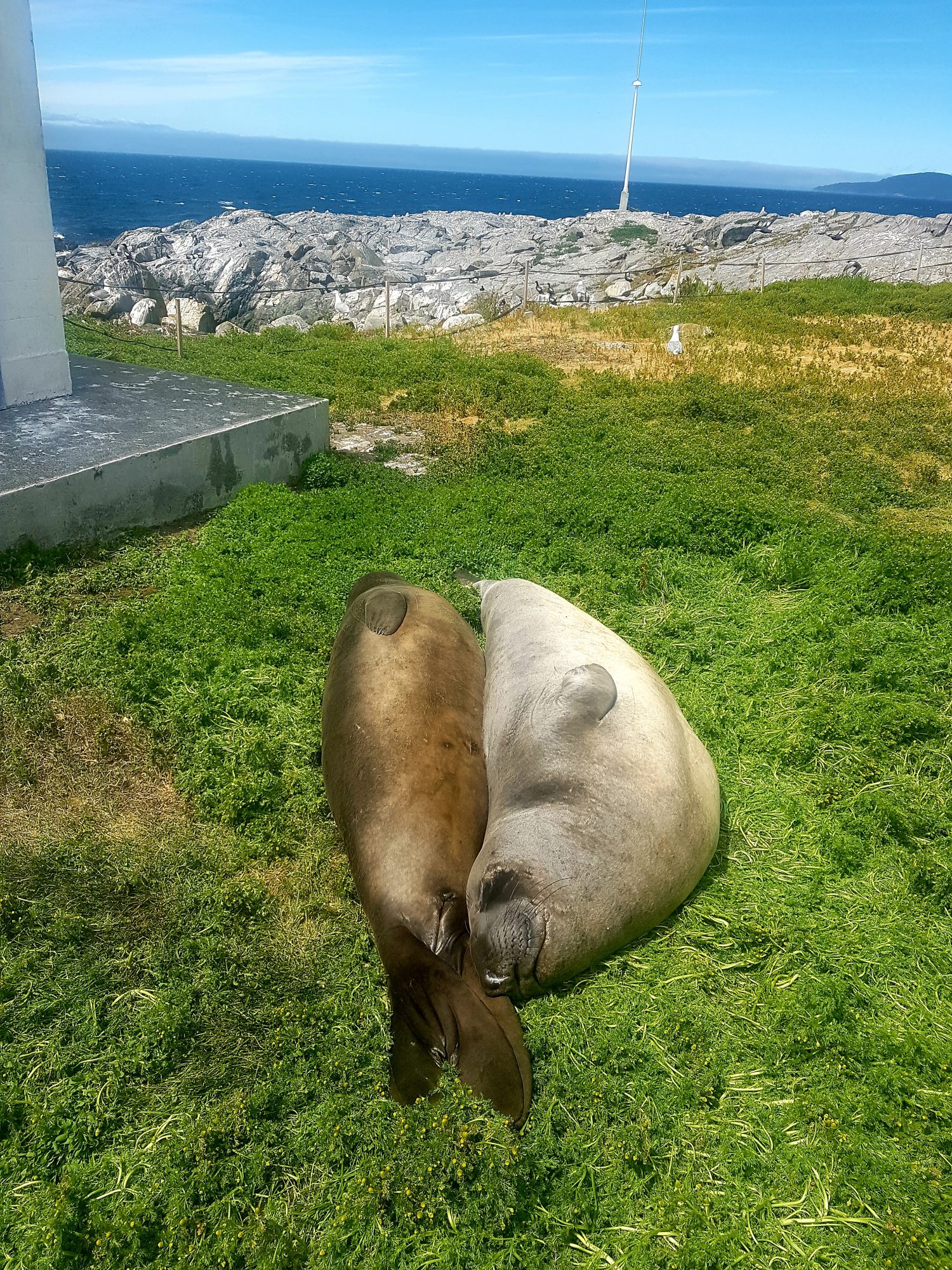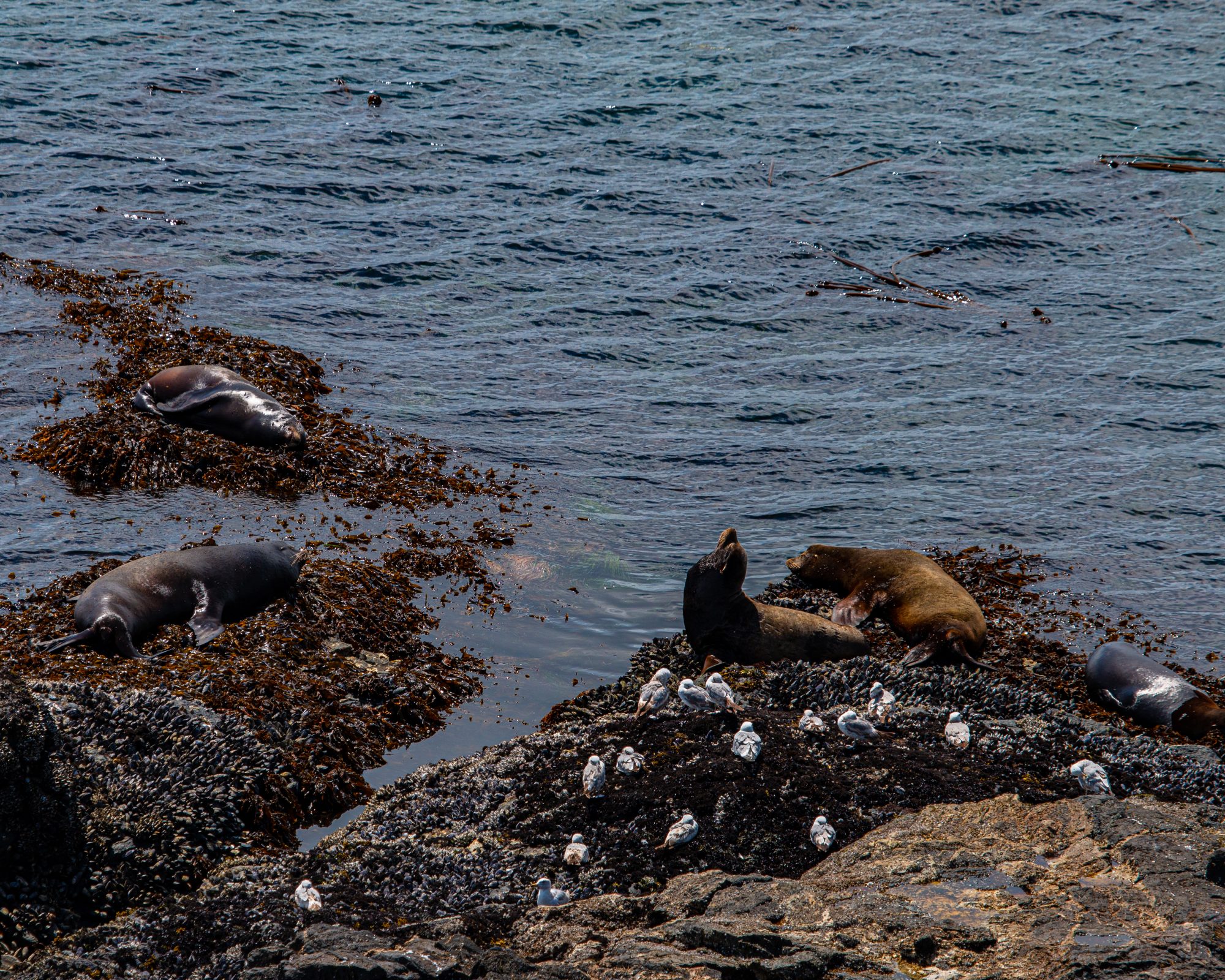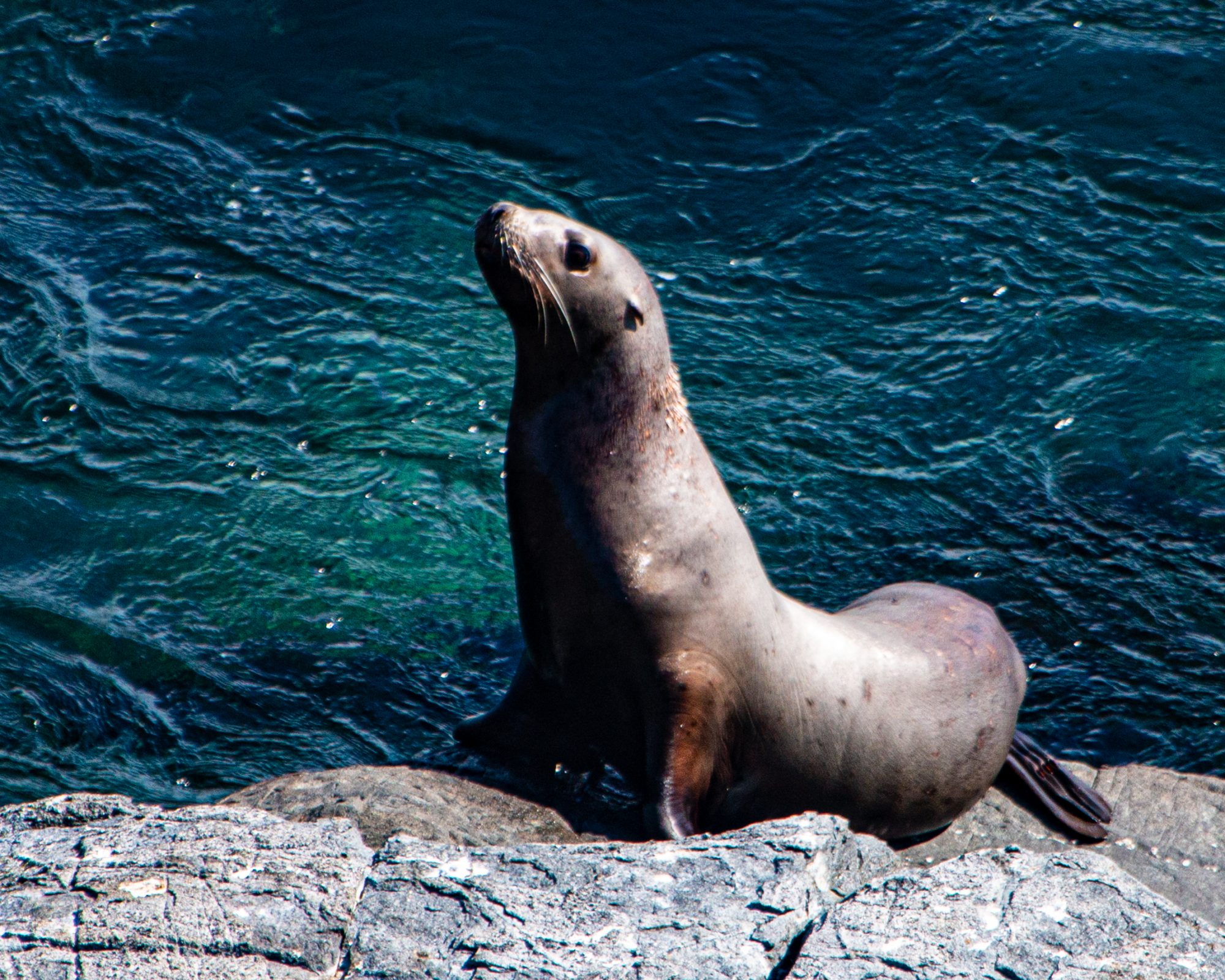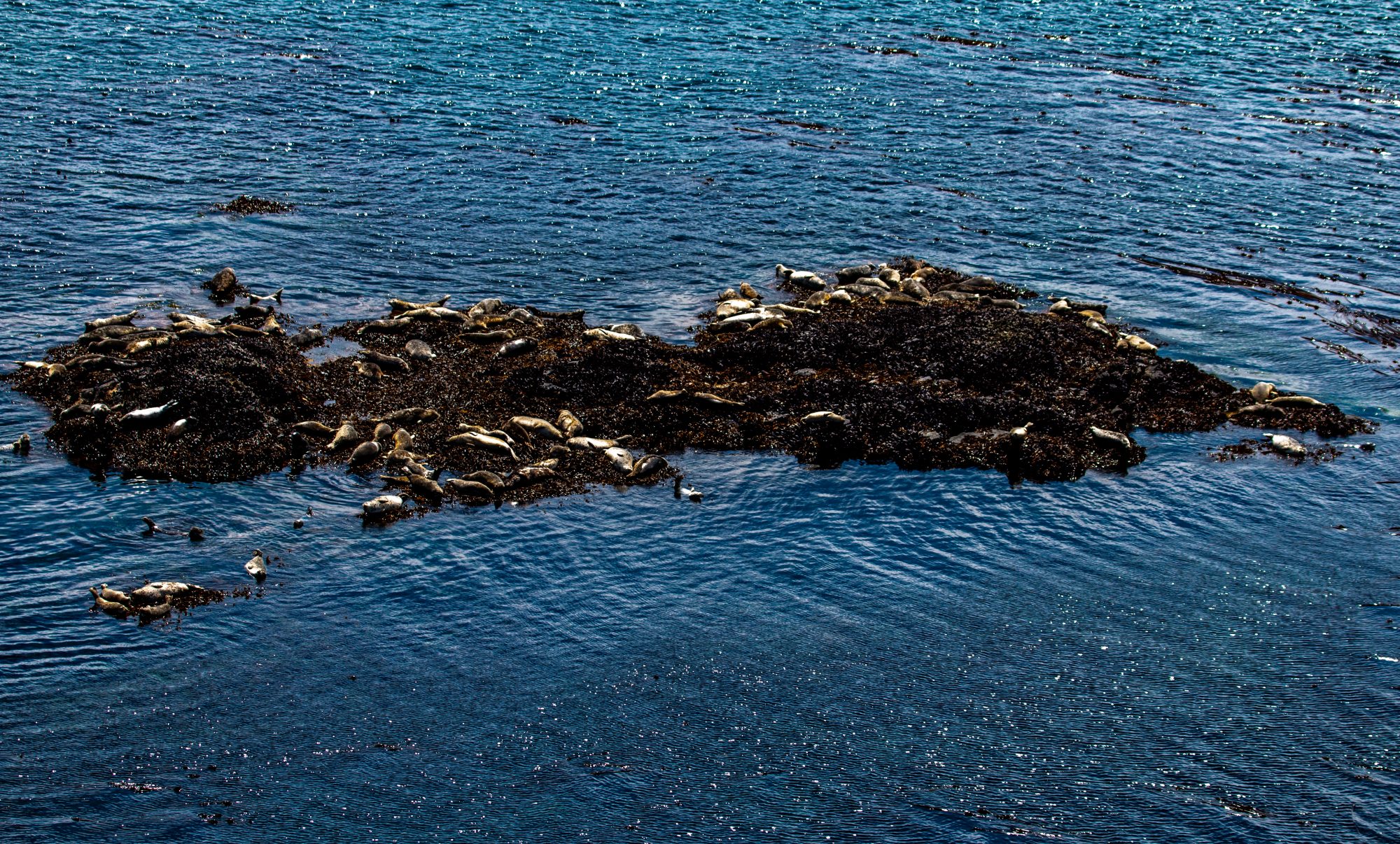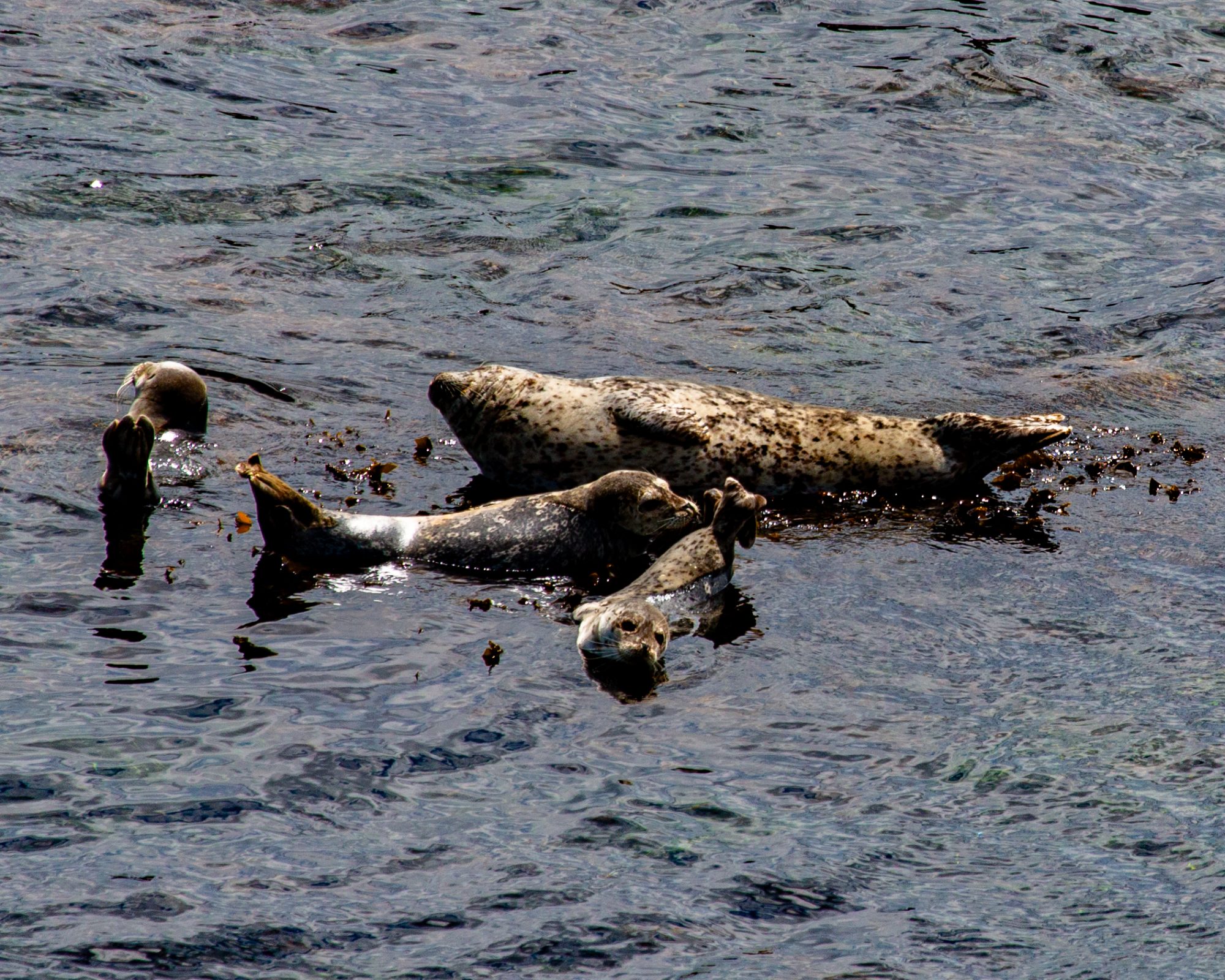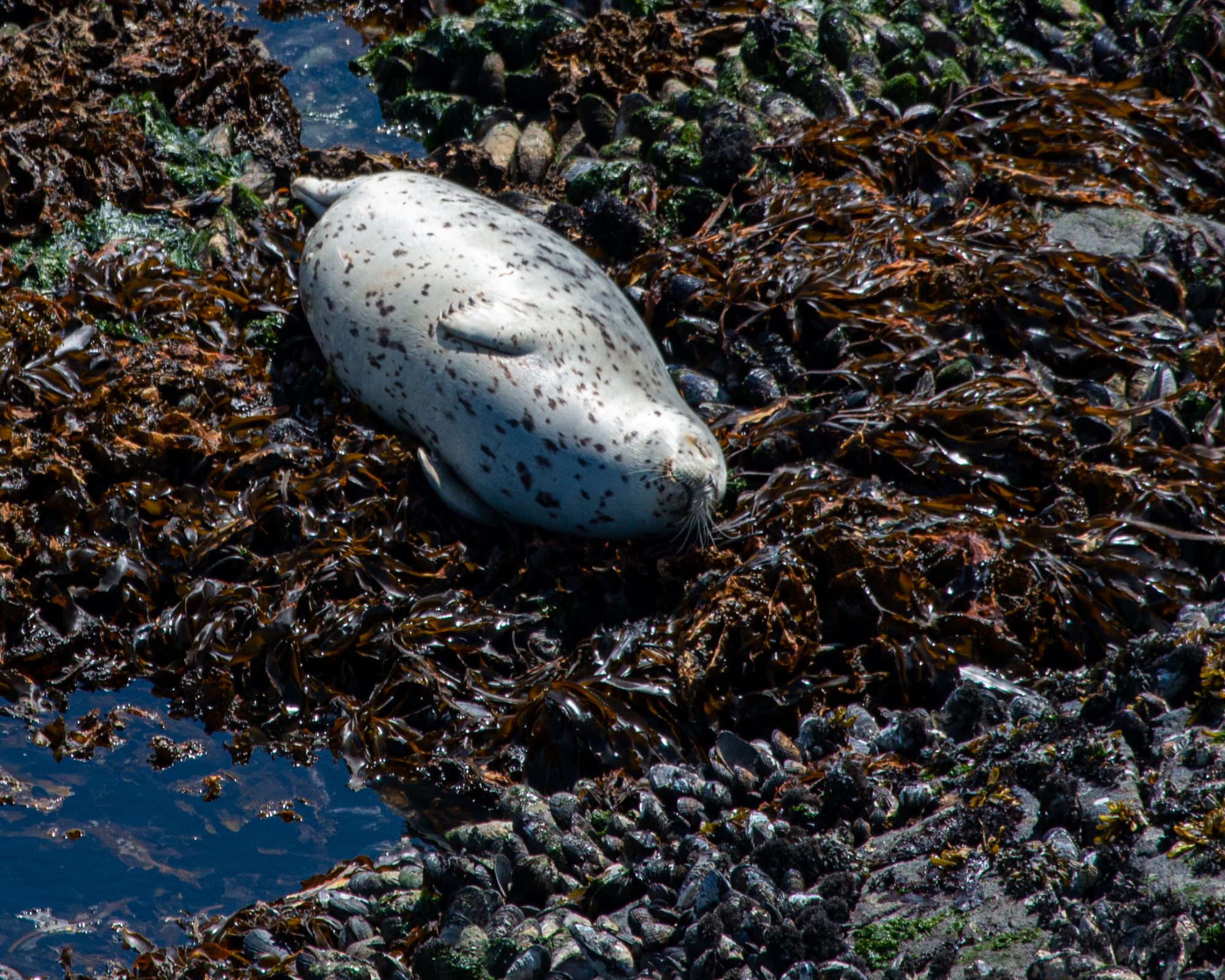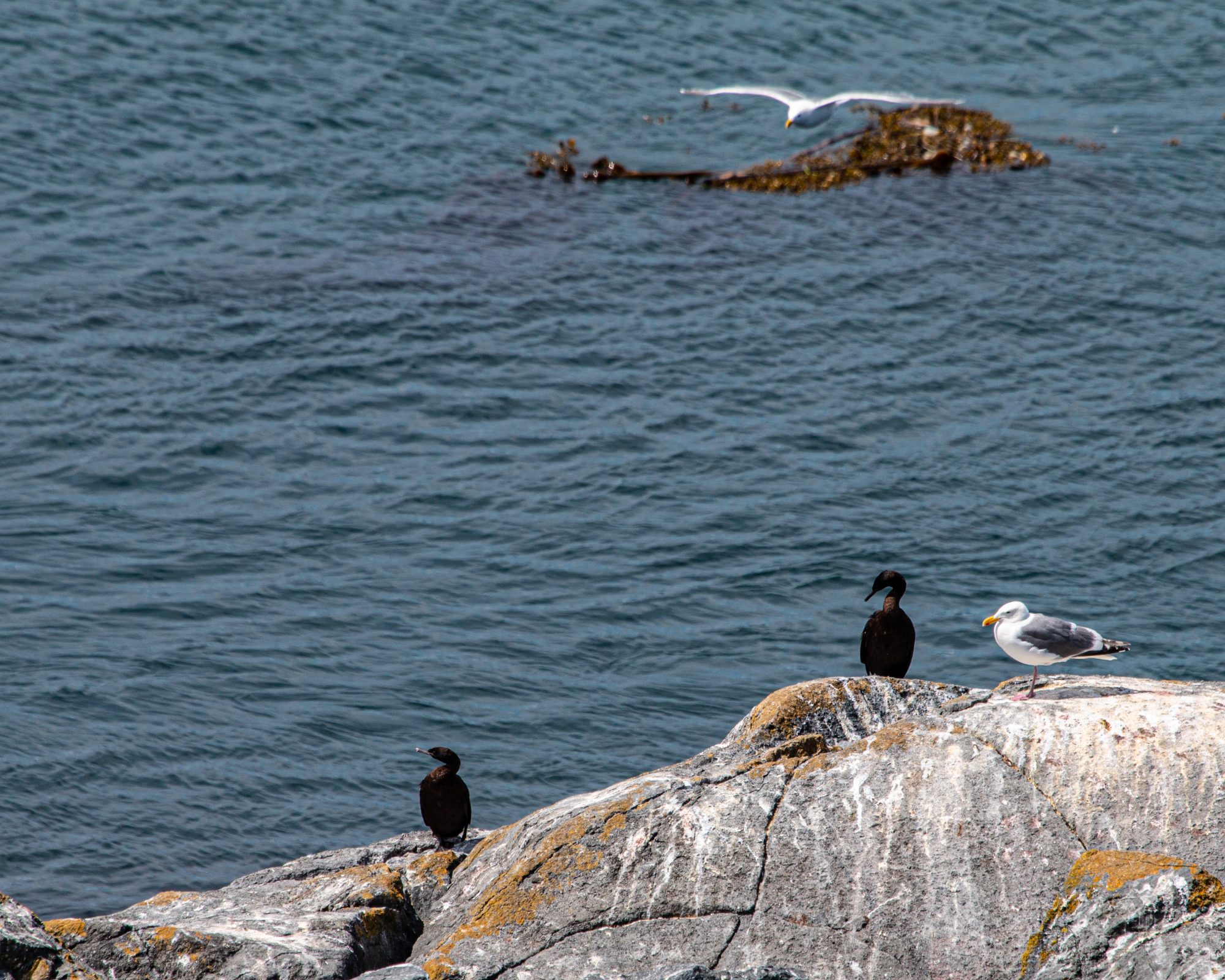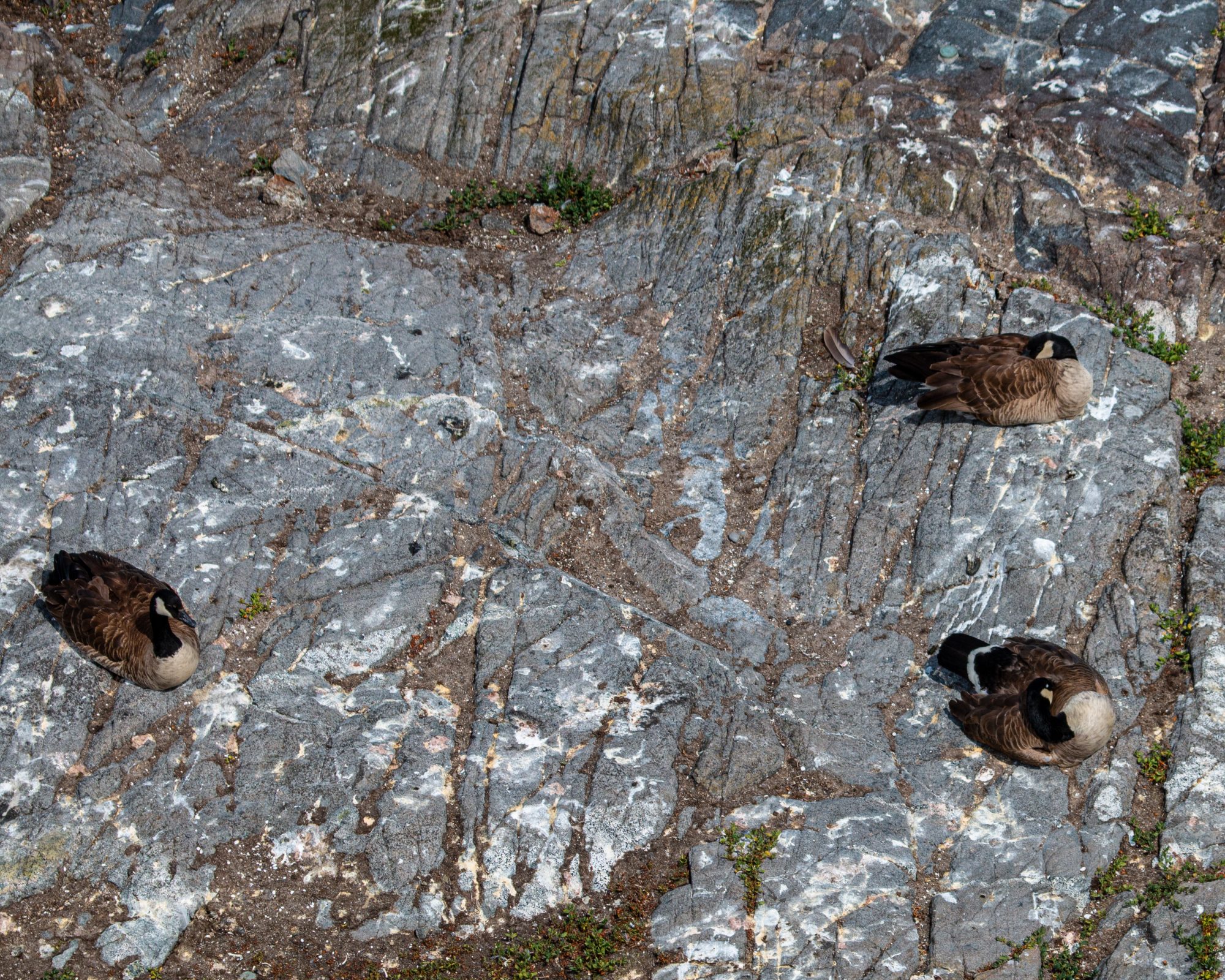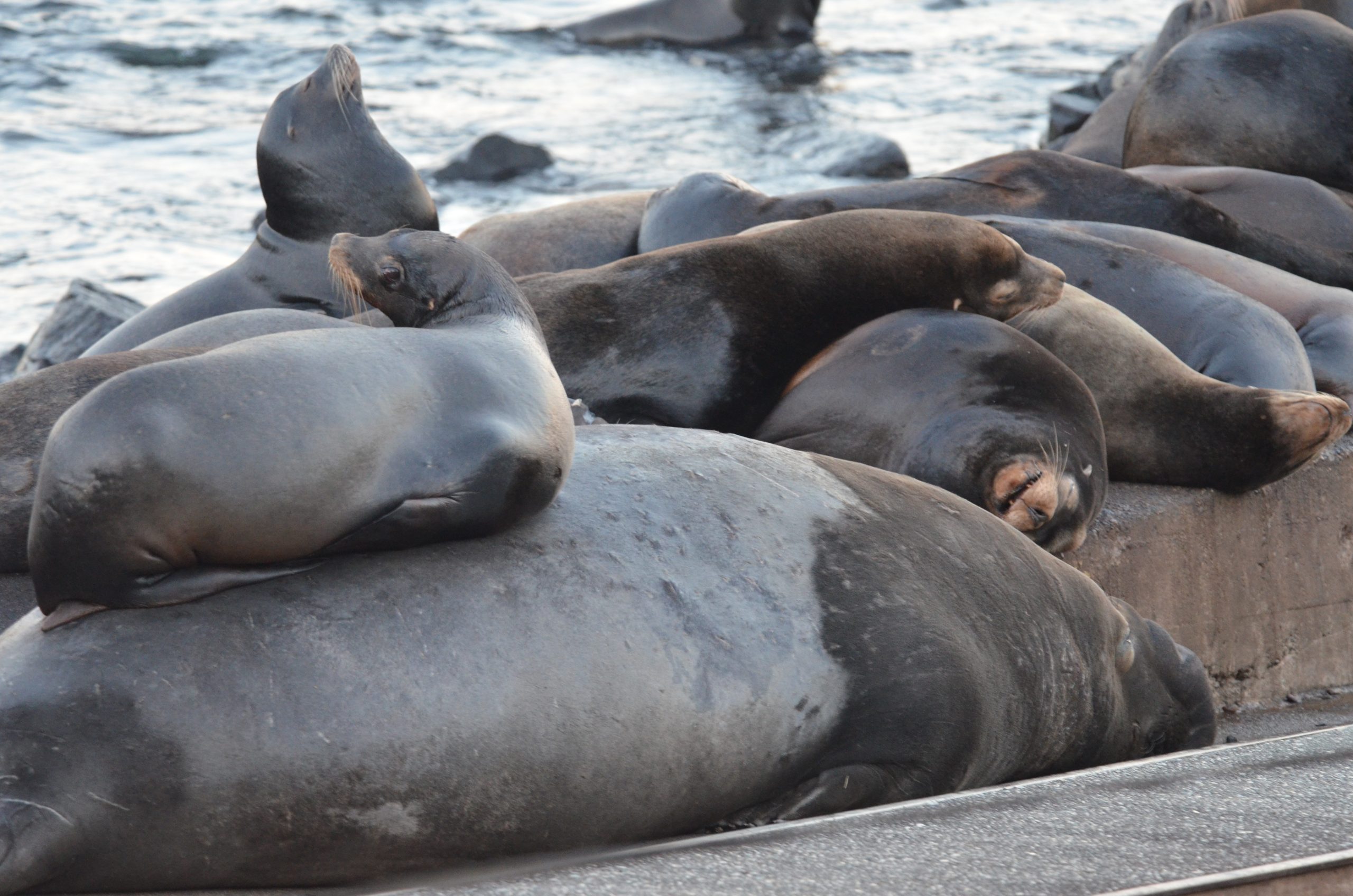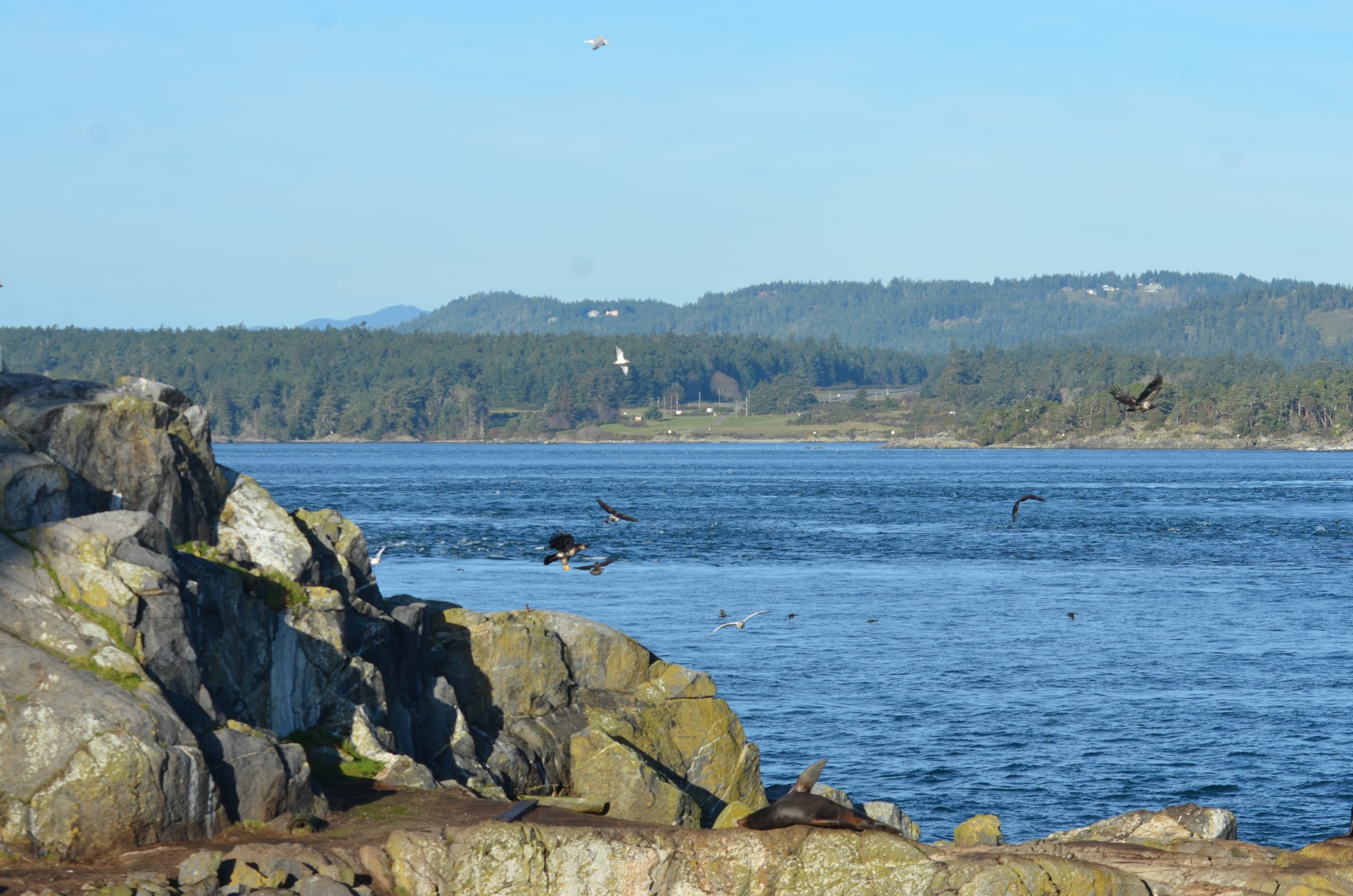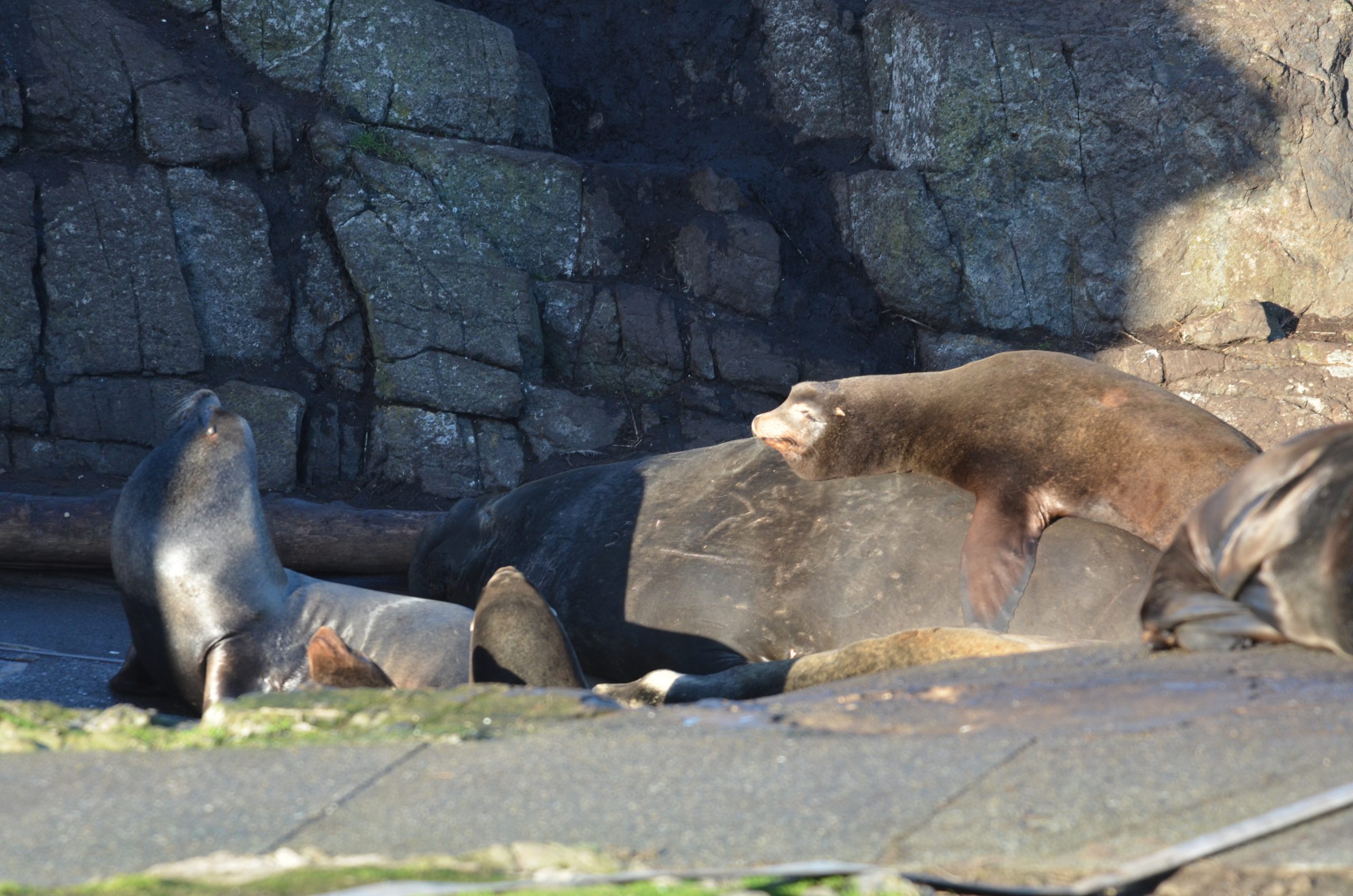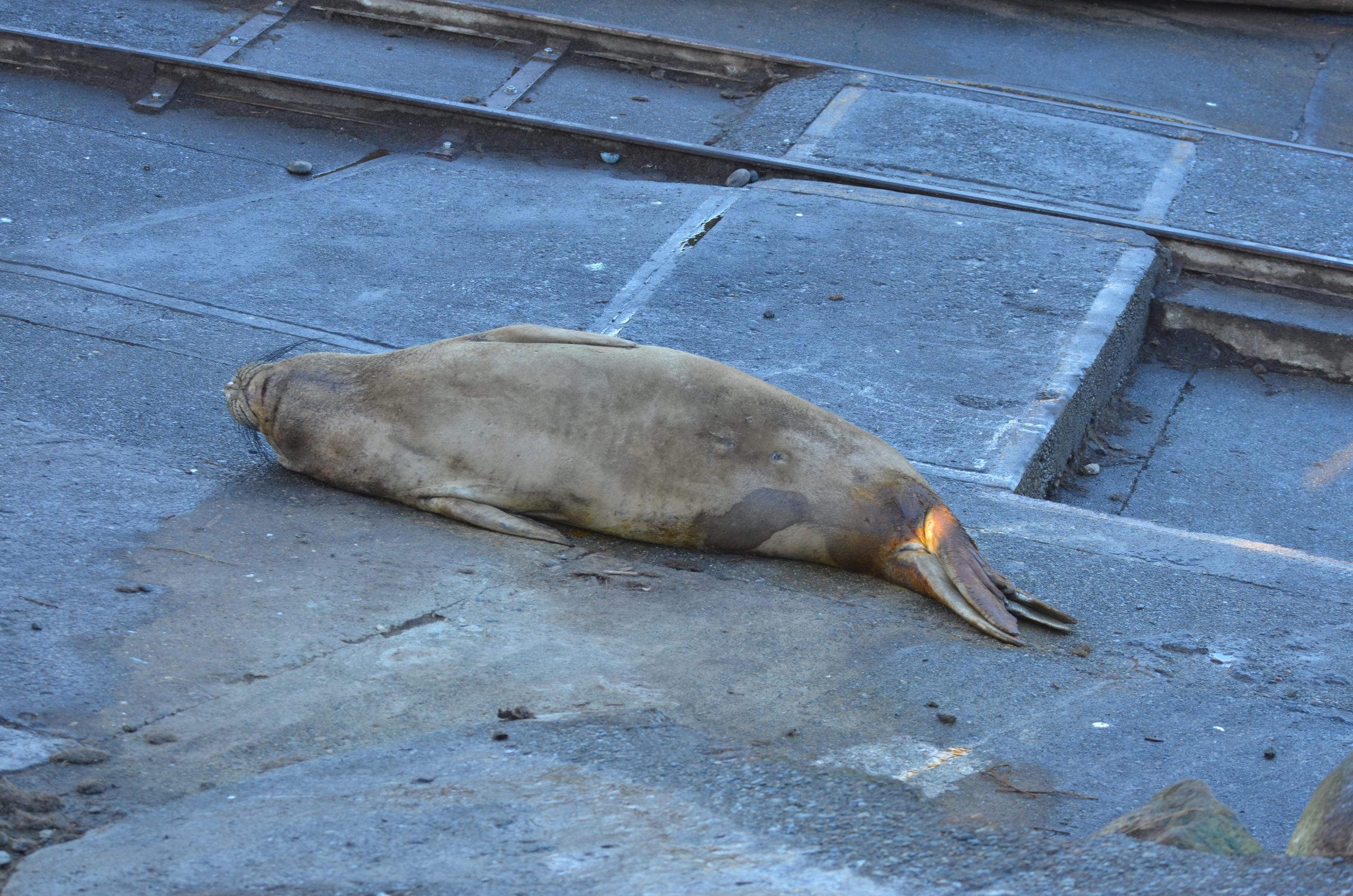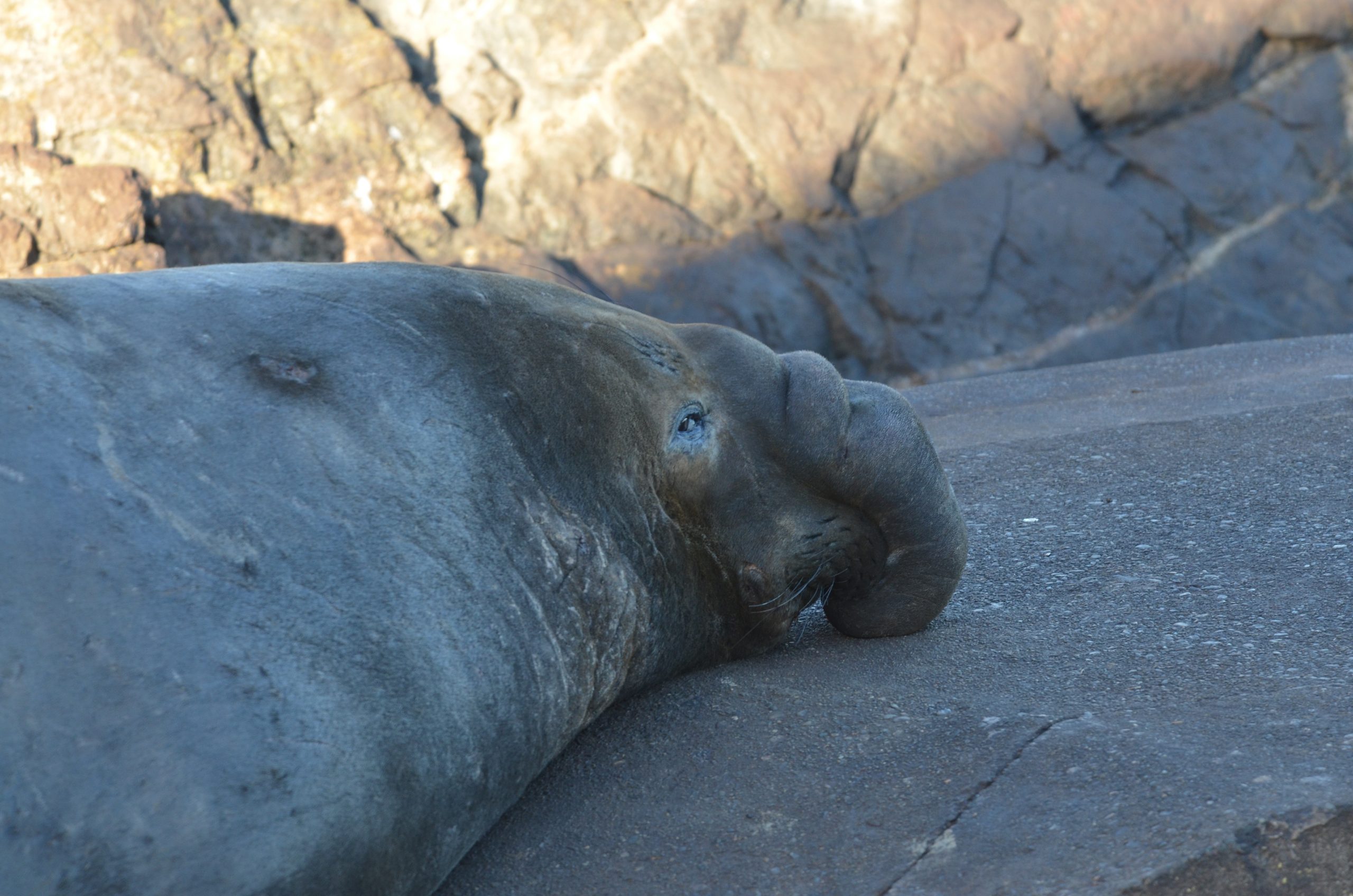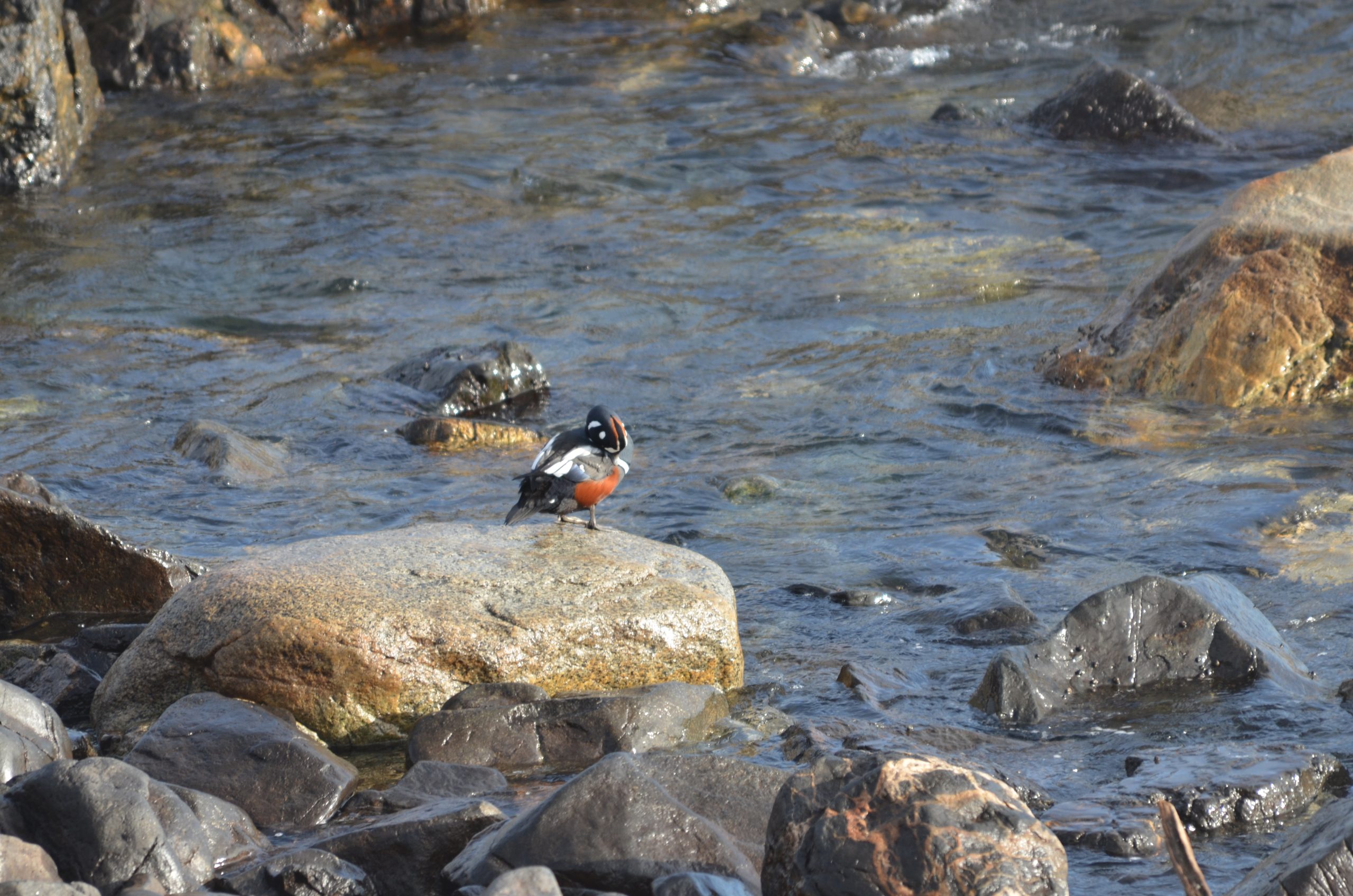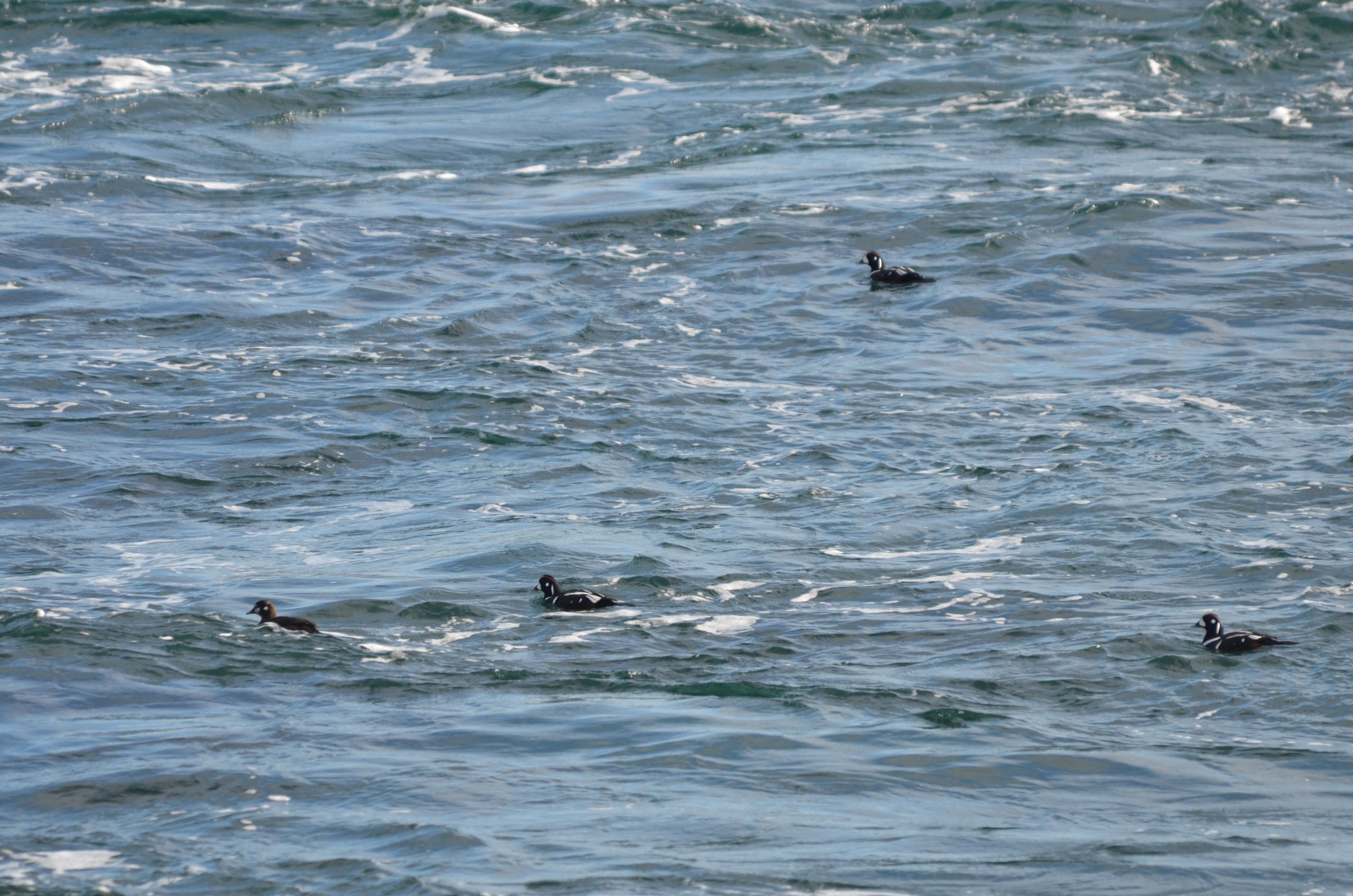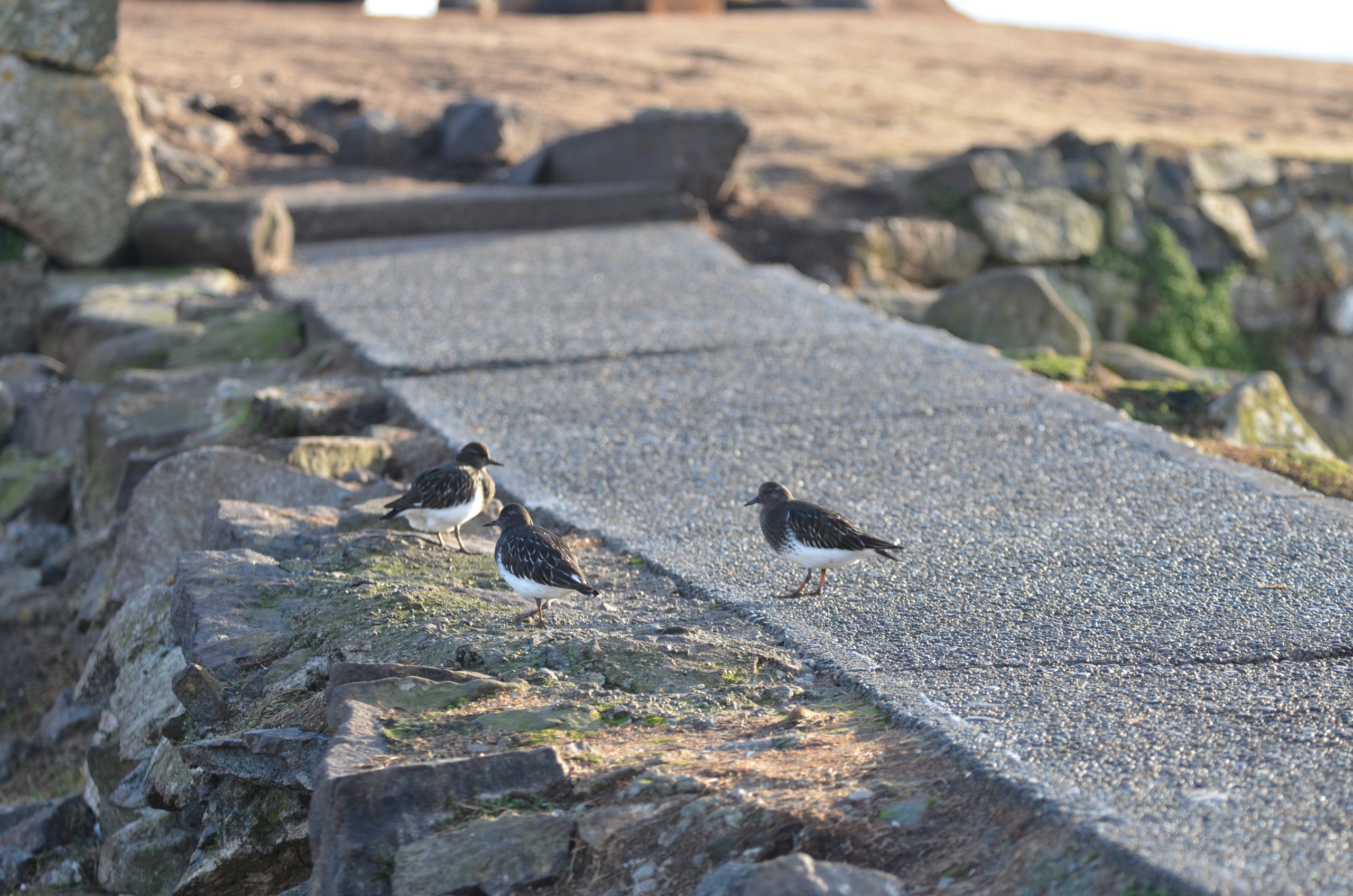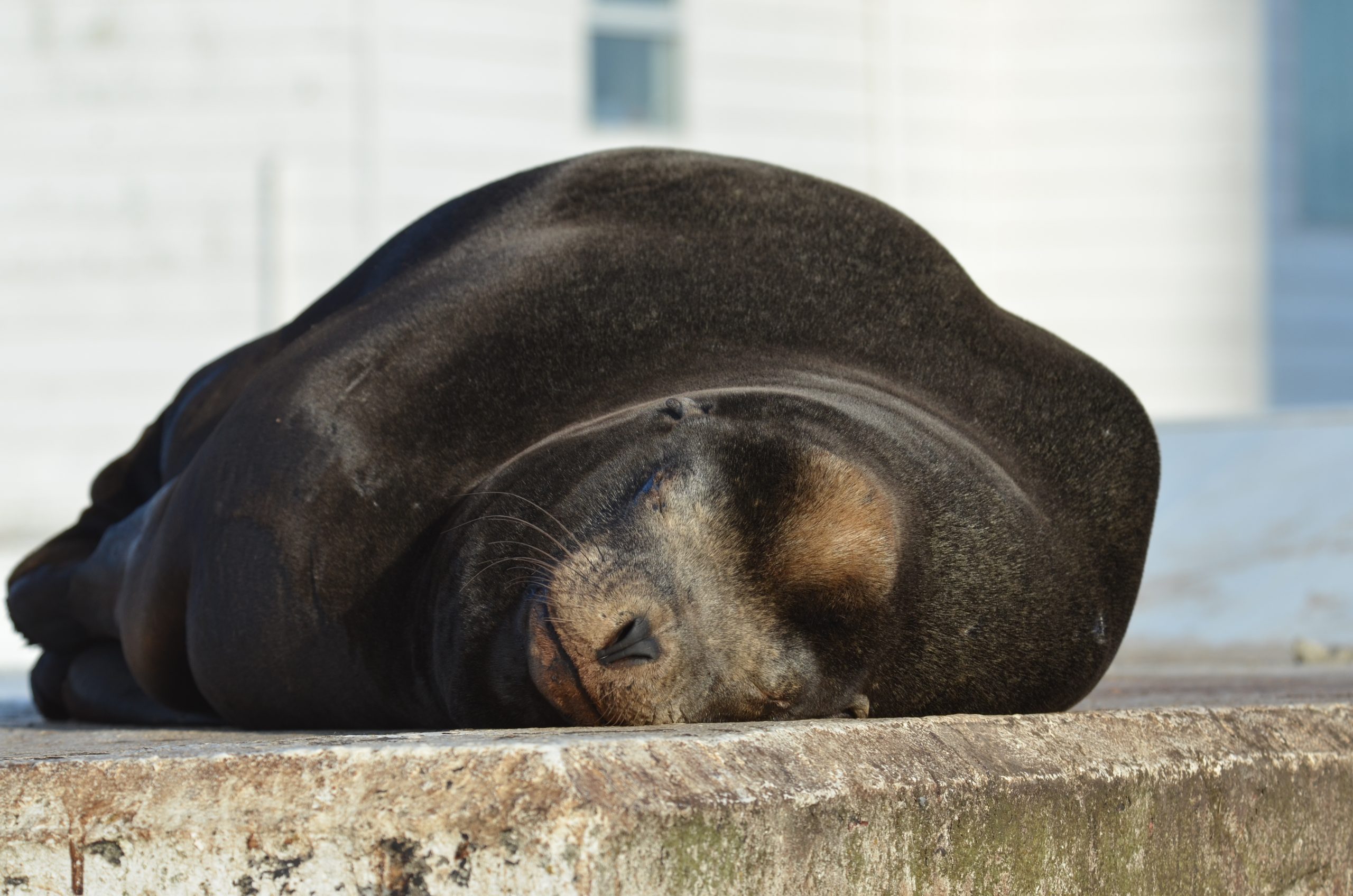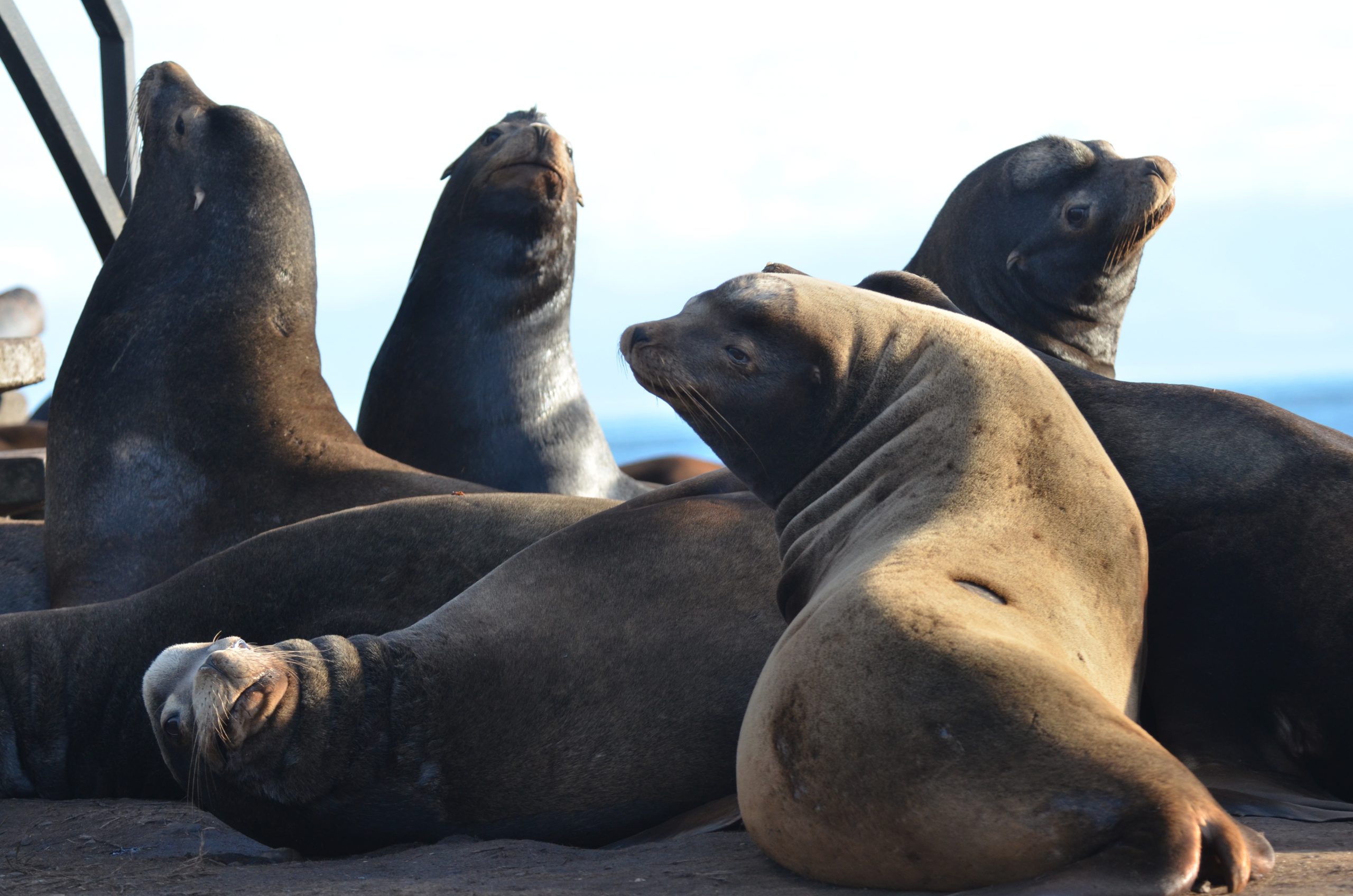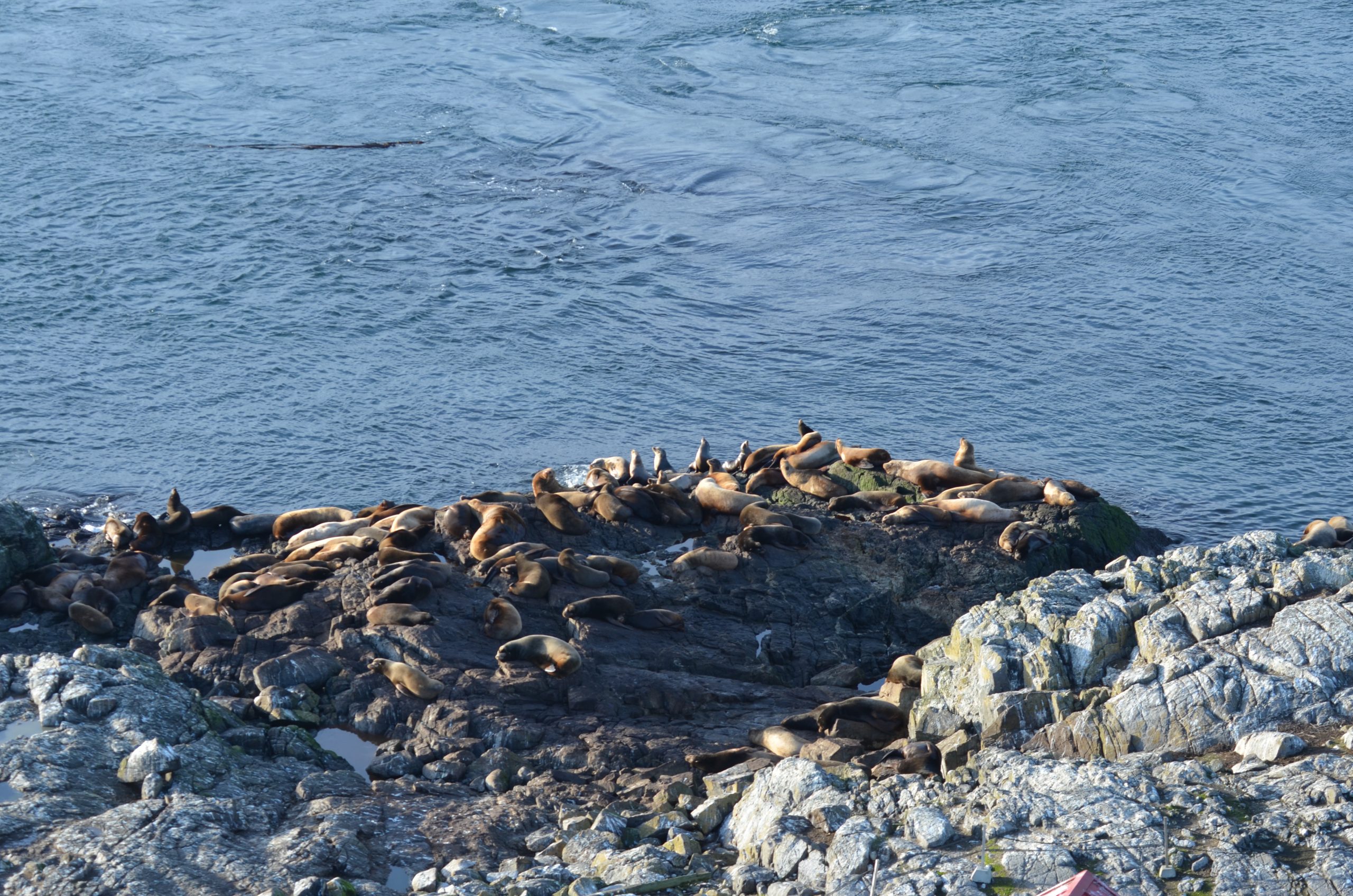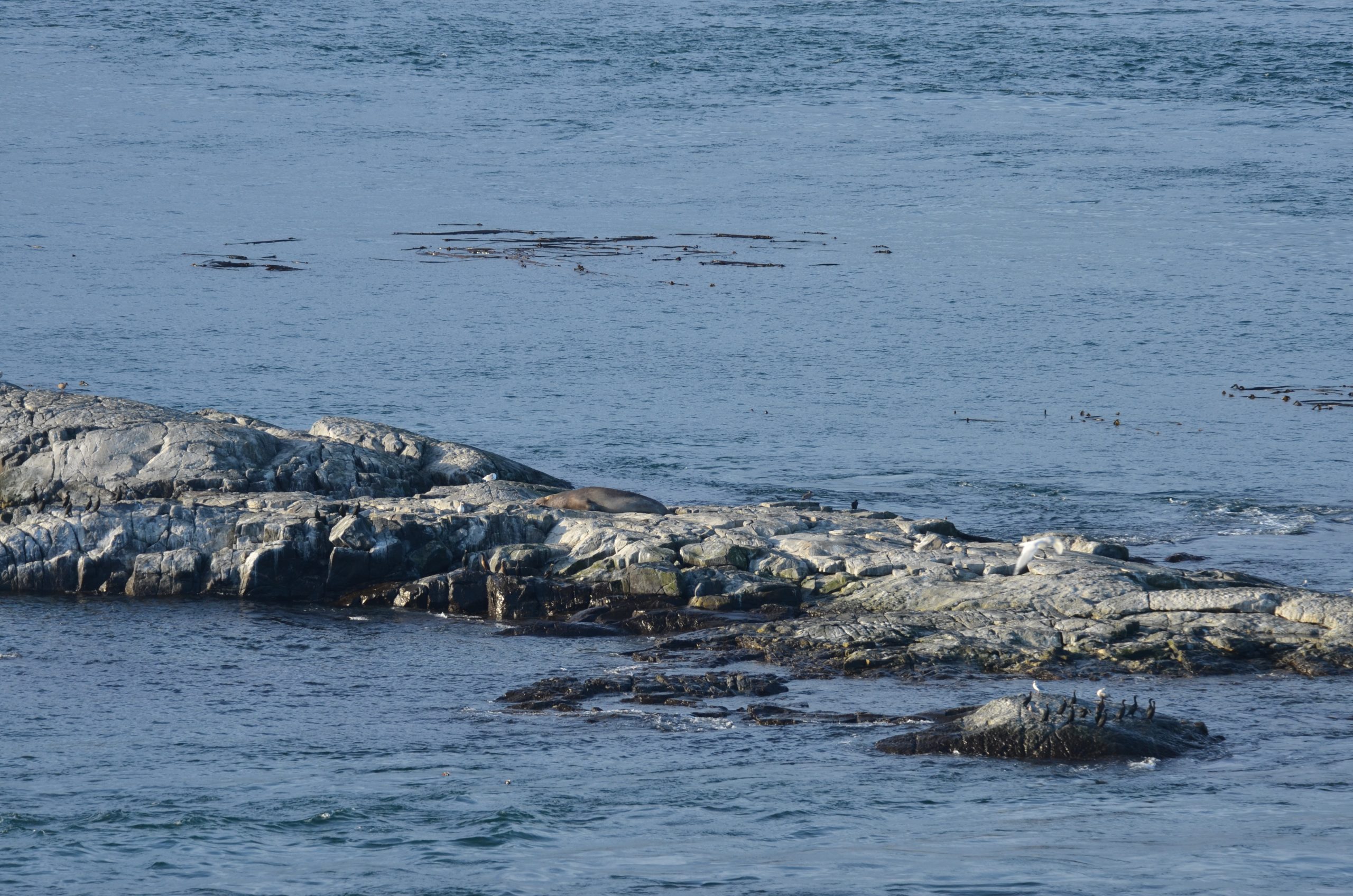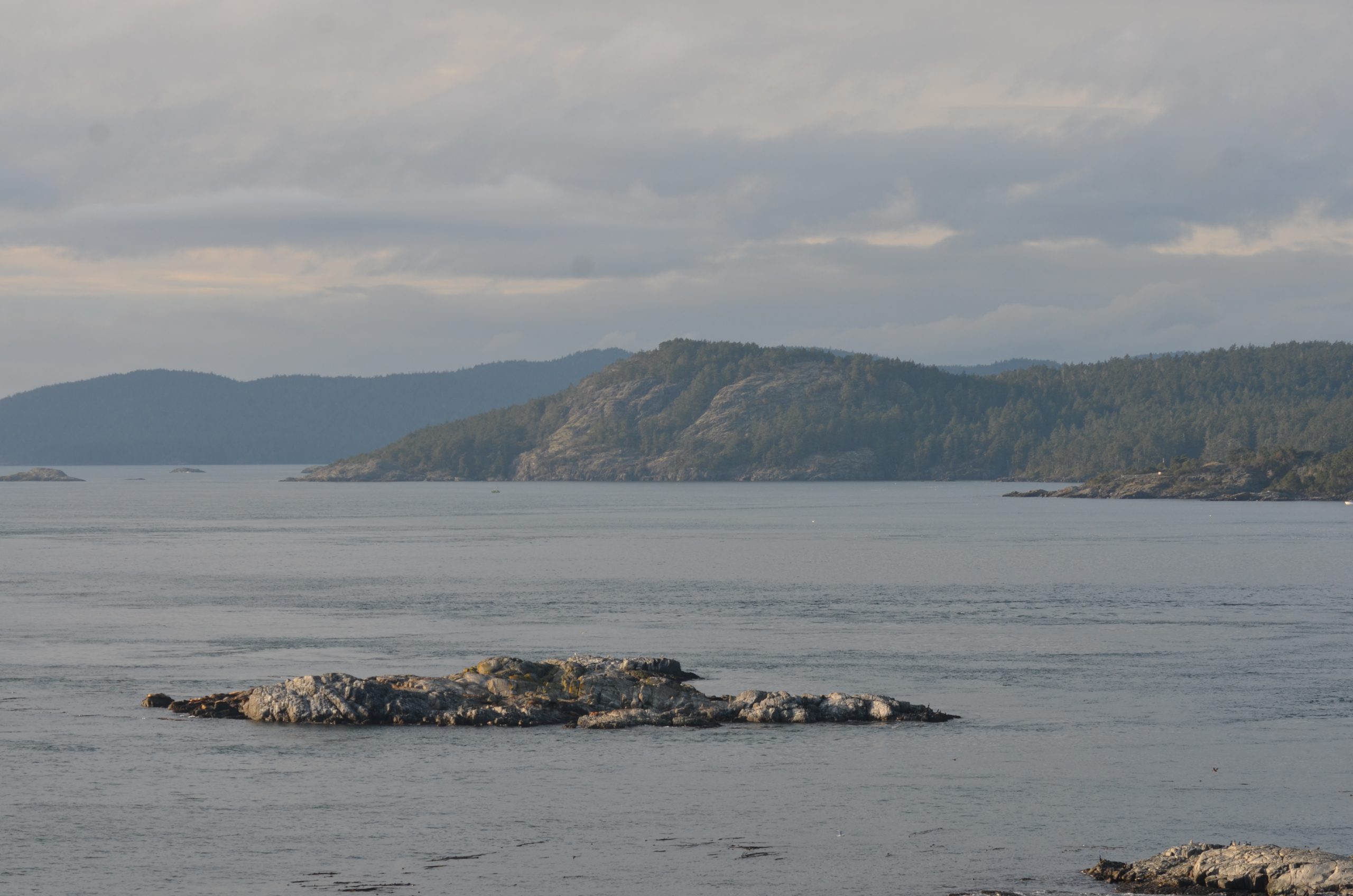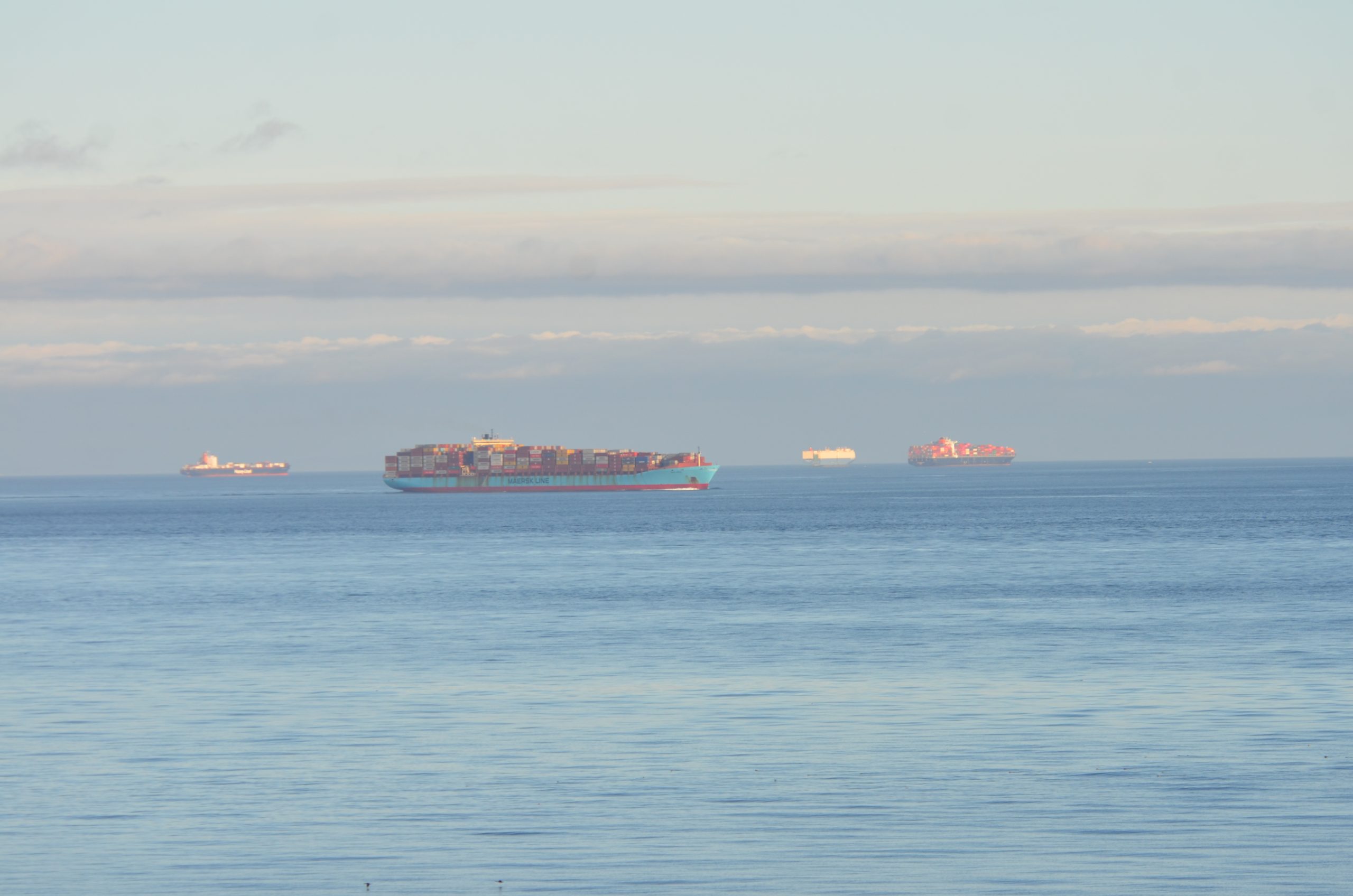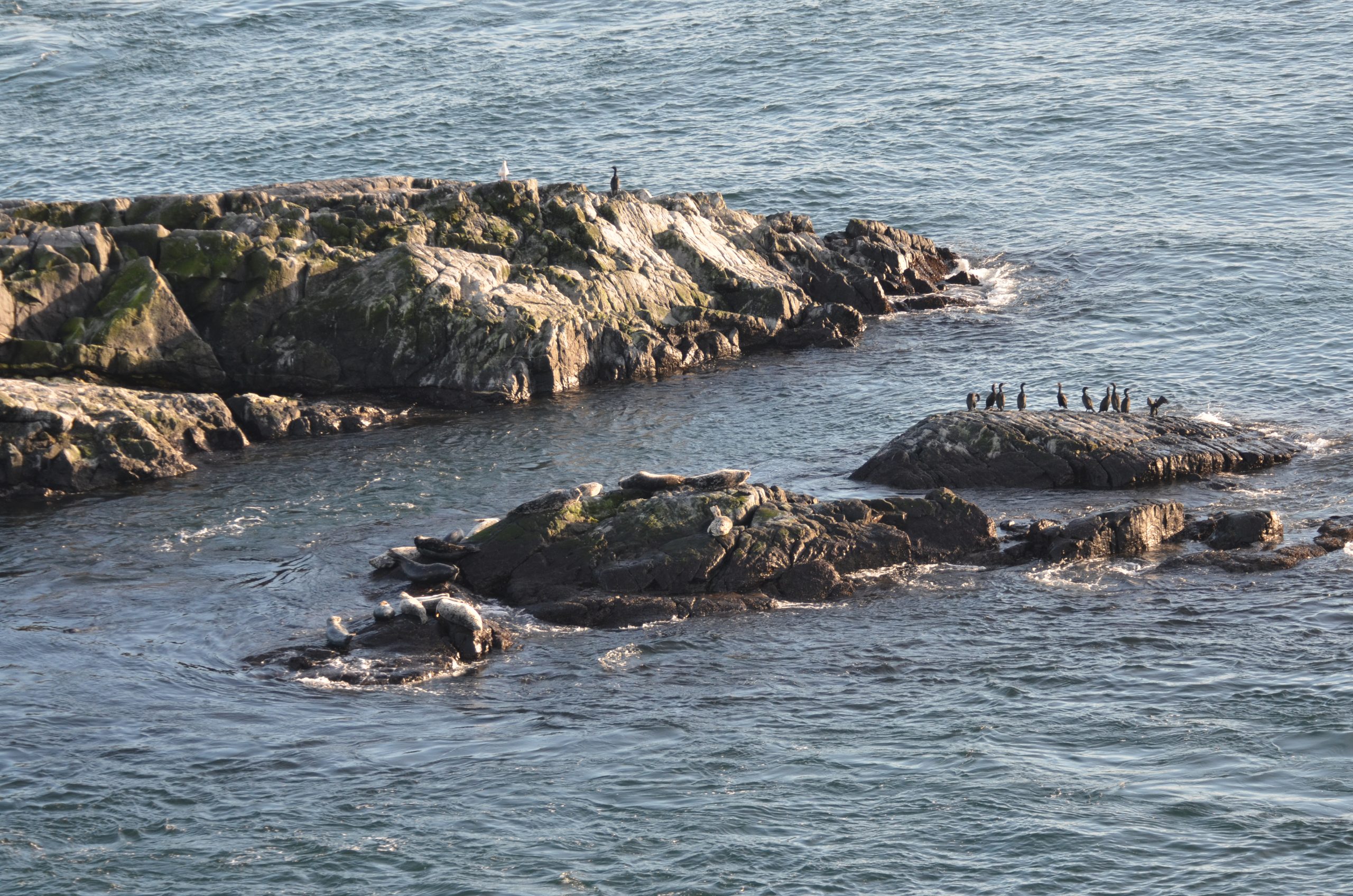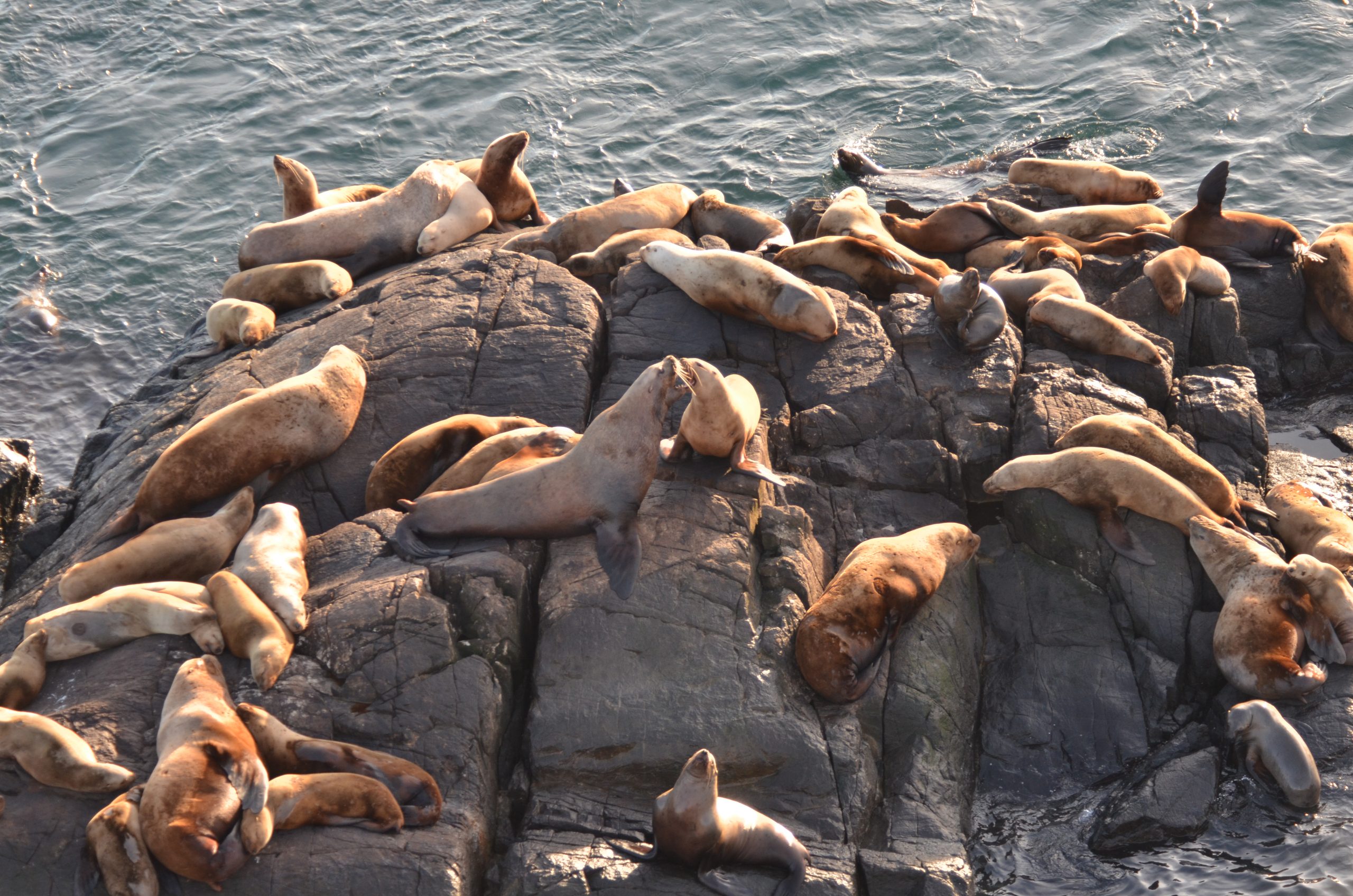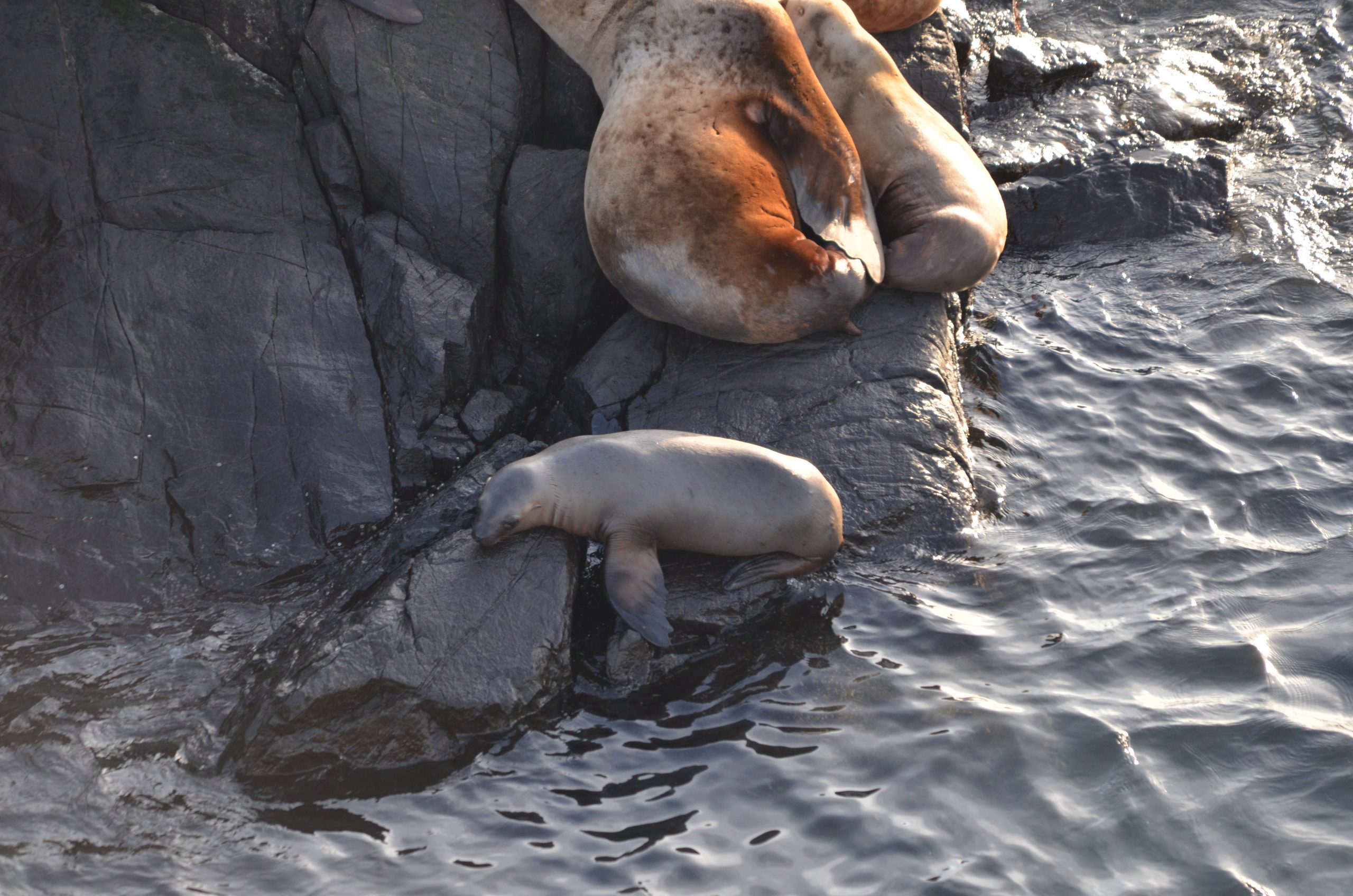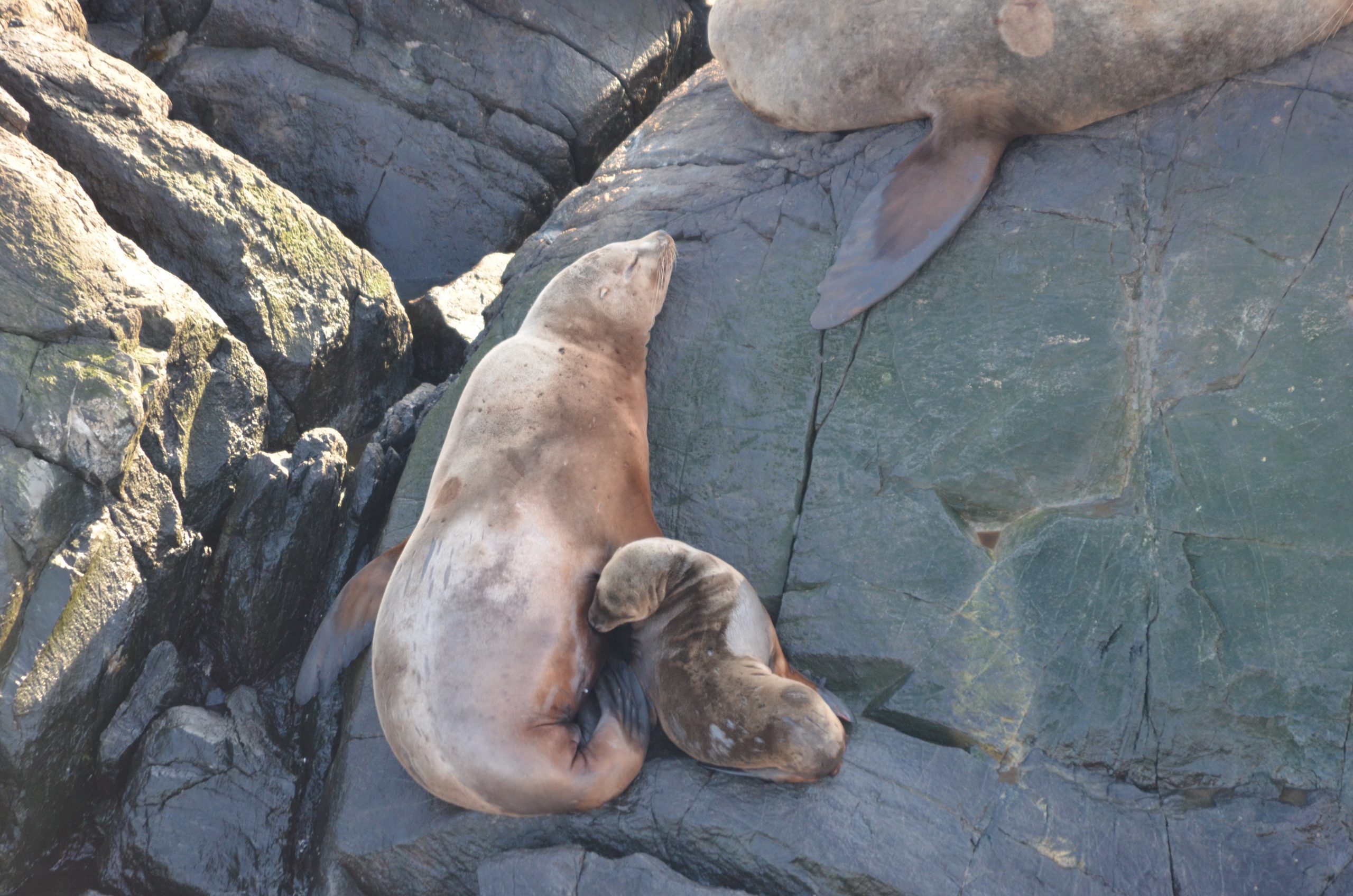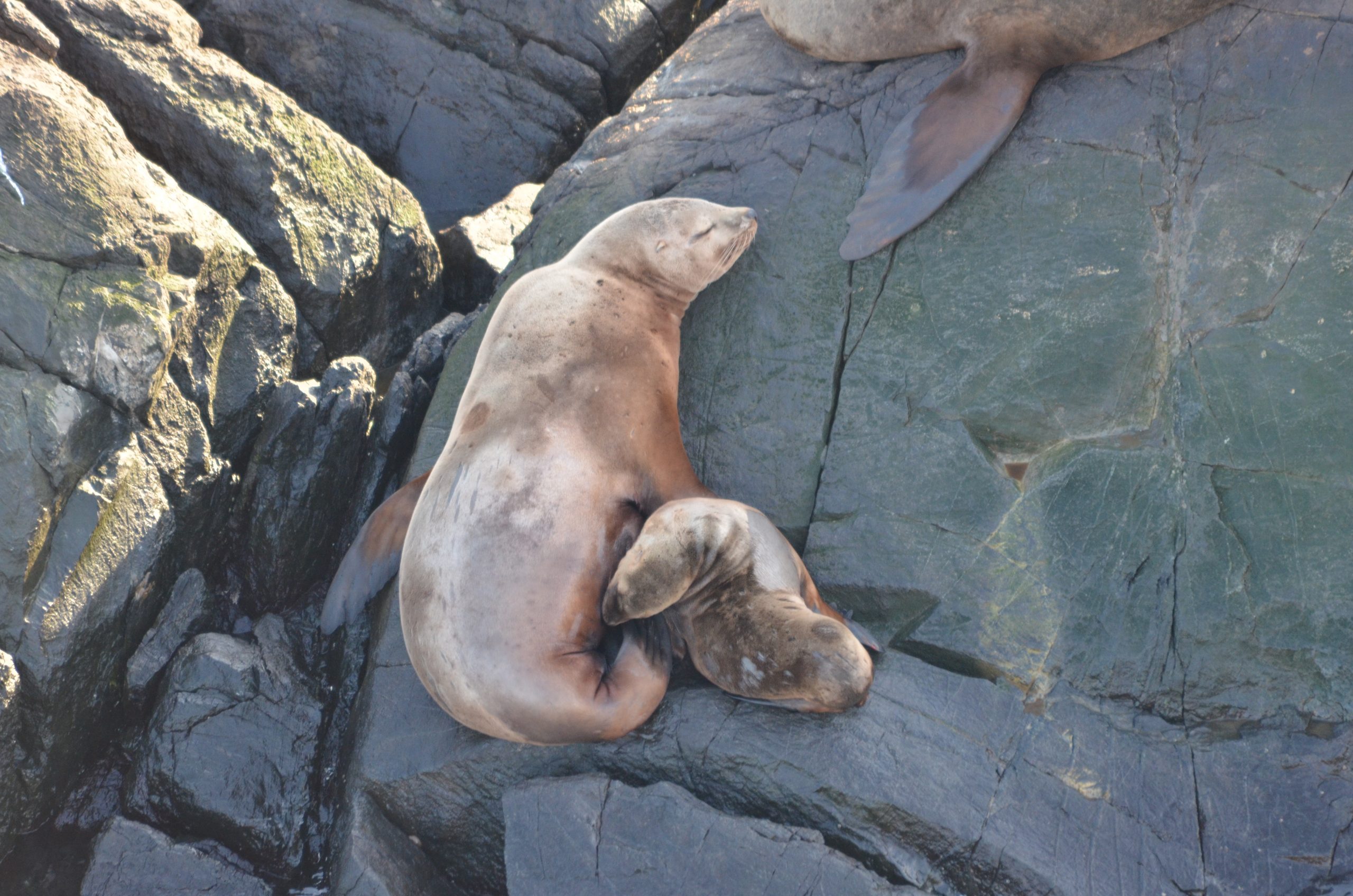Ecological Notes:
- I am seeing more gull chicks everyday. Many gull parents are frequently feeding their two or three chicks.
- I seem to have come to an understanding with some gulls. If I approach near them on the path at a slow speed, we both ignore each other. There are other gulls who freak out if I even look in their direction. As I do necessary work, I limit my movements around the island and avoid certain paths that have nearby nests and chicks.
- See photo gallery and captions for more details on the ecological happenings over the past two days.
Weekly Census Results:
- Elephant seal (juvenile male): 1
- Steller/Northern sea lions: 4
- Harbour seals: 113
- Bald eagles: 6 (4 juveniles and 2 adults)
- Canada geese: 11 (7 adults, 4 goslings)
- Black oystercatchers: 10 (8 adults, 2 chicks – probably more that are camouflaged)
- Cormorant: 2
- Glaucous-winged gulls nesting: 172
- Glaucous-winged gull chicks: approximately 50 (also hard to spot in the grass and under their parents)
- Gulls not nesting (some glaucous-winged and some other species) on the south end of the island and outer islands: 97
- Pigeon guillemots: 123
- Surfbirds: 3
- Killdeers: 2
- Western sandpiper: 1
Weather:
- Yesterday (July 5):
- Sky: Fog in morning, Part Cloudy in afternoon
- Wind: W 0-12 kts
- Sea: calm
- Temperature Low 11oC, High 17oC
- Today (July 6):
- Sky: Overcast in morning, Part Cloudy in afternoon
- Wind: W 8-22 kts
- Sea: rippled in morning, 1′ chop in afternoon
- Temperature Low 12oC, High 15oC
Visitors:
- No visitors over the past two days
Facility Work:
- Installed bird deterrents on new solar panels, scrubbed and squeegeed solar panels, emptied composting toilet, fixed screen door at basement entrance.
Vessel Traffic:
- Many Canadian and American ecotour boats have been nearby and heading through the waters of the ecological reserve.
Here are photo highlights from the past two days. Click on the photos for larger views and captions.
- My view out the south side of the house yesterday morning. I saw an ecotour boat do a 180 on the other side of the Rosedale Reef bouy, which tipped me off to the presence of orcas.
- Orcas on the south side yesterday
- Orcas on the south side yesterday
- The stealthy elephant seal watches from the water near the jetty, as I head out to collect the sea water data last evening.
- A backlit juvenile bald eagle this morning on the east side of the island. I heard lots of commotion in the gull community, so looked around to see three bald eagles perched on the east side and two on the South Rocks.
- Clean solar panels! Even on cloudy days, they can absorb enough kilowatts to power the load of the island. The sunny days are a treat to top up the batteries to 100%.
- The centre of the island where all the paths meet is home to lots of calendula and a very territorial gull.
- Pigeon guillemots in the South Channel
- Harbour seals looking like sea sausages on the South Rocks.
- A gull standing guard as one of their chicks ducks into the calendula and thistles at the edge of the path down from the lighthouse. I don’t take this path because there are a few sets of chicks nearby.
- A gull and chick sharing a meal where the elephant seals often like to lie. In the centre of the photo is a rolled up piece of seal fur that was moulted at some point this spring.
- More chicks being fed by parents.
- Three Steller/northern sea lions hauled out on Middle Rocks.
- A lone male Steller/northern sea lion on South Rocks.
- One of the three surfbirds I spotted today.
- Gulls on the south end of the island, along with one cormorant.
- The male elephant seal scratching in the centre of the island.
- Killdeer taking a break on the cistern pad.
- A bazaar of pigeon guillemots and a curious harbour seal in East Bay.
- A western sandpiper near the centre of the island.

